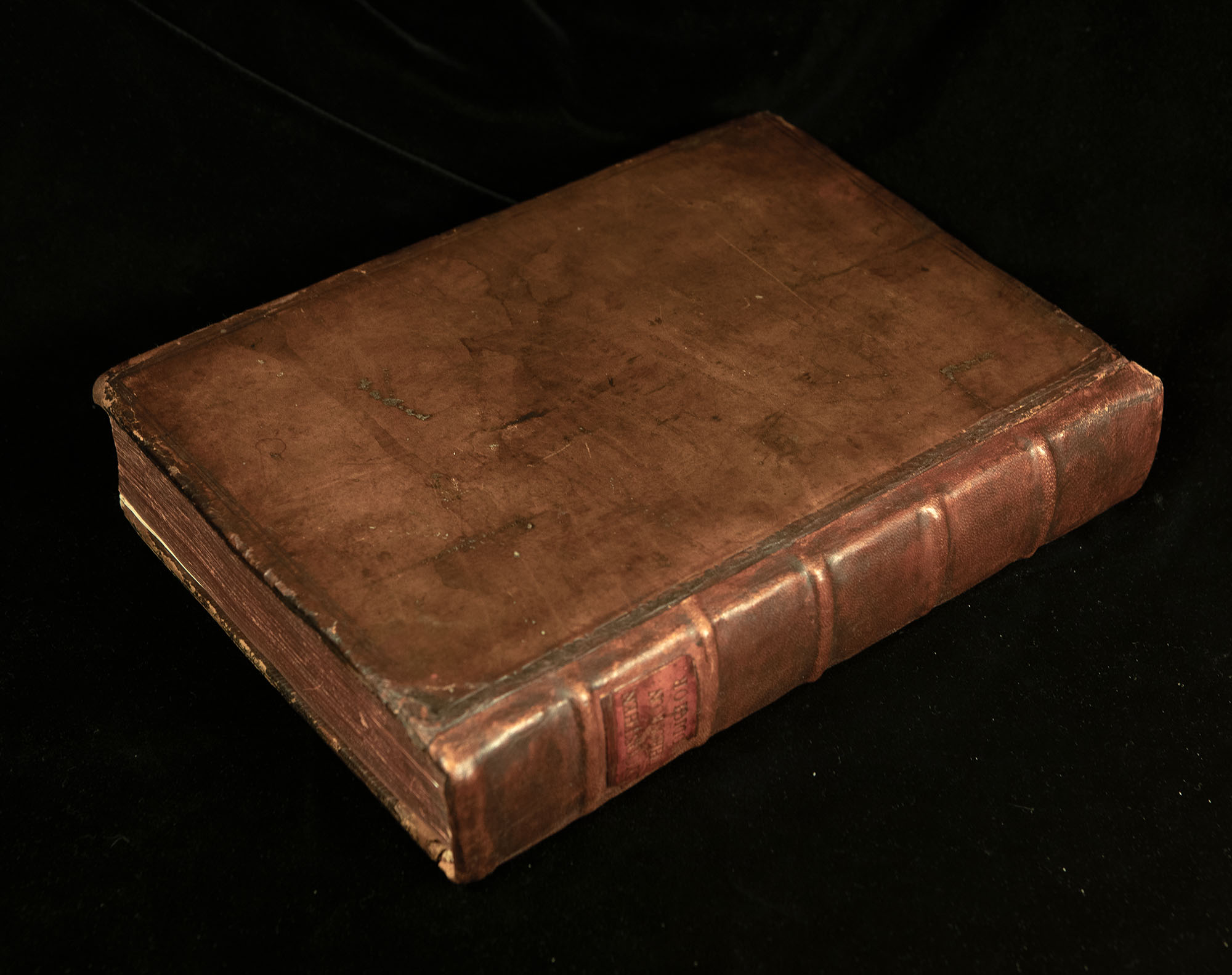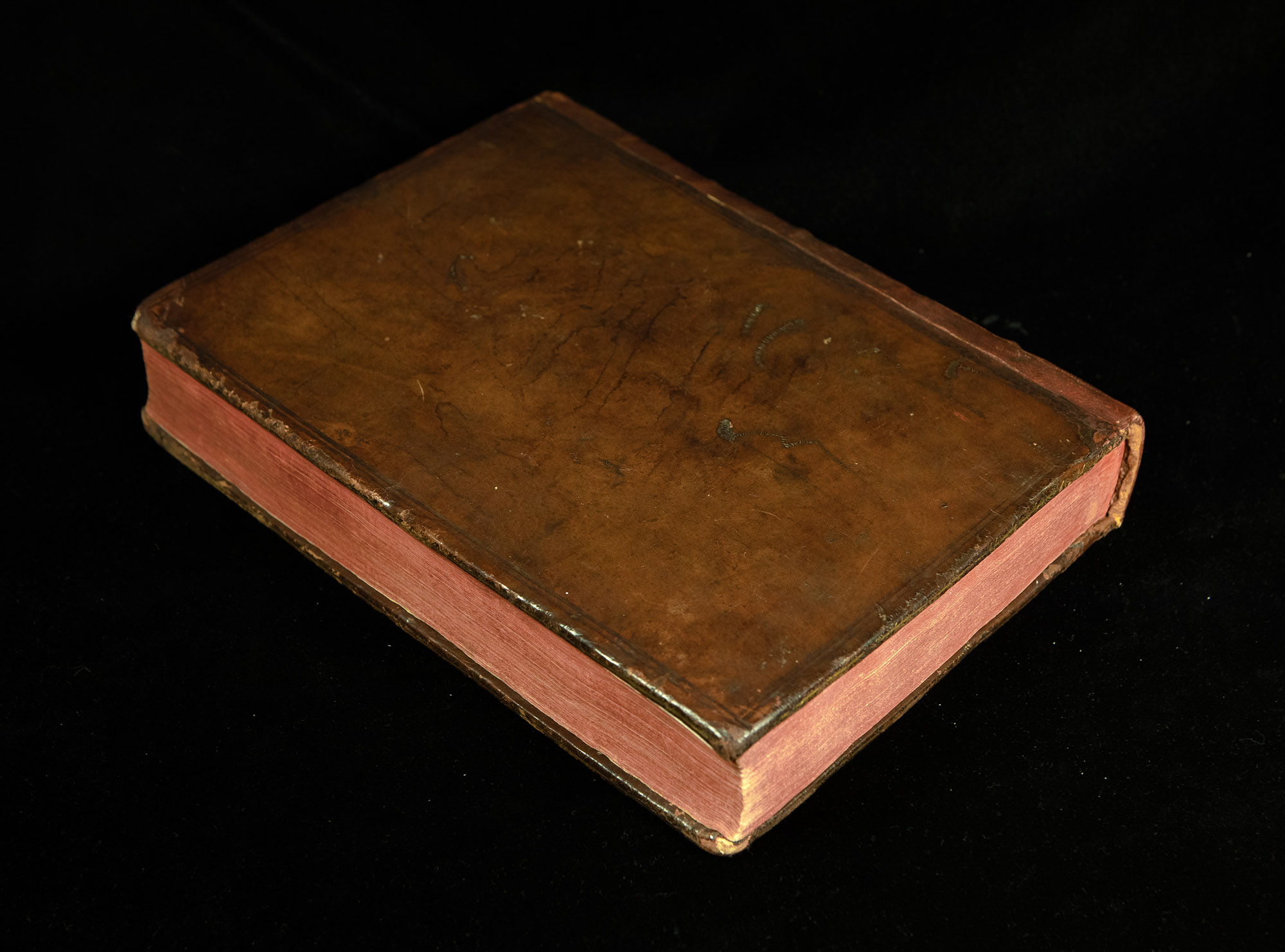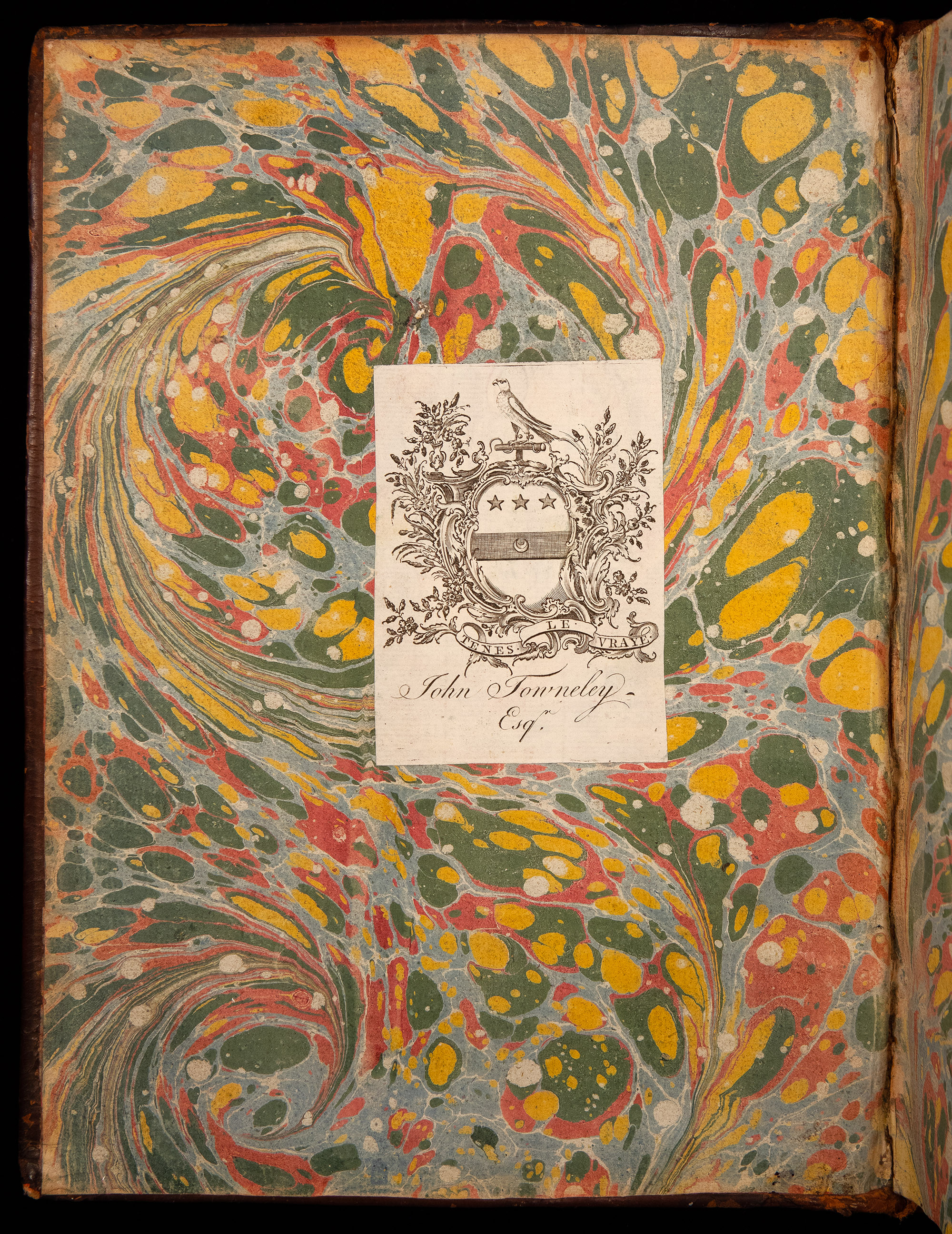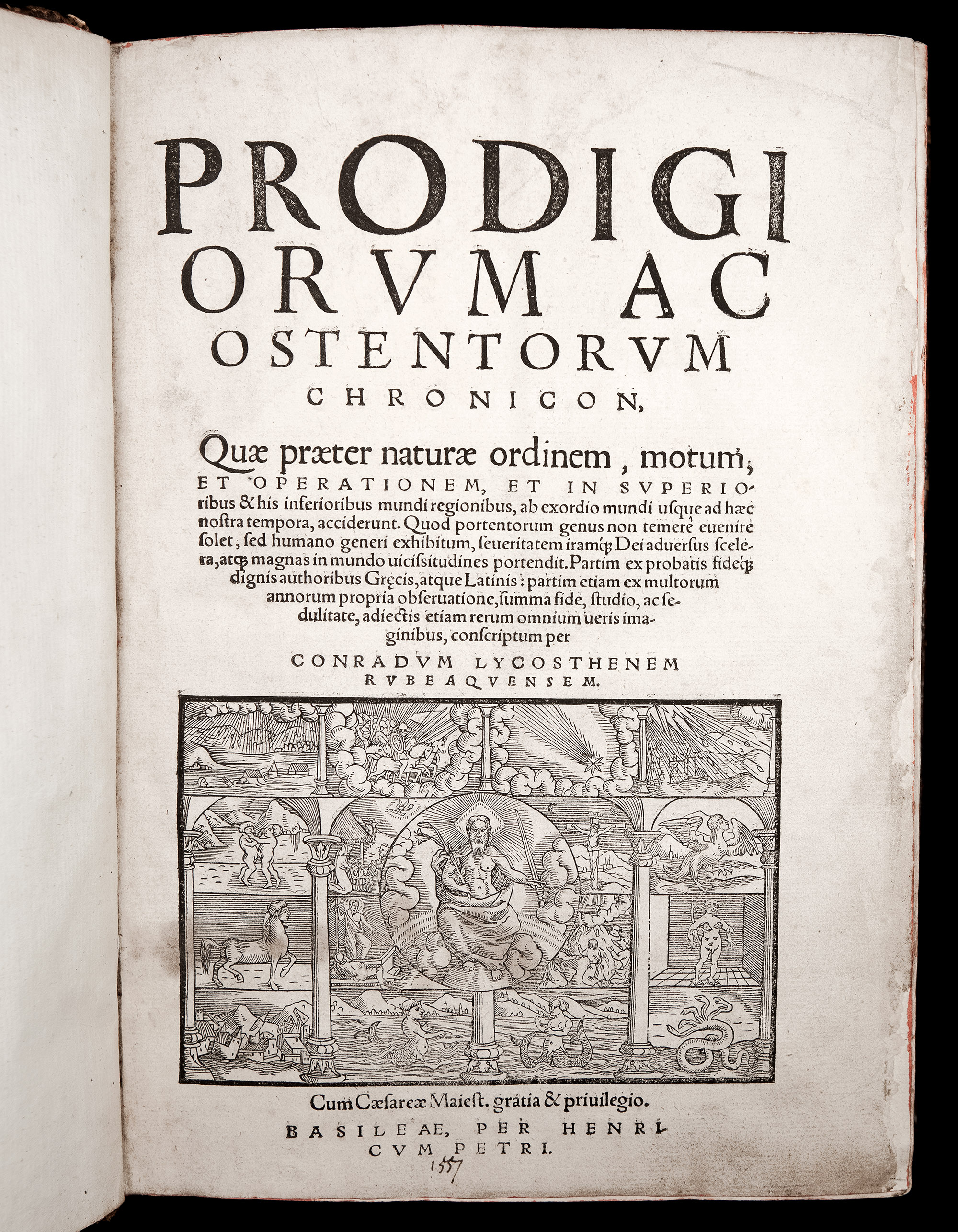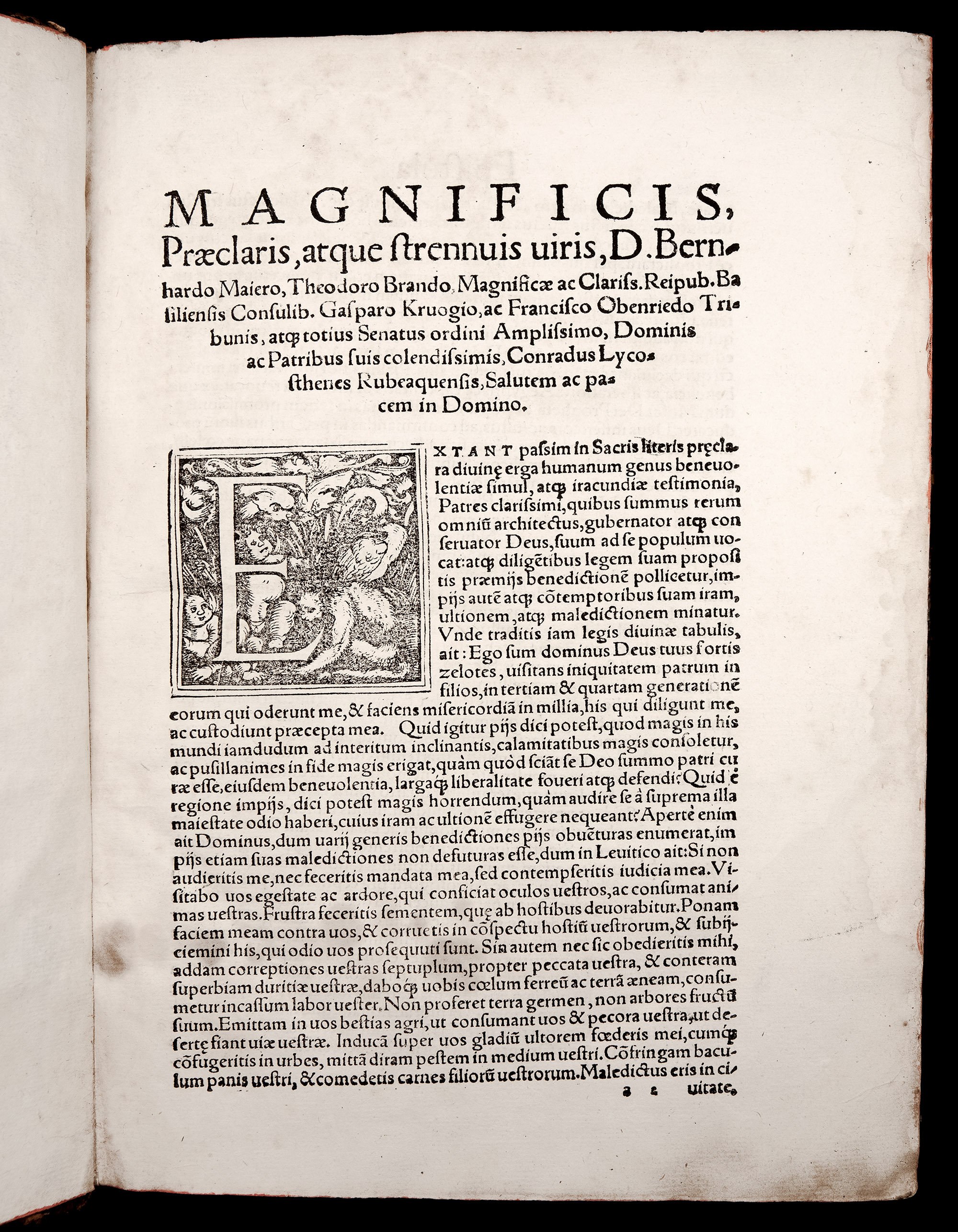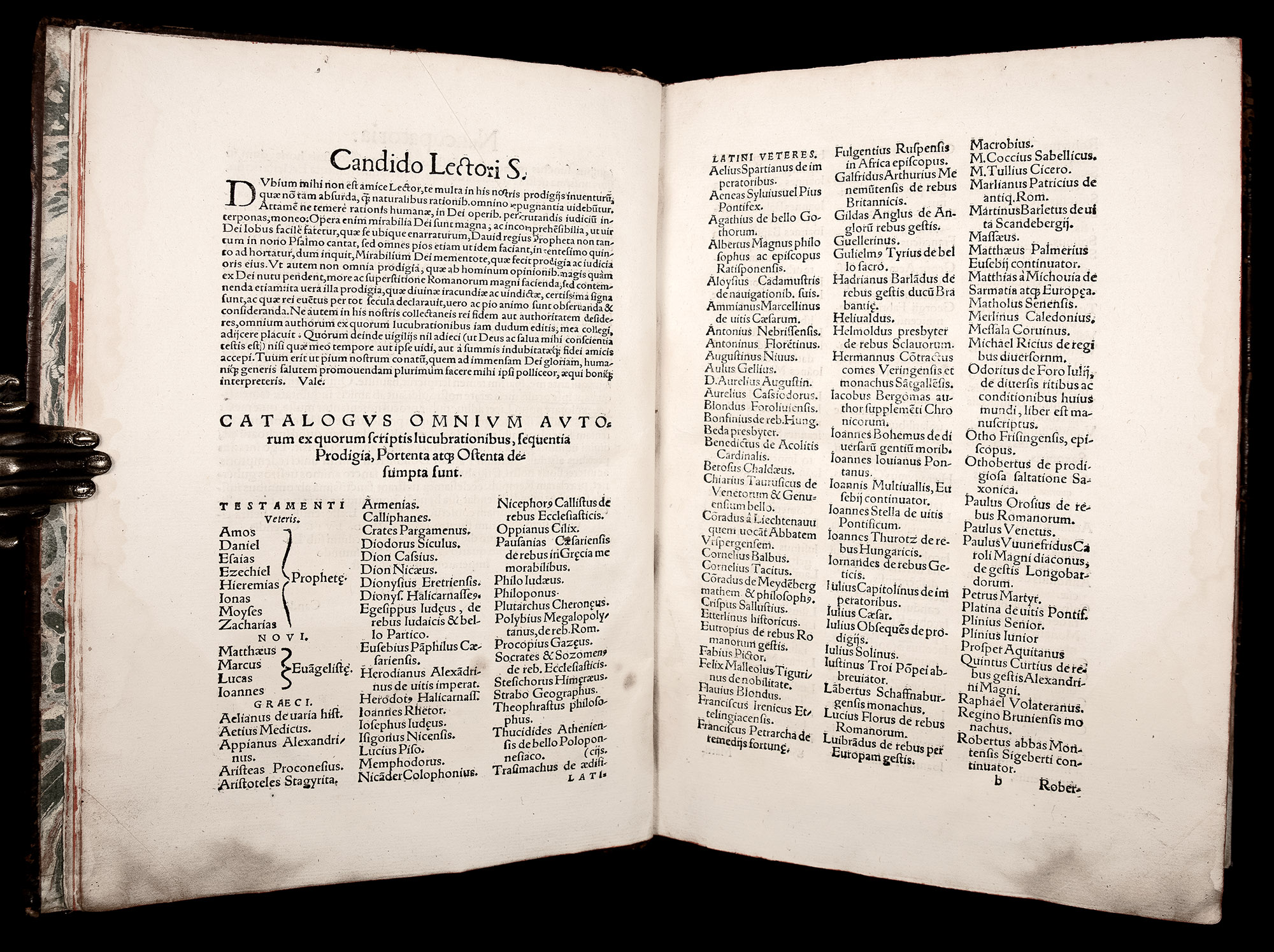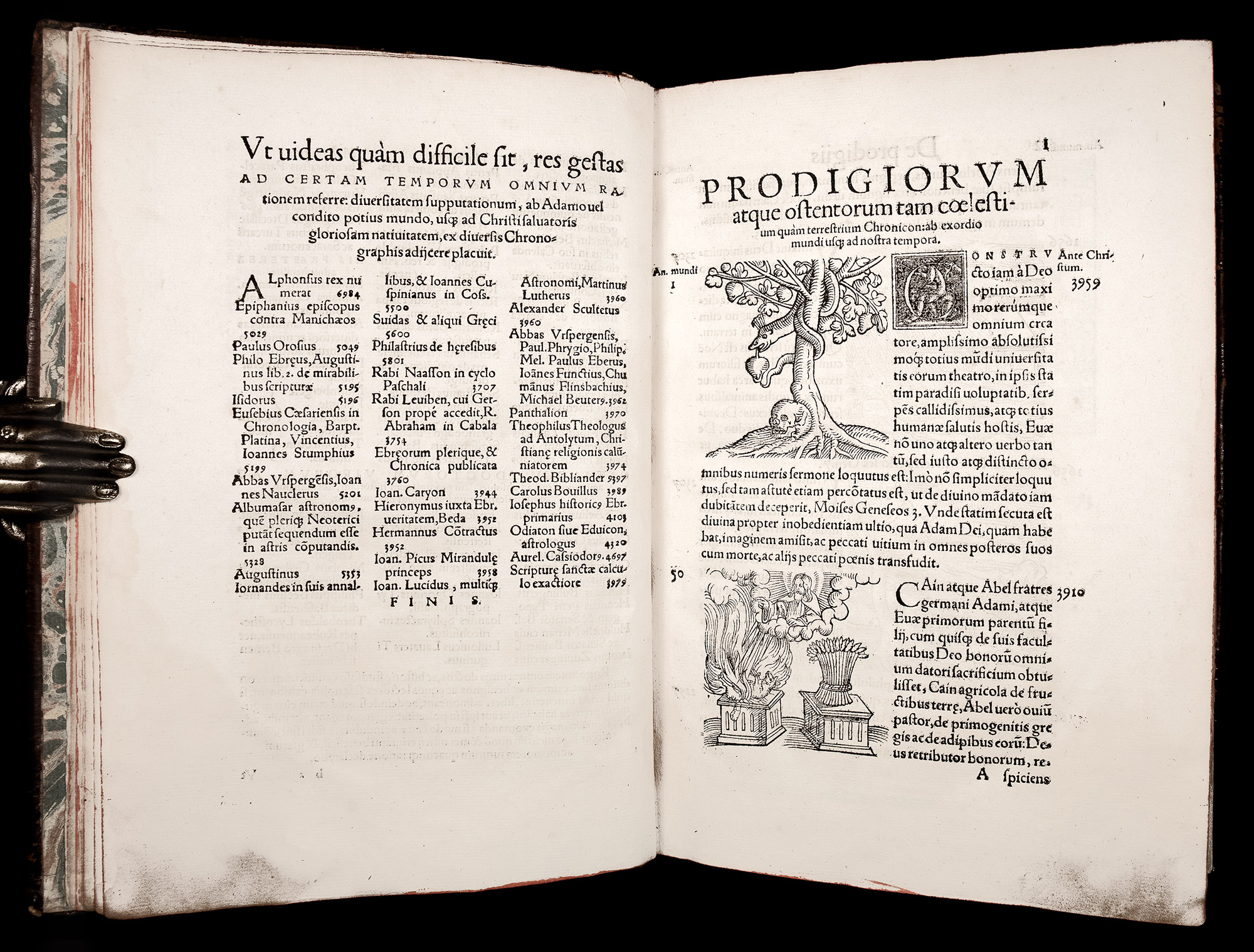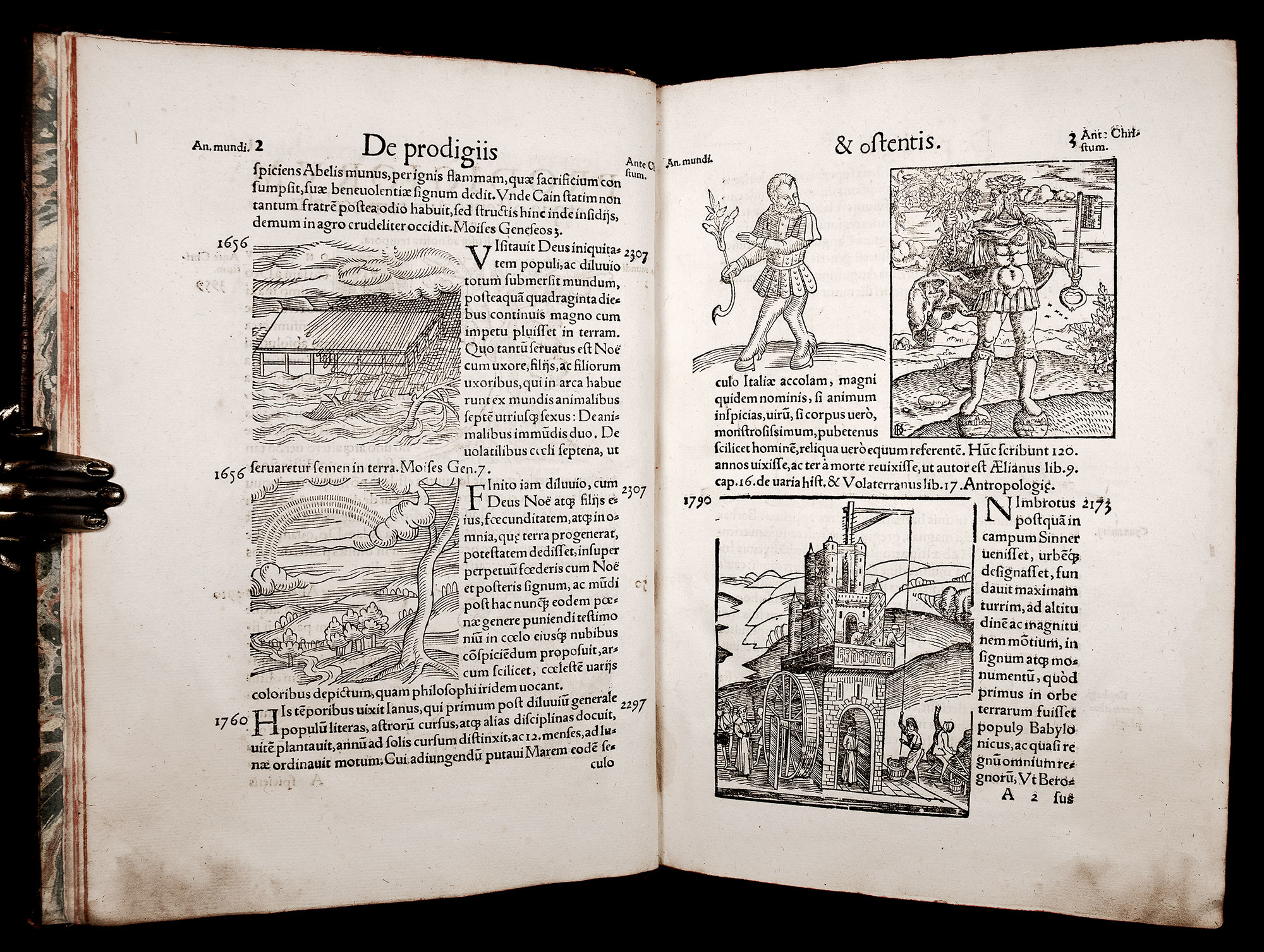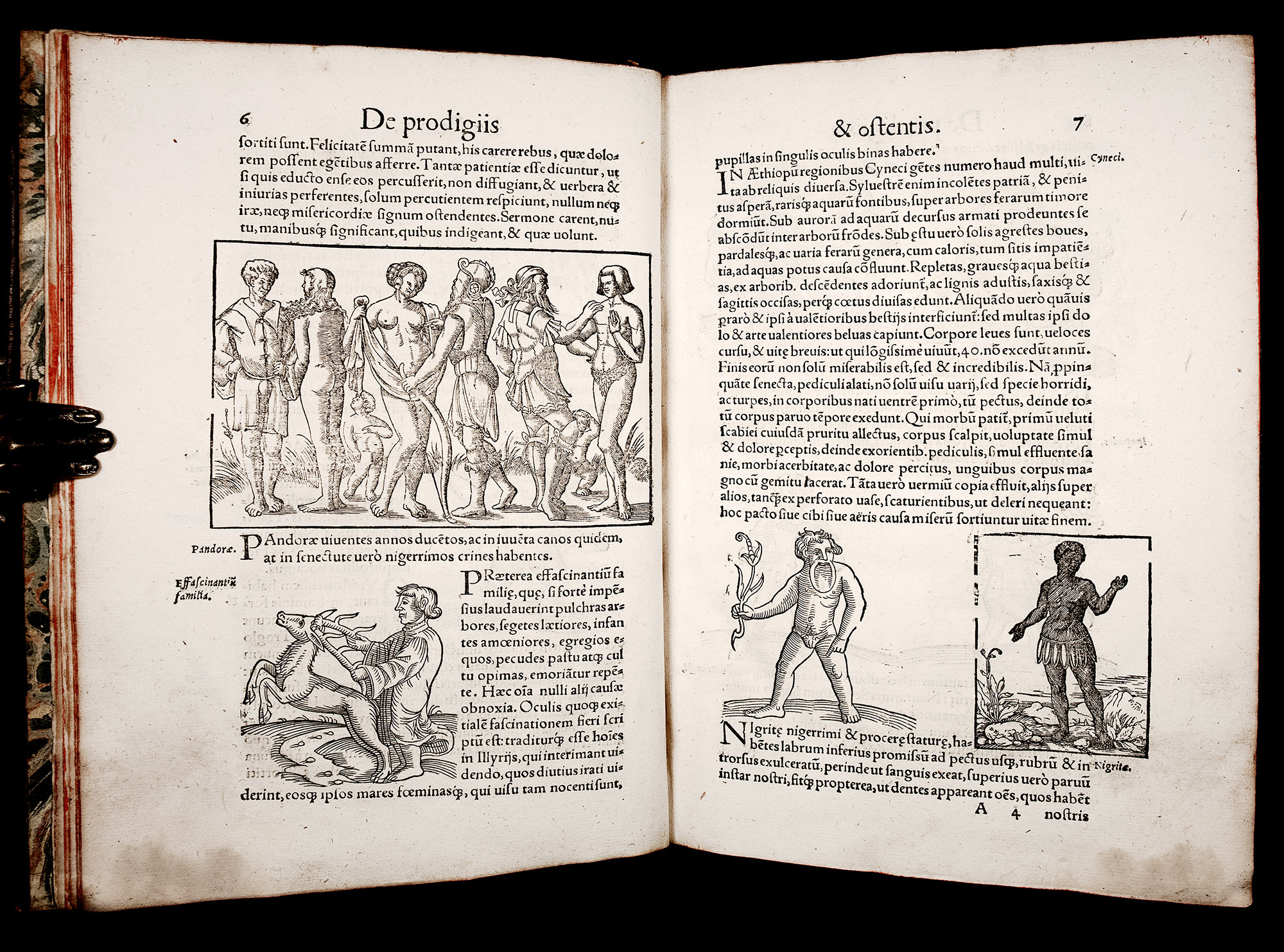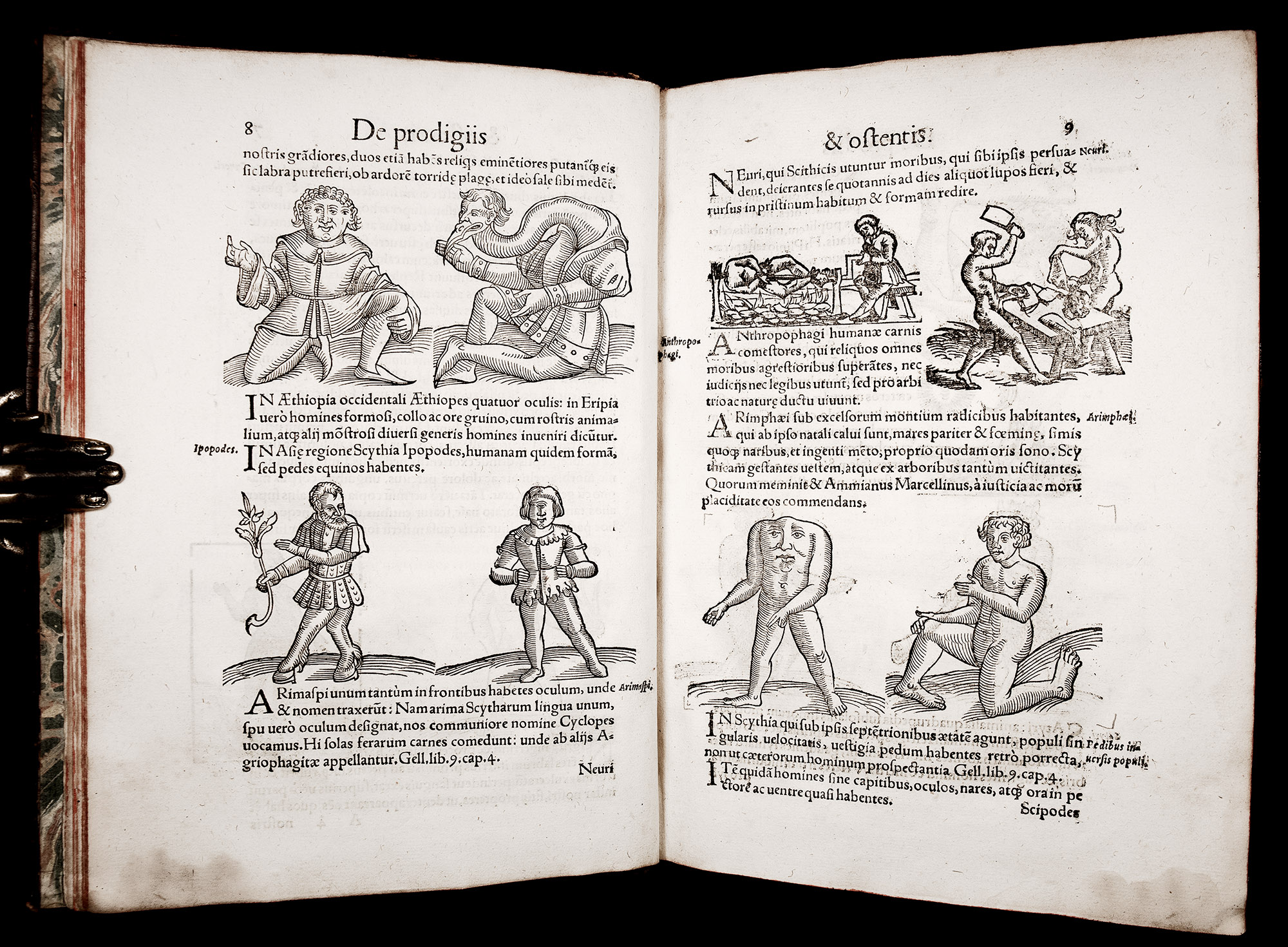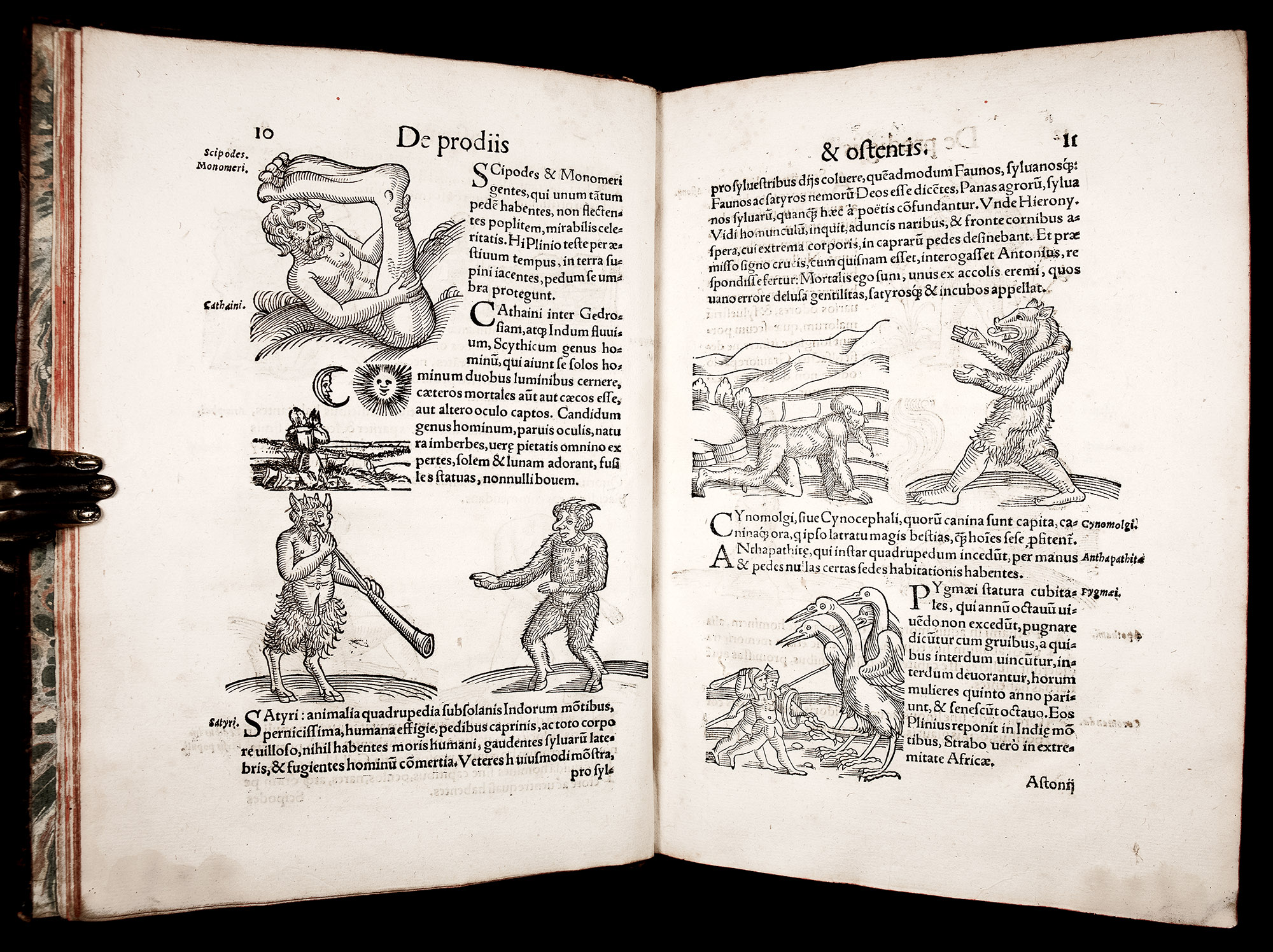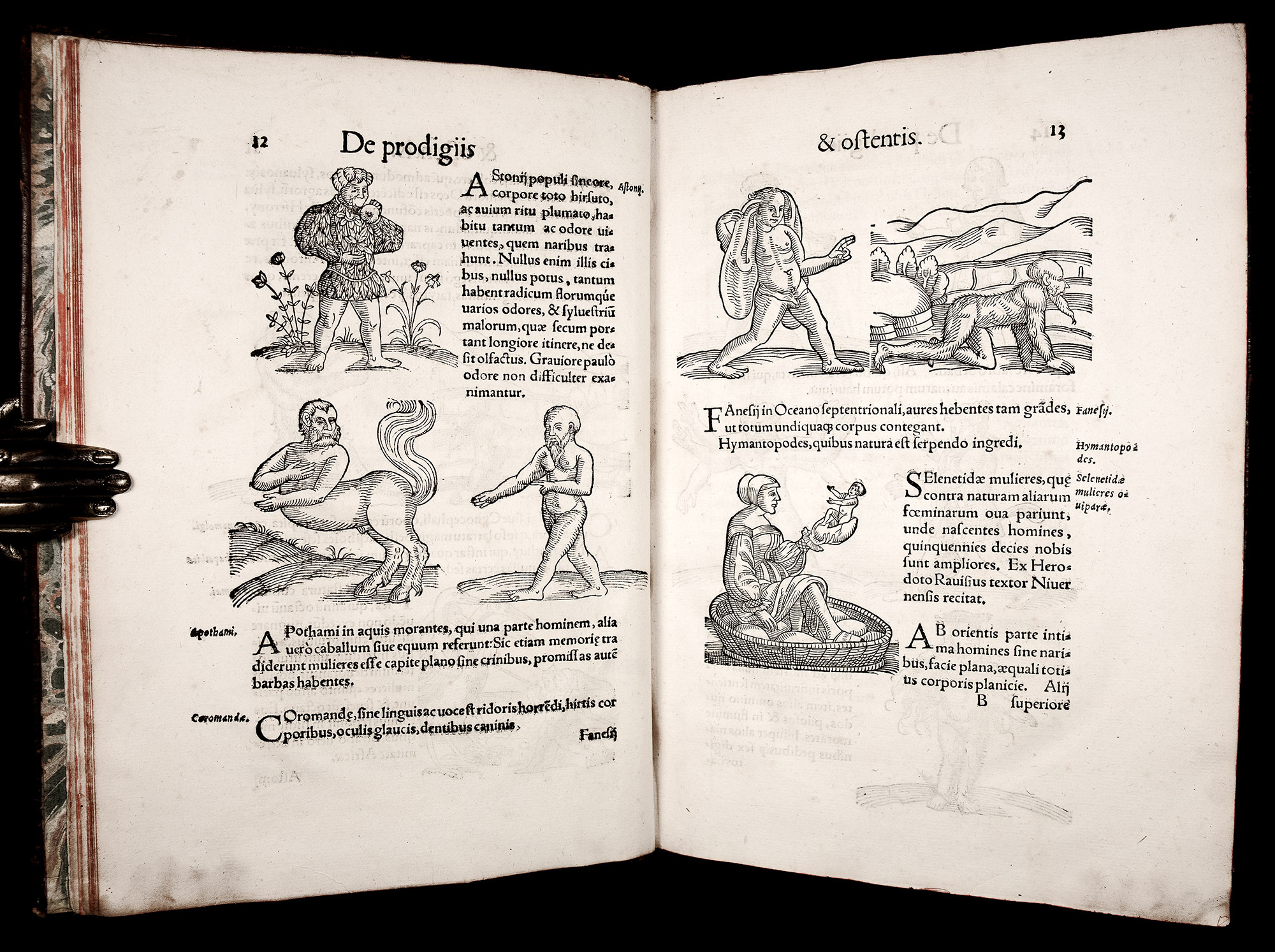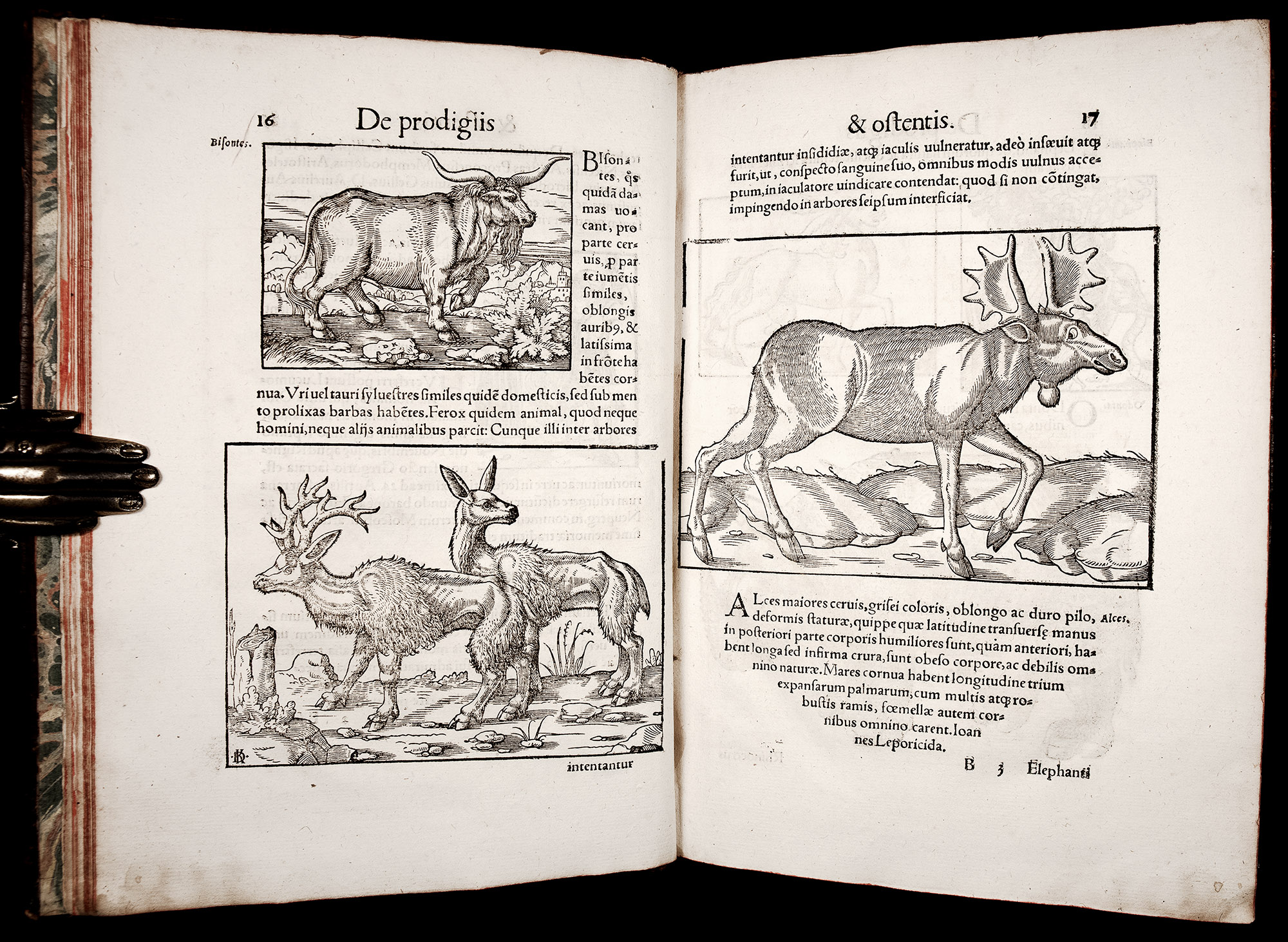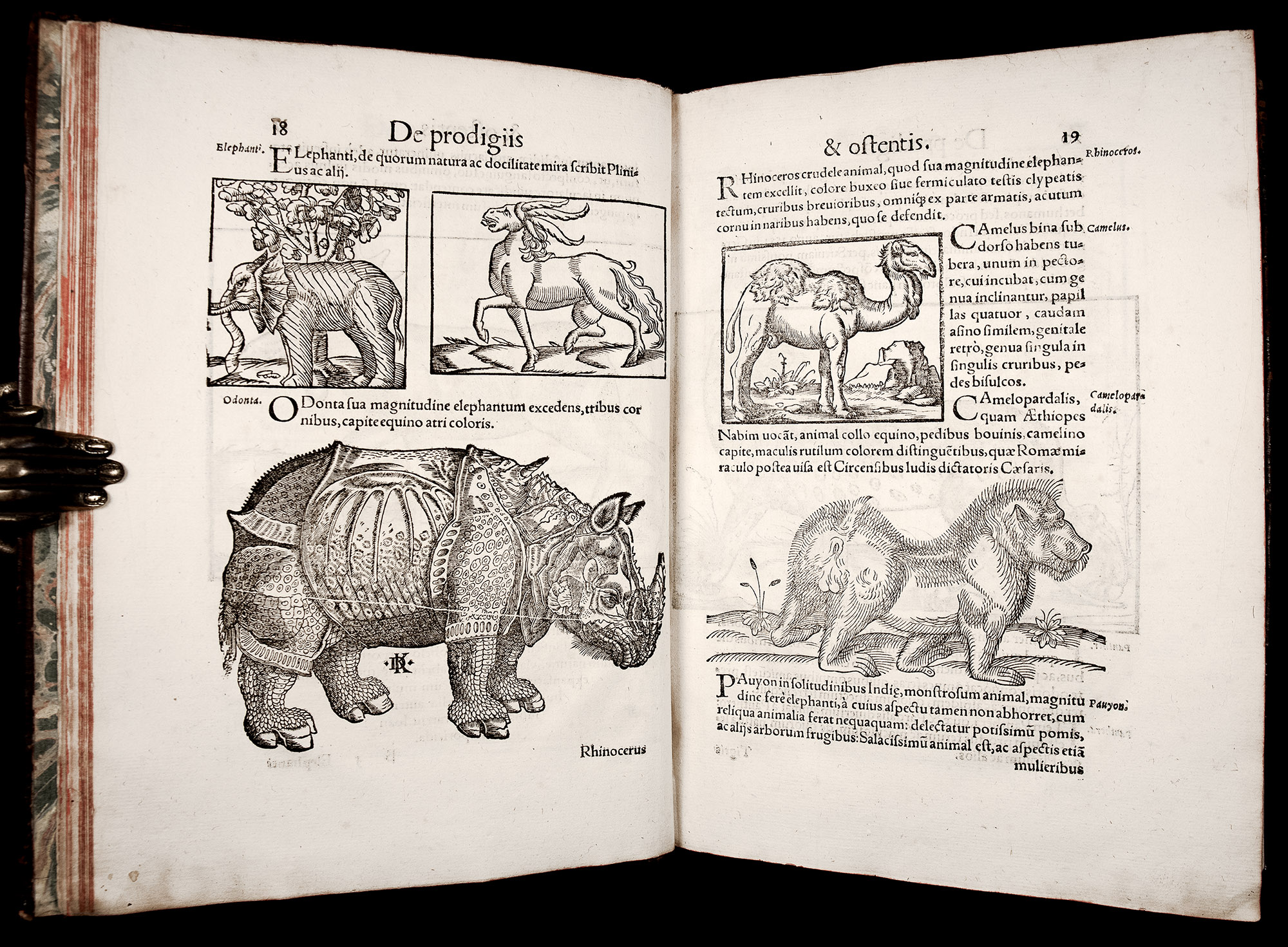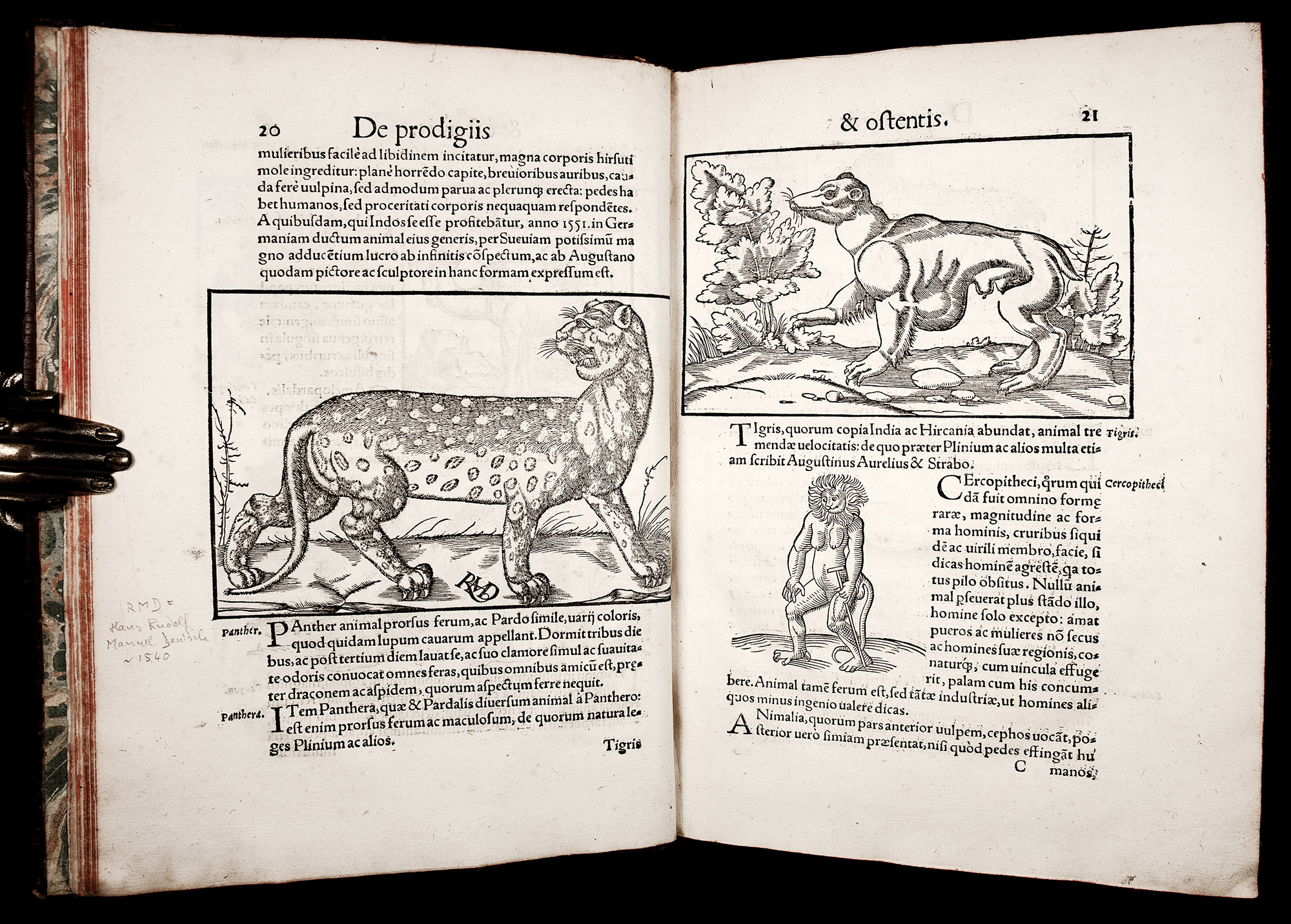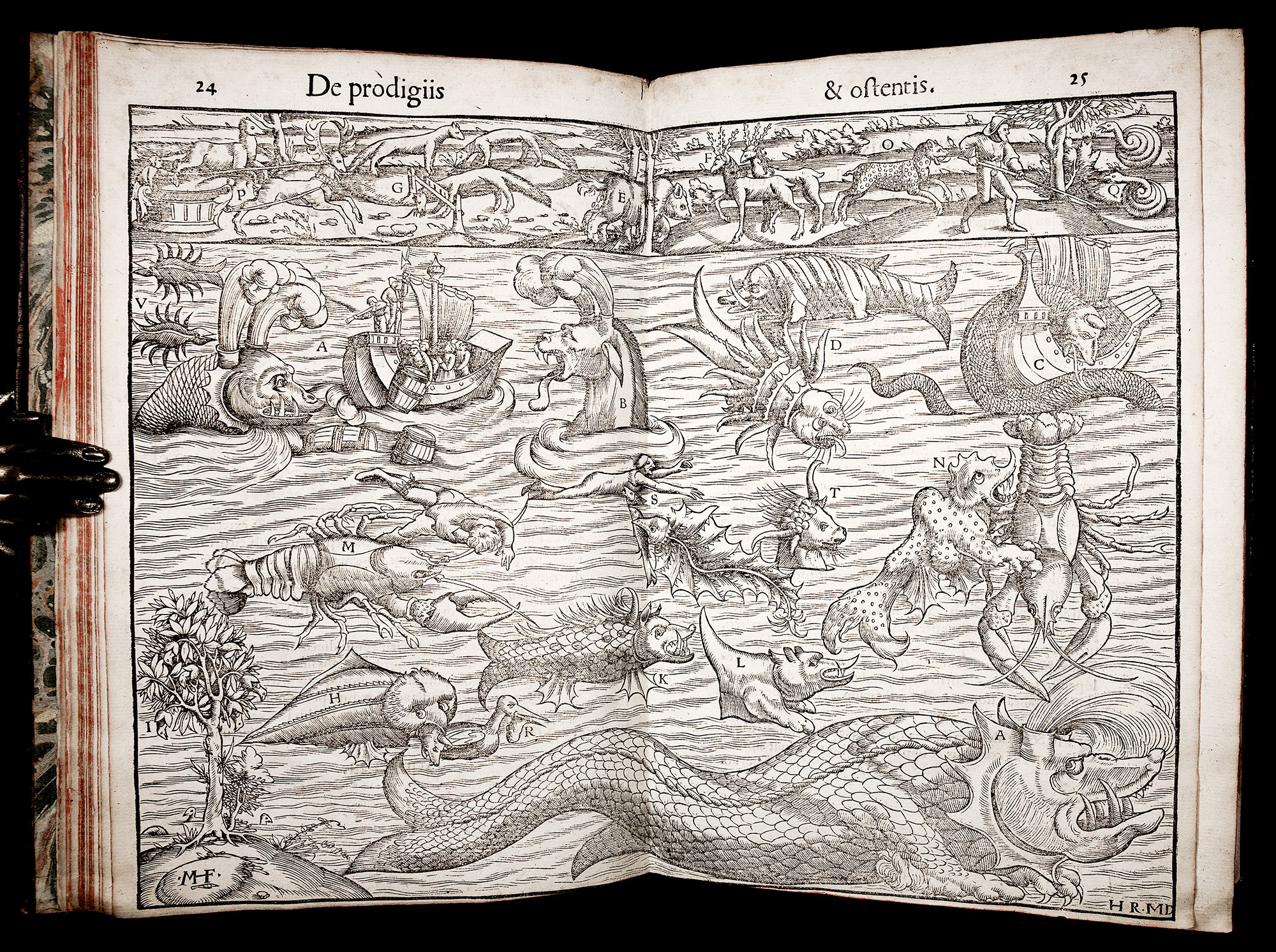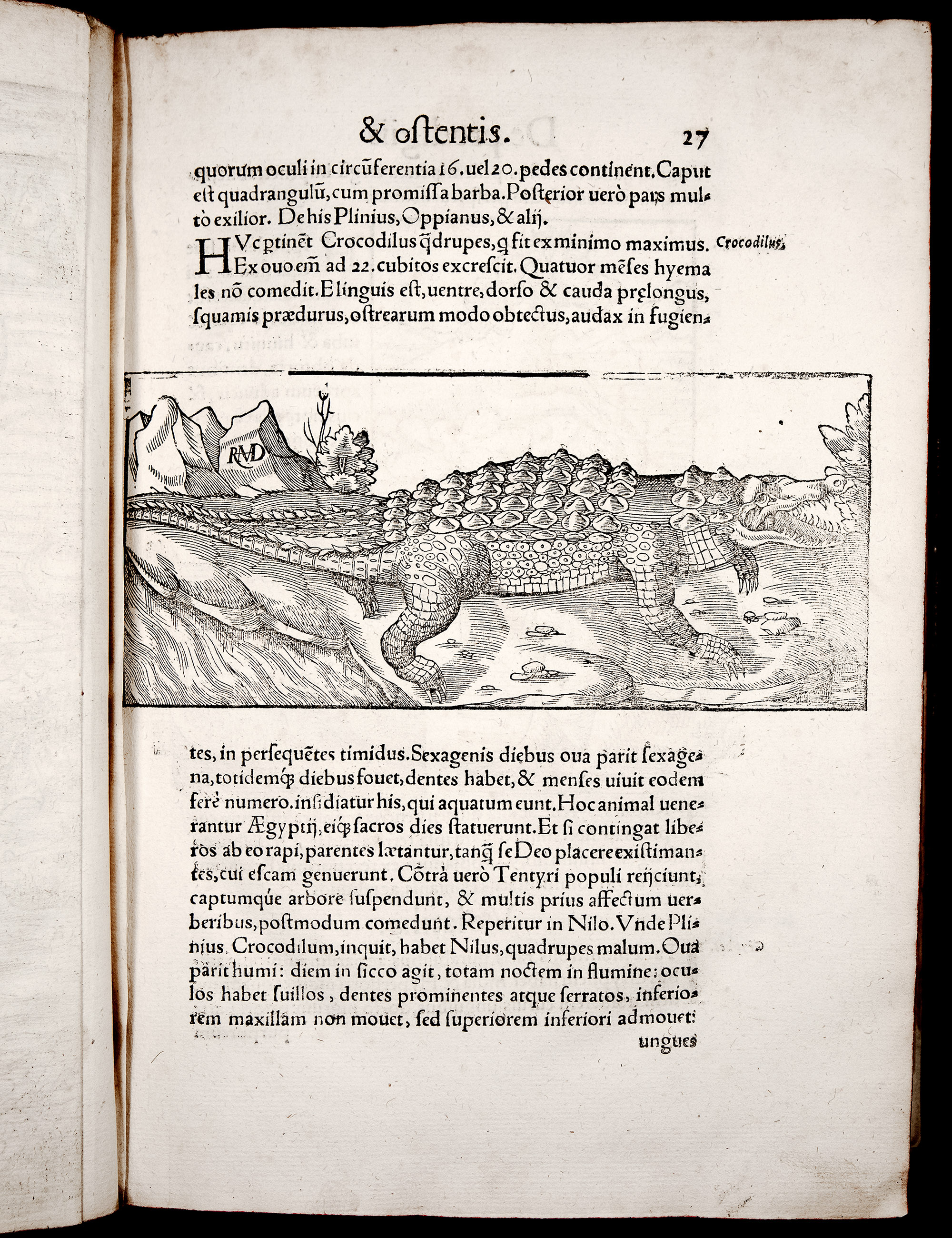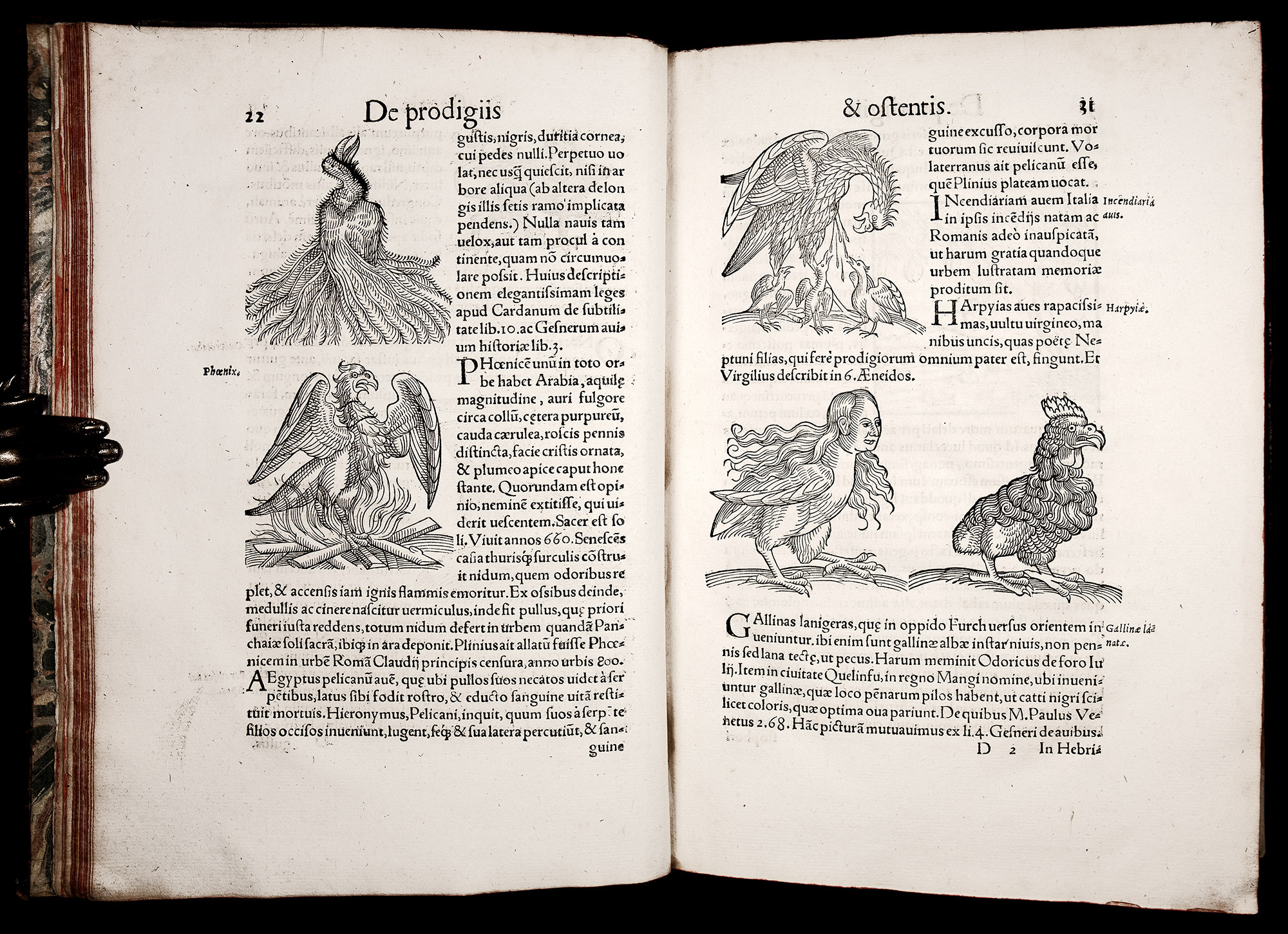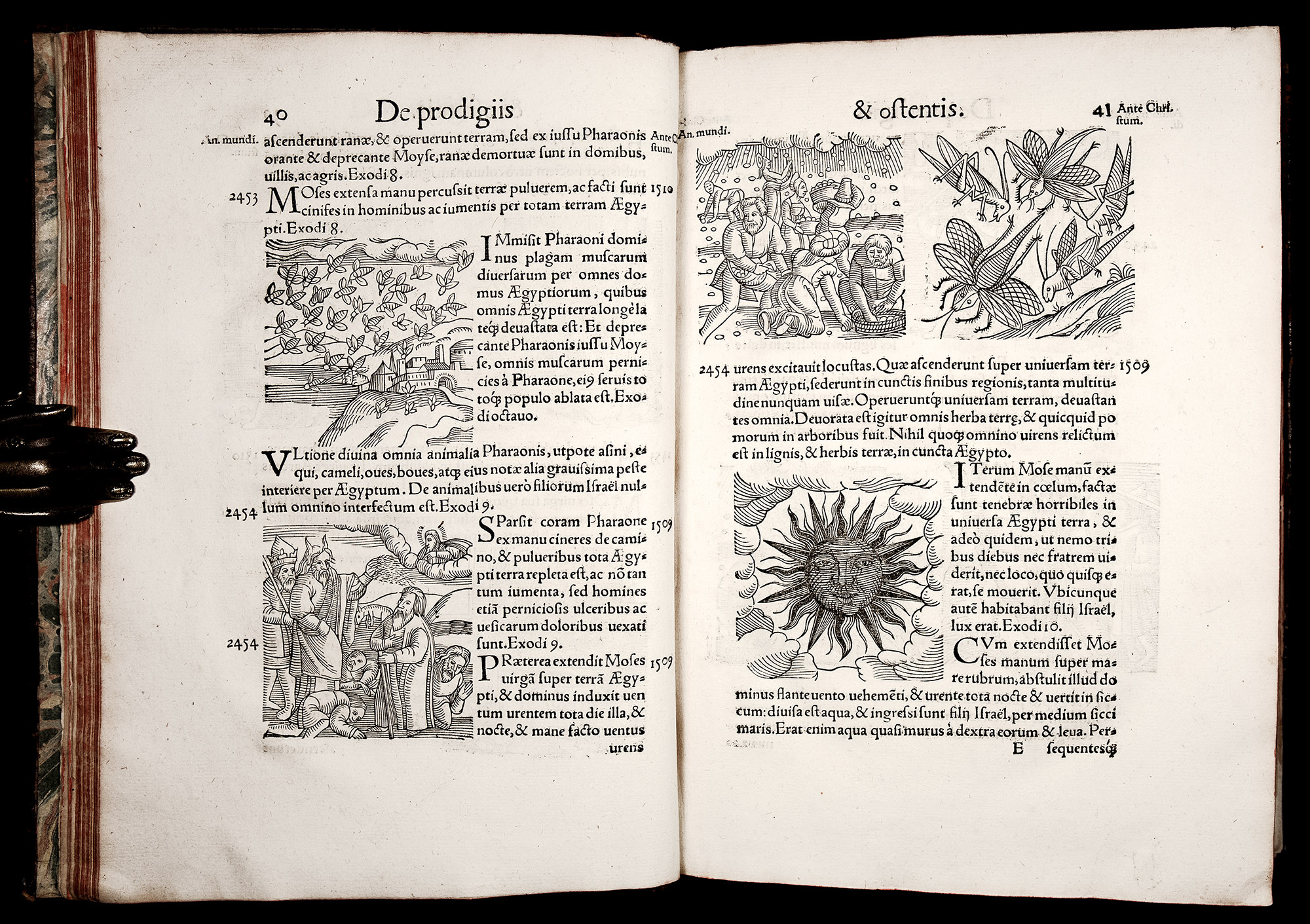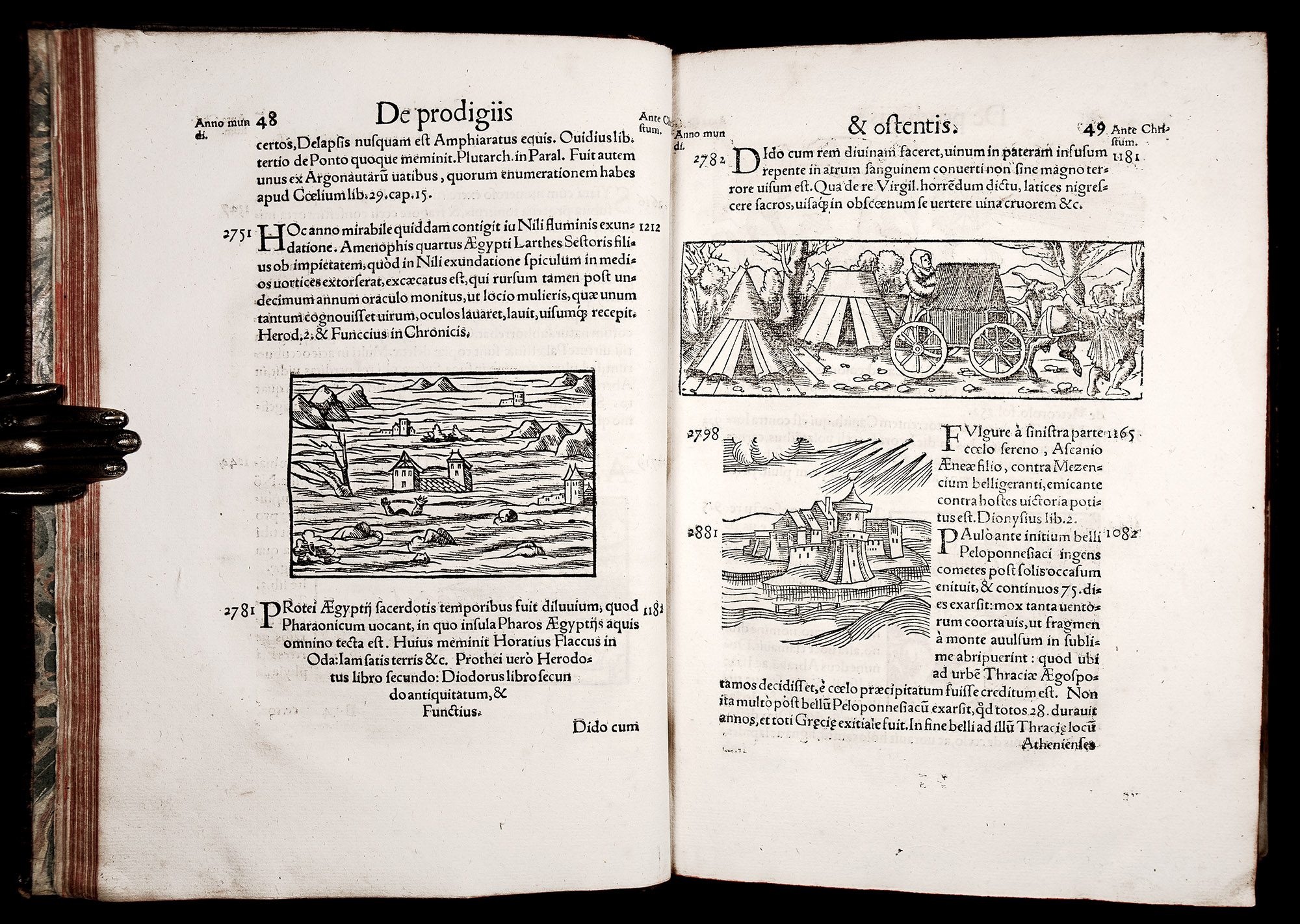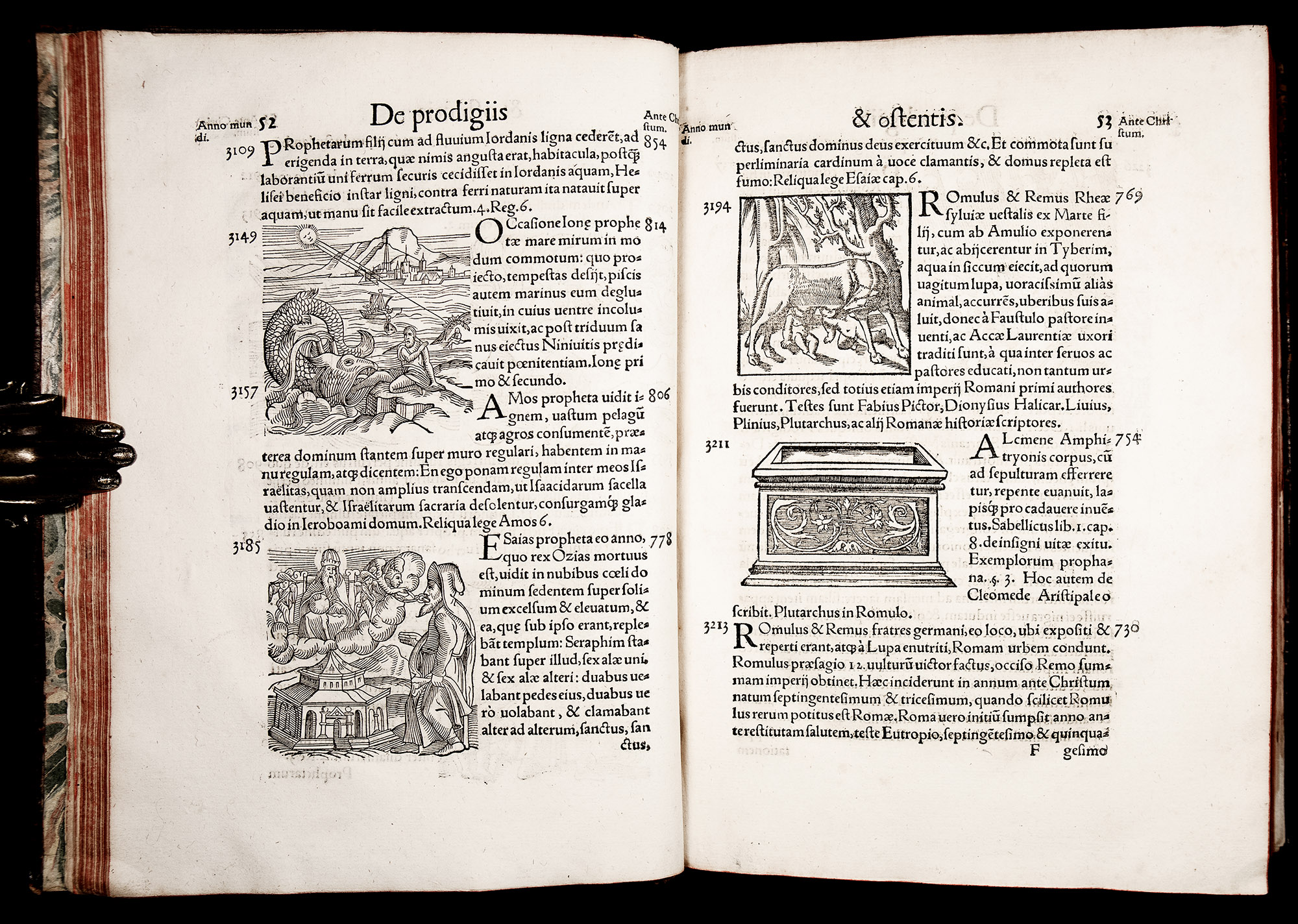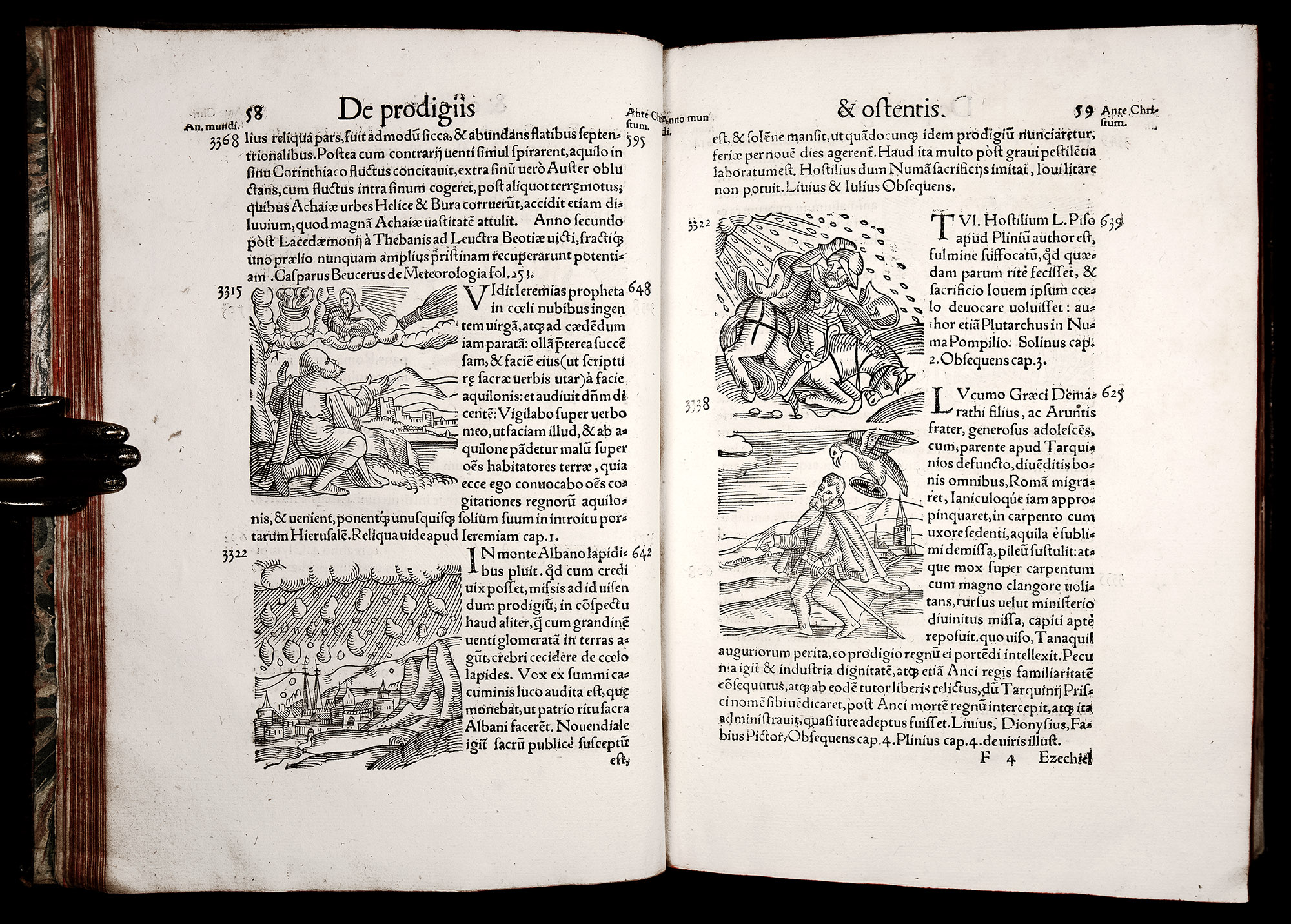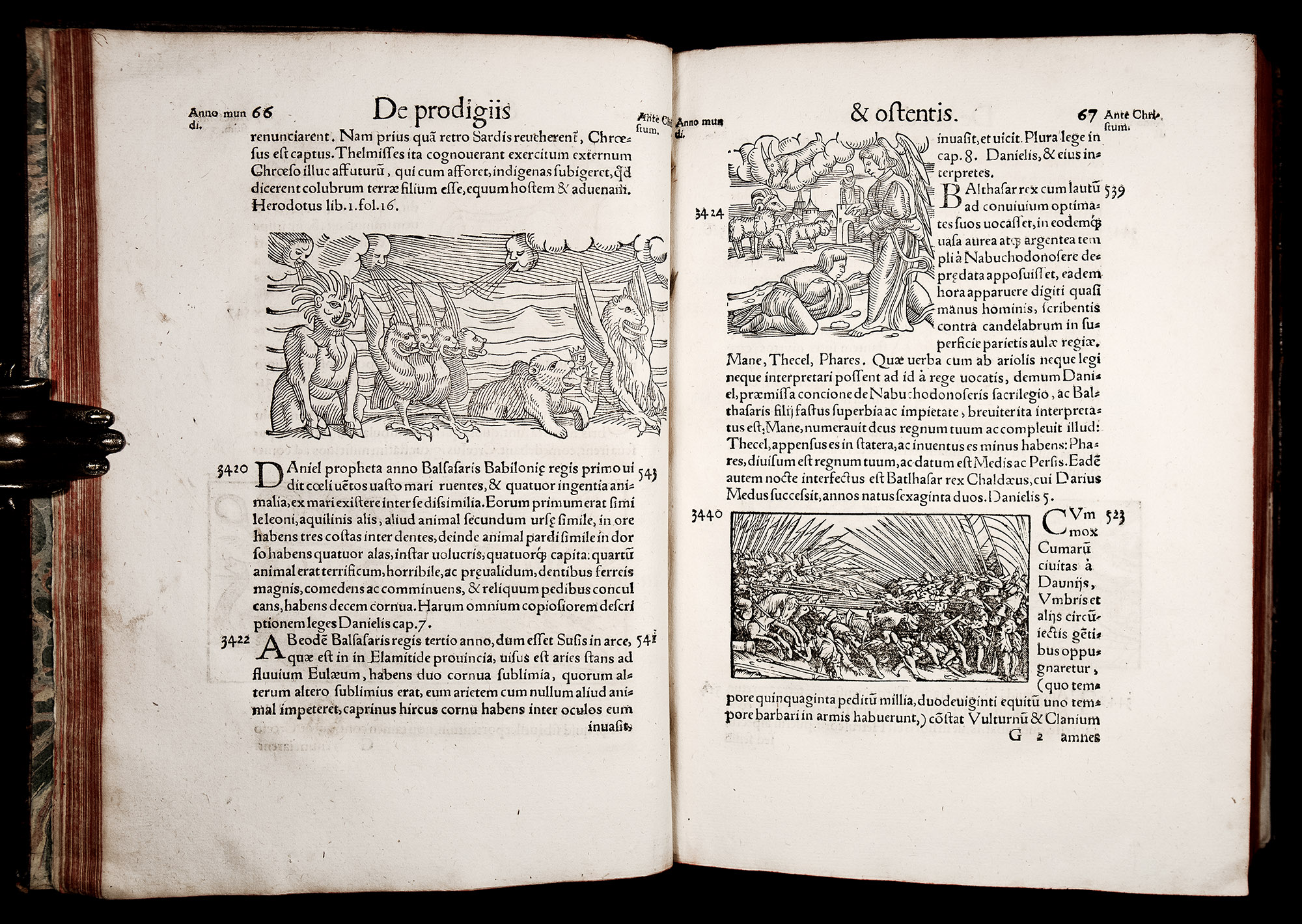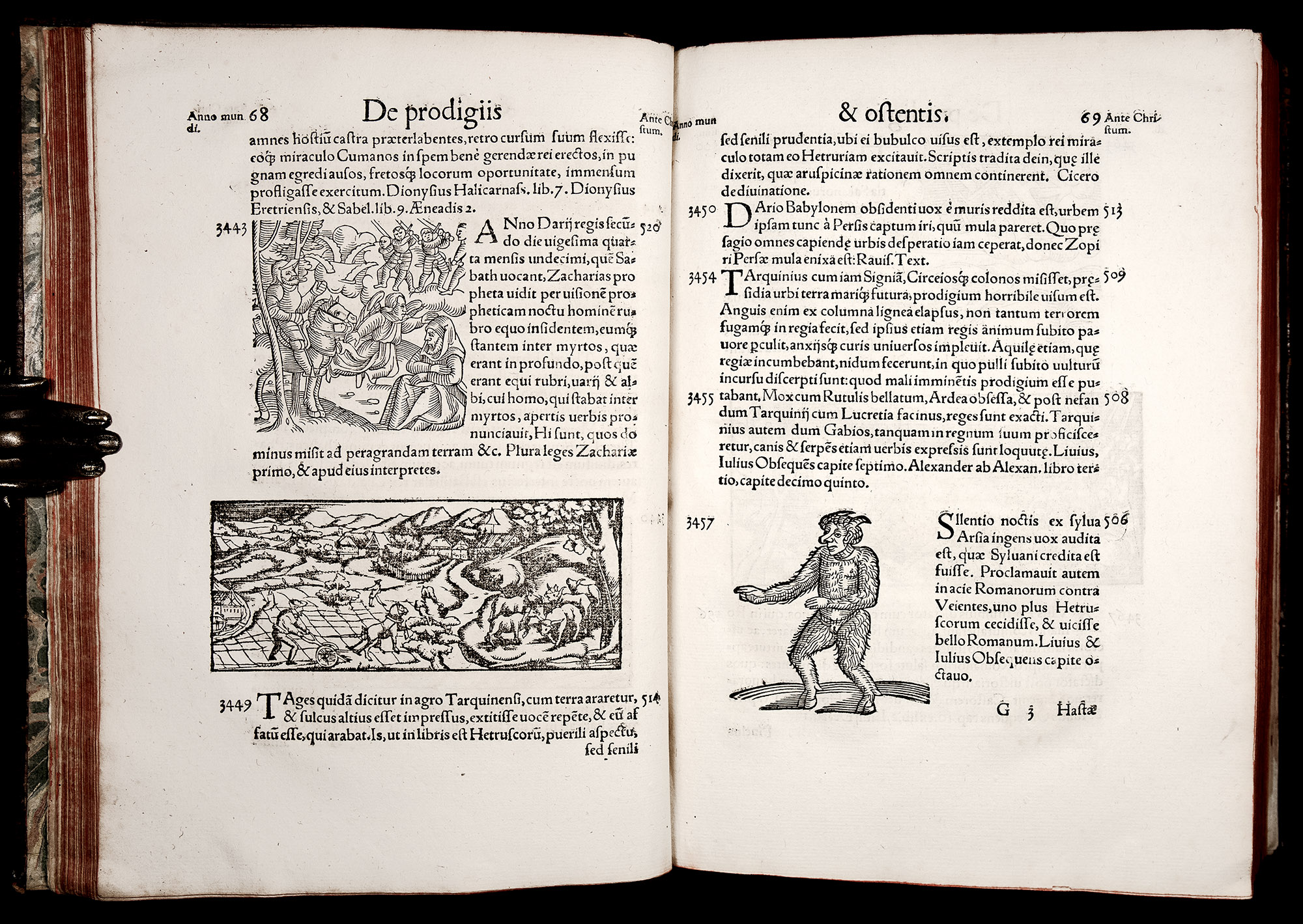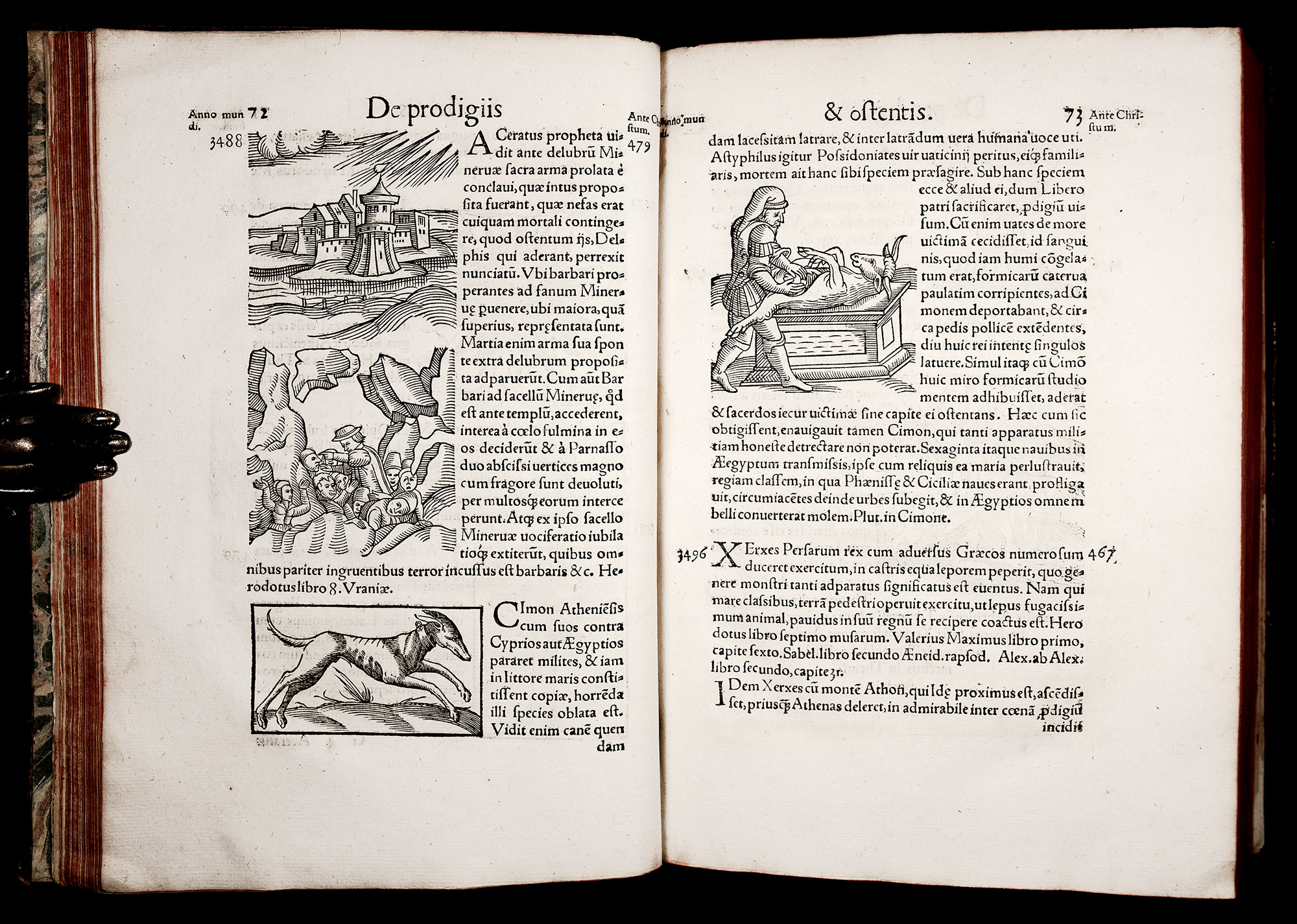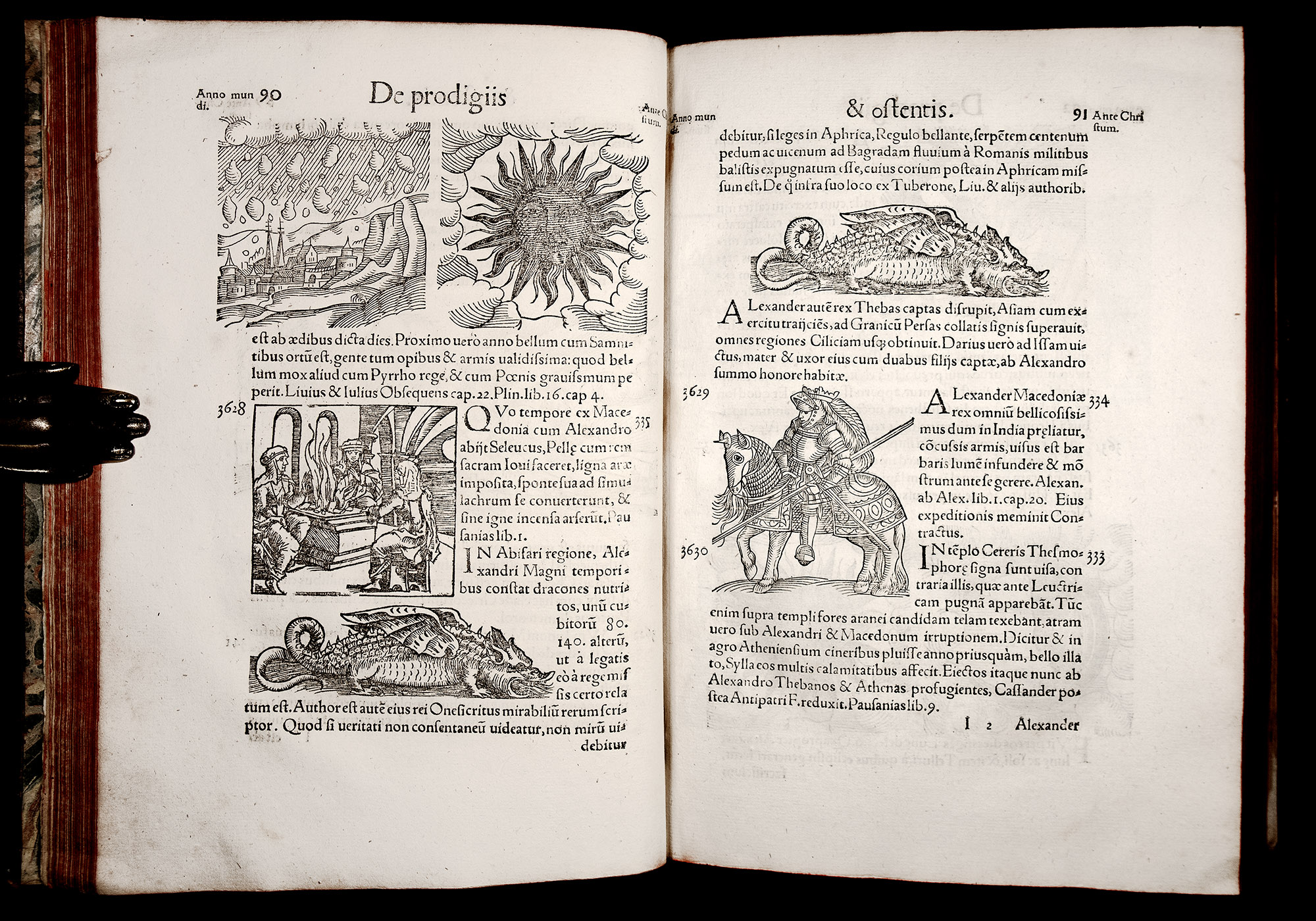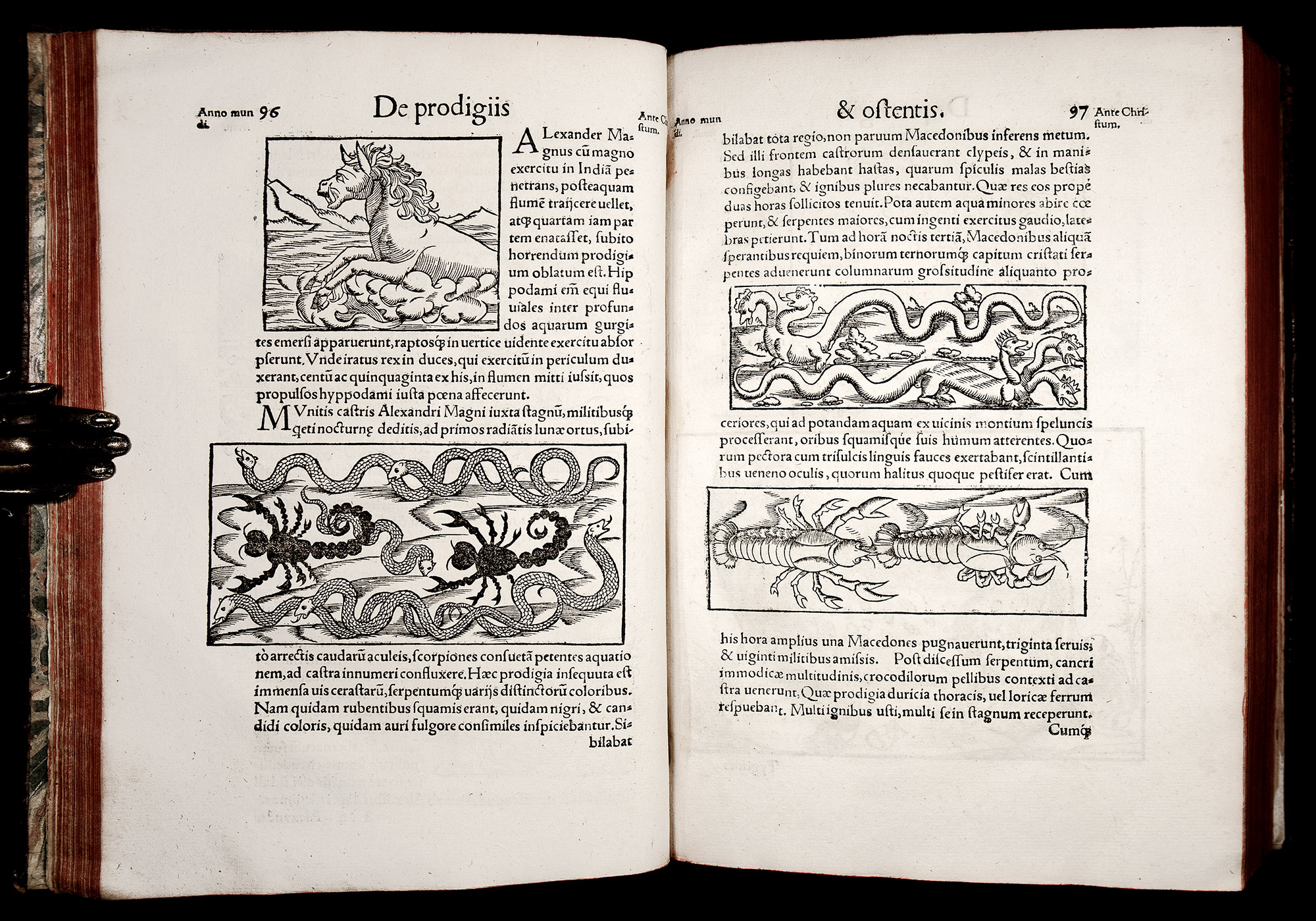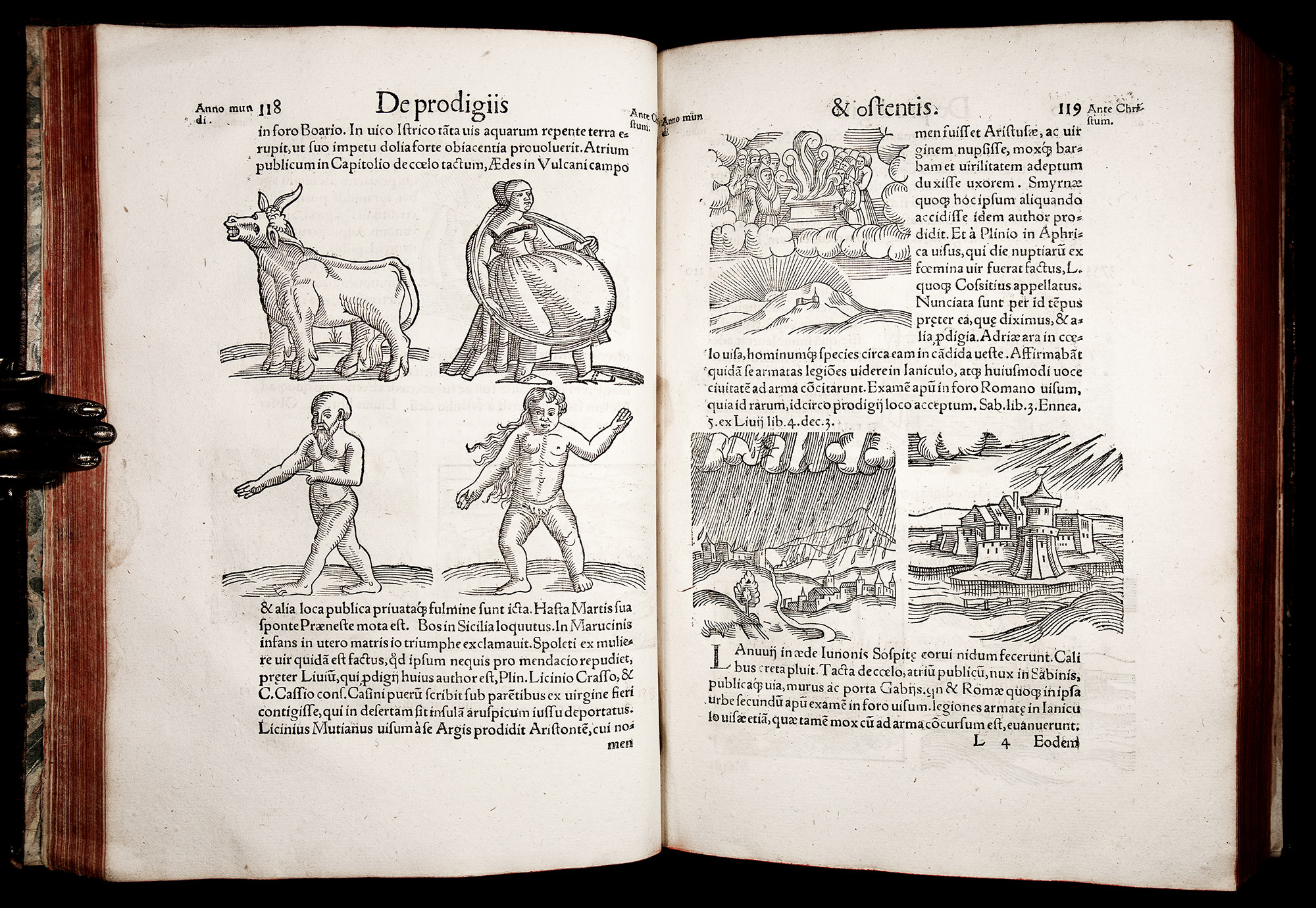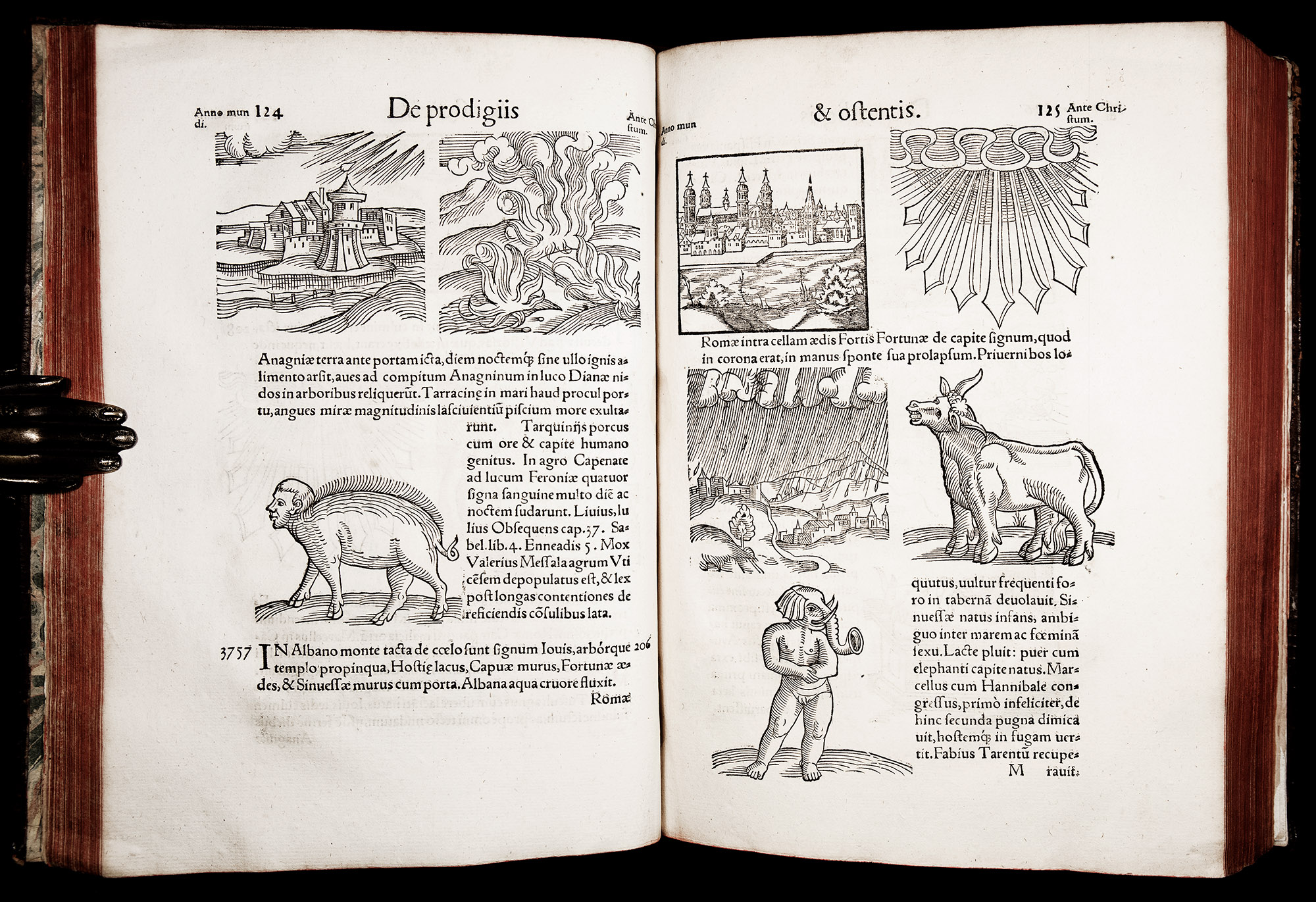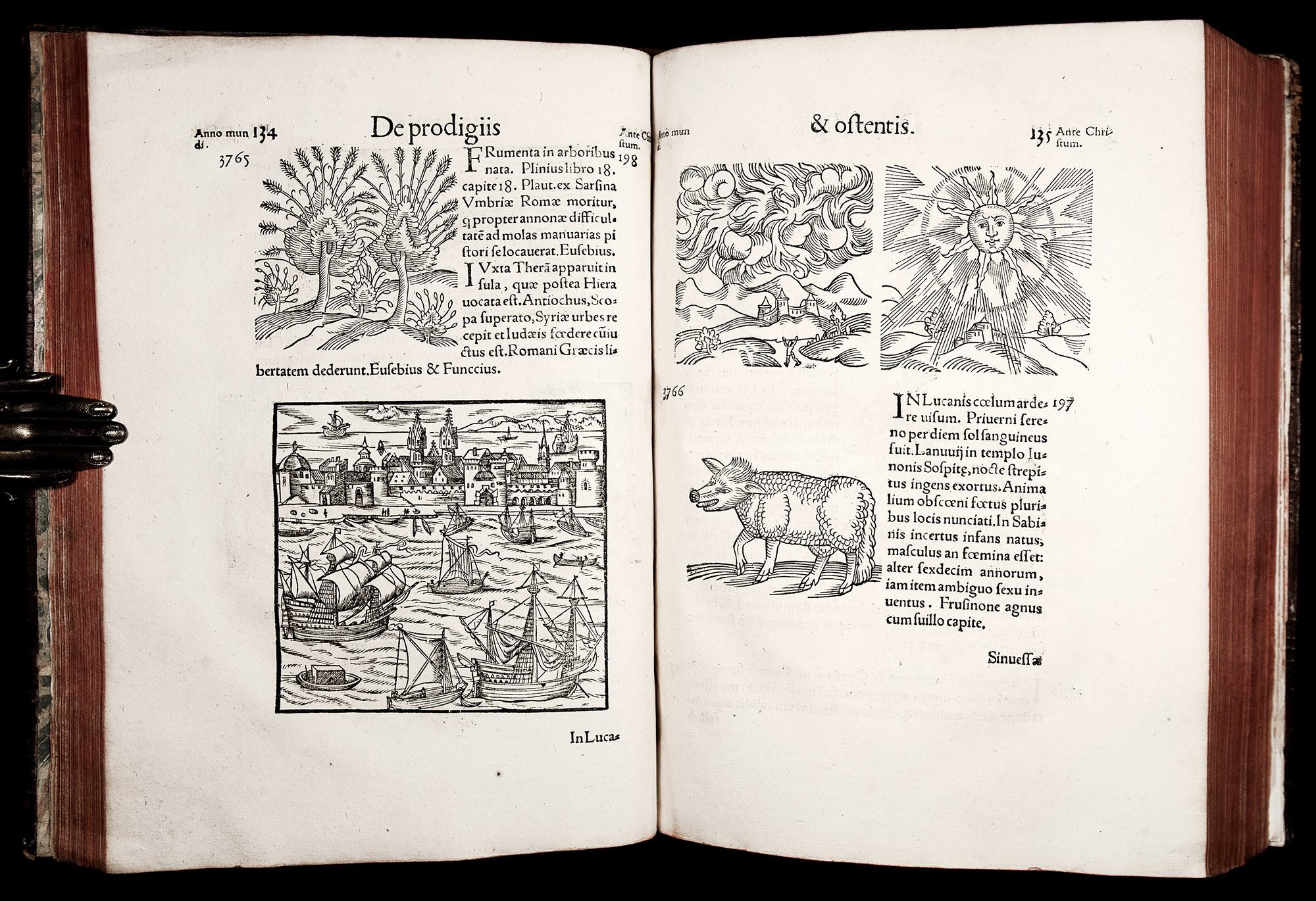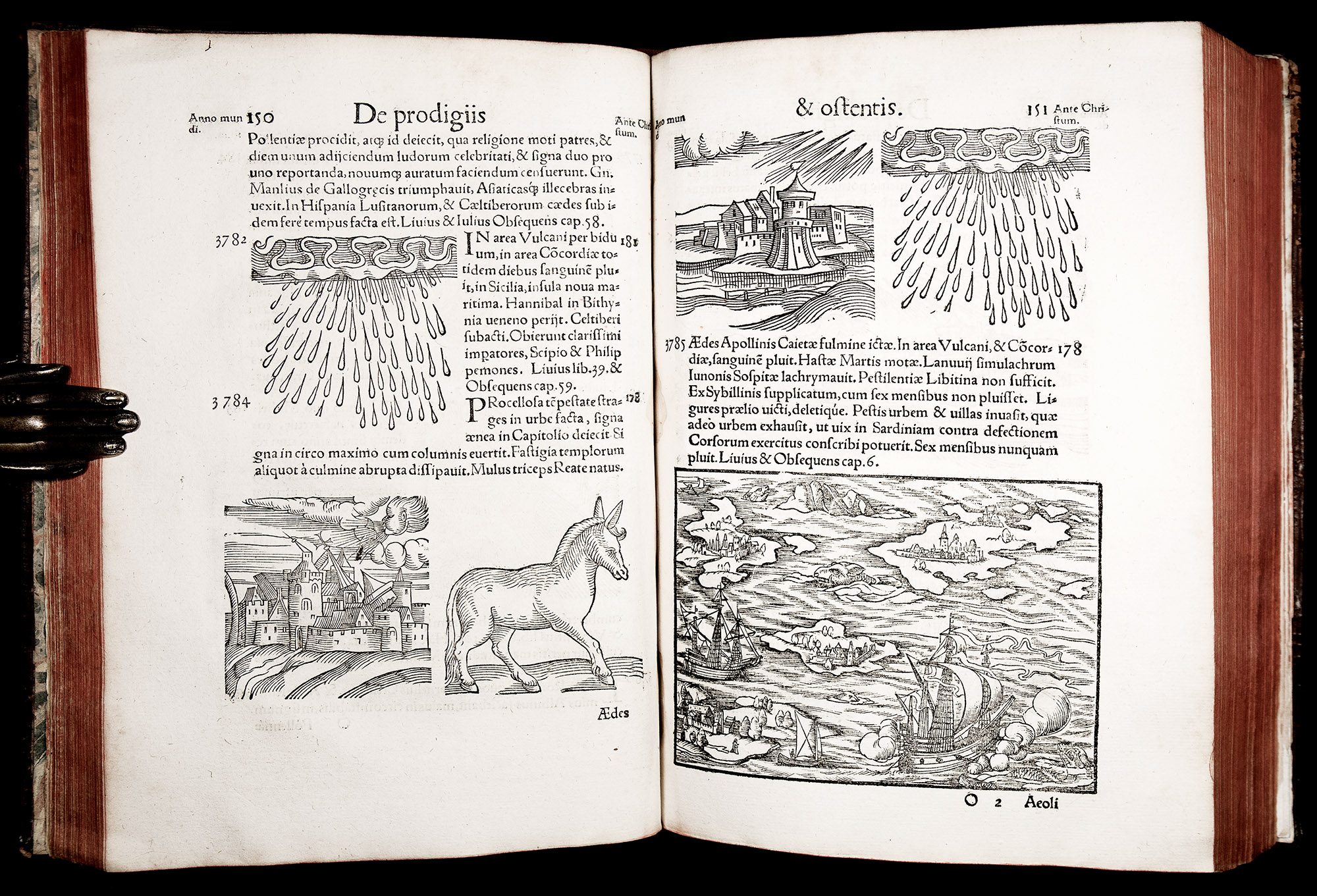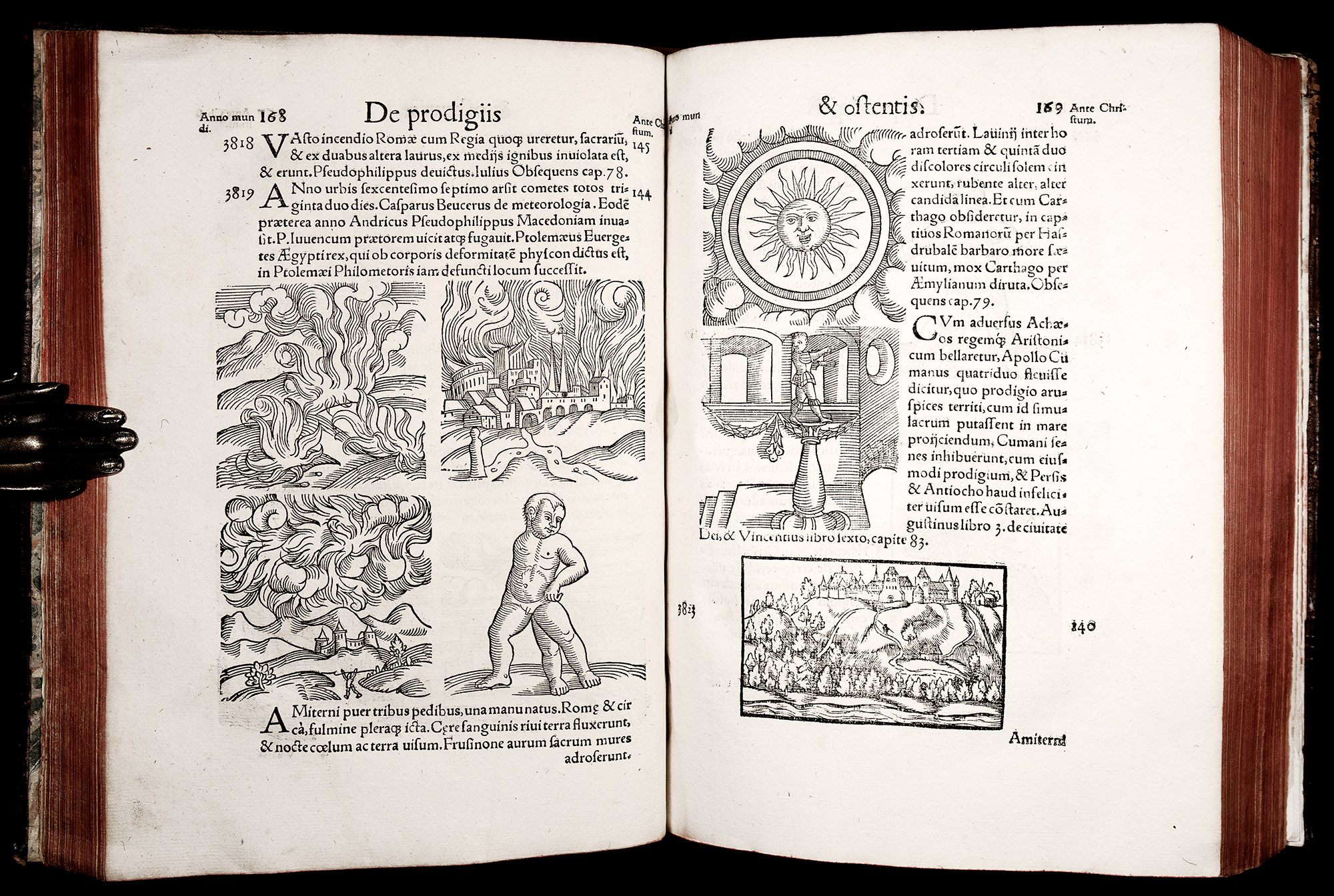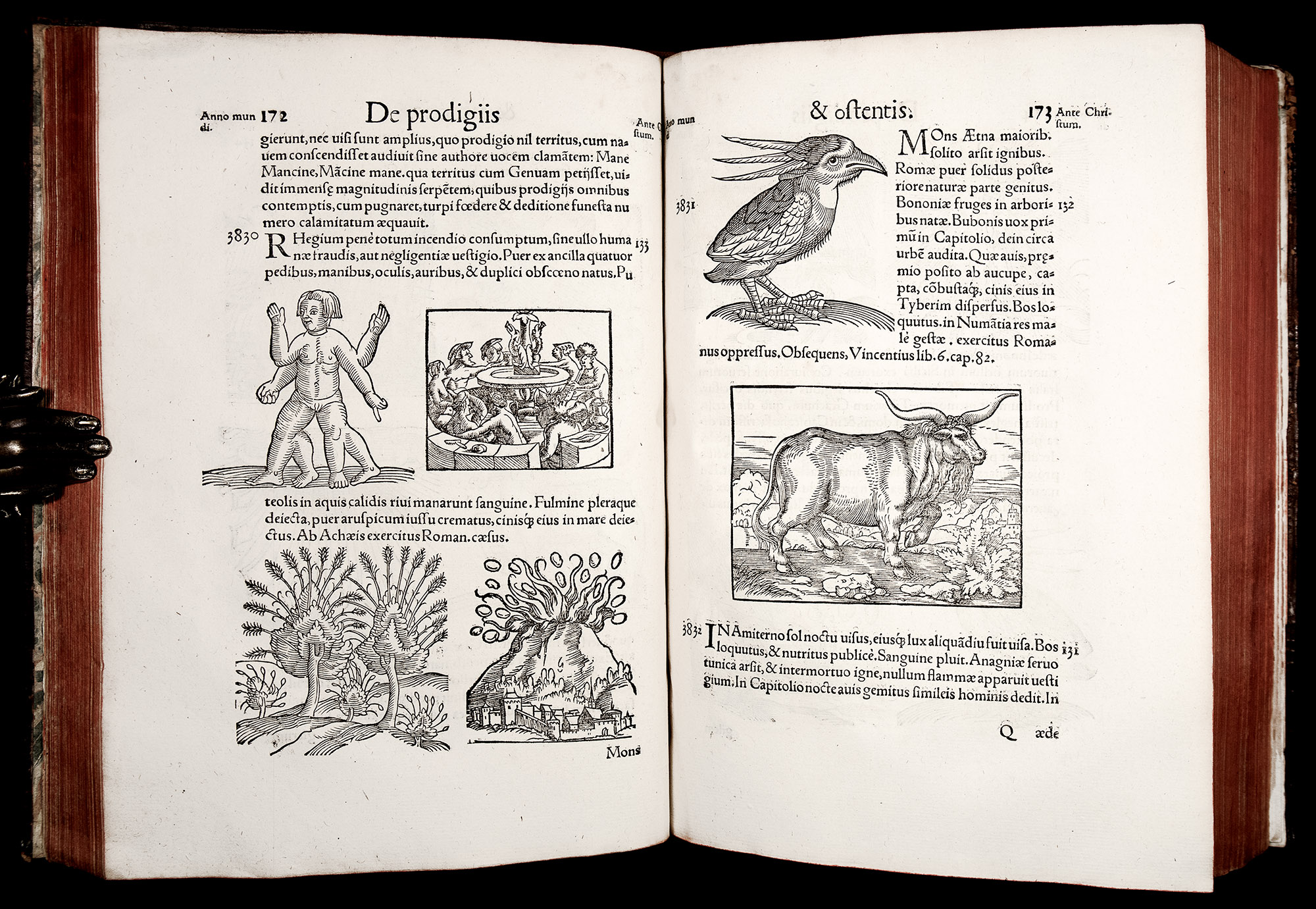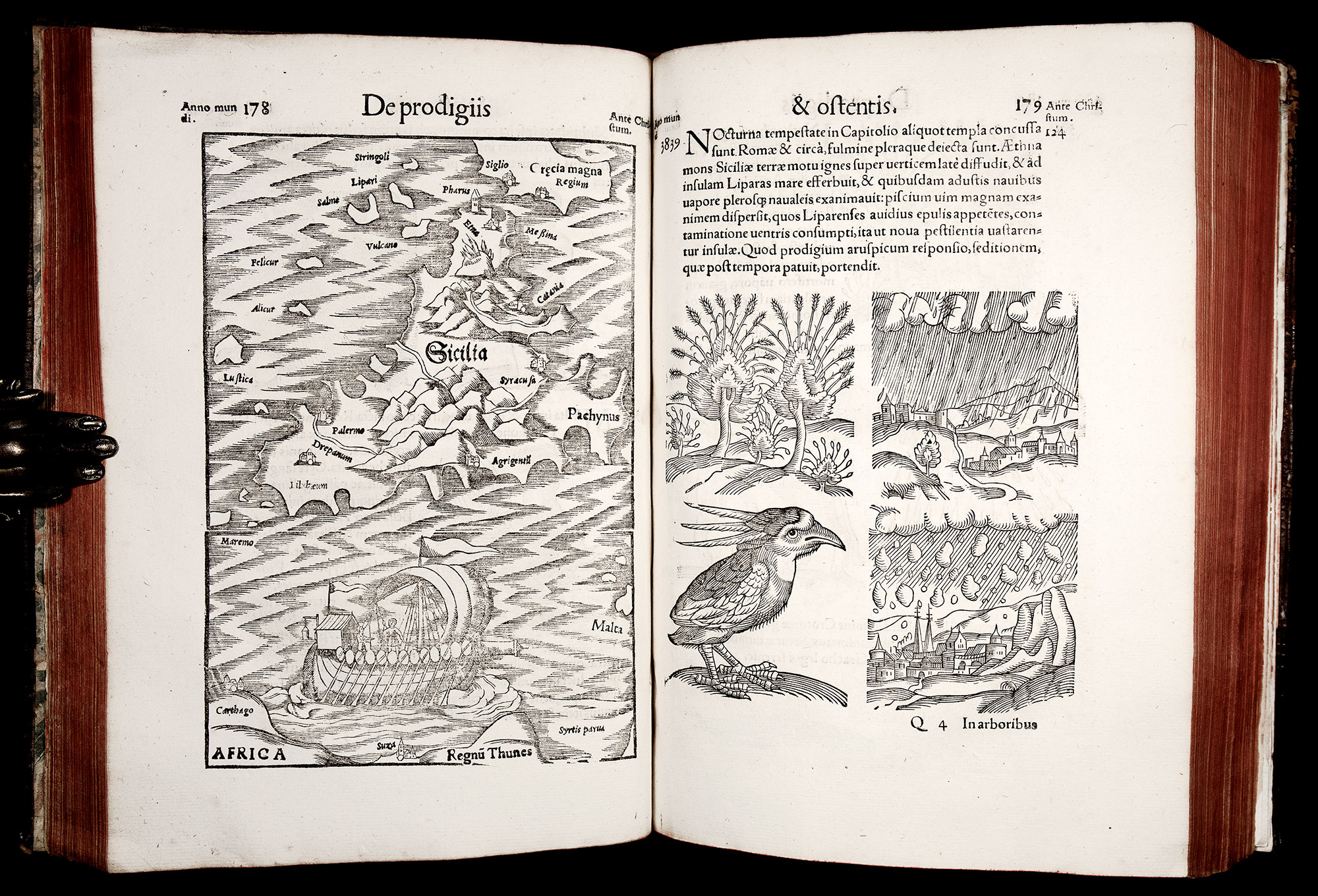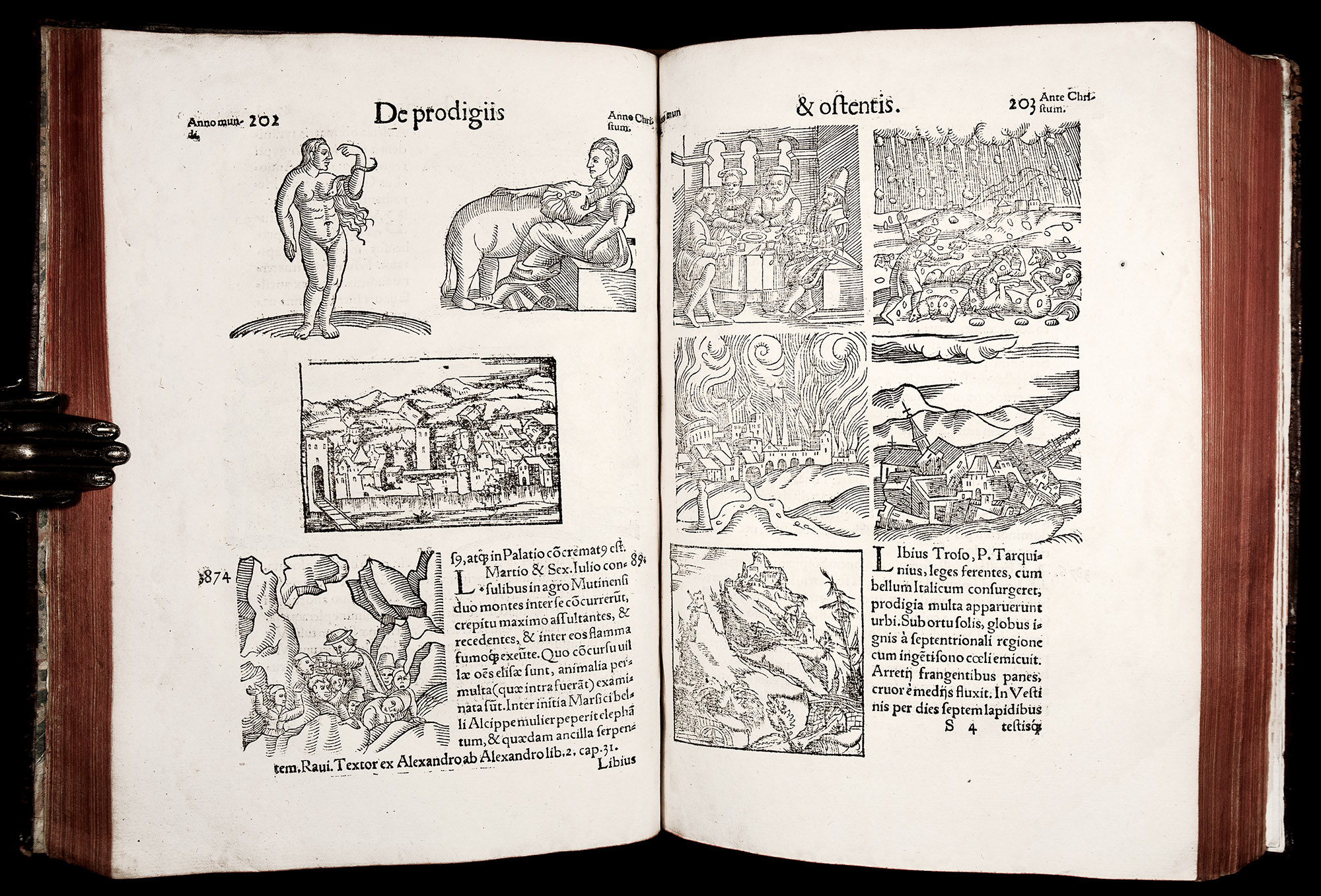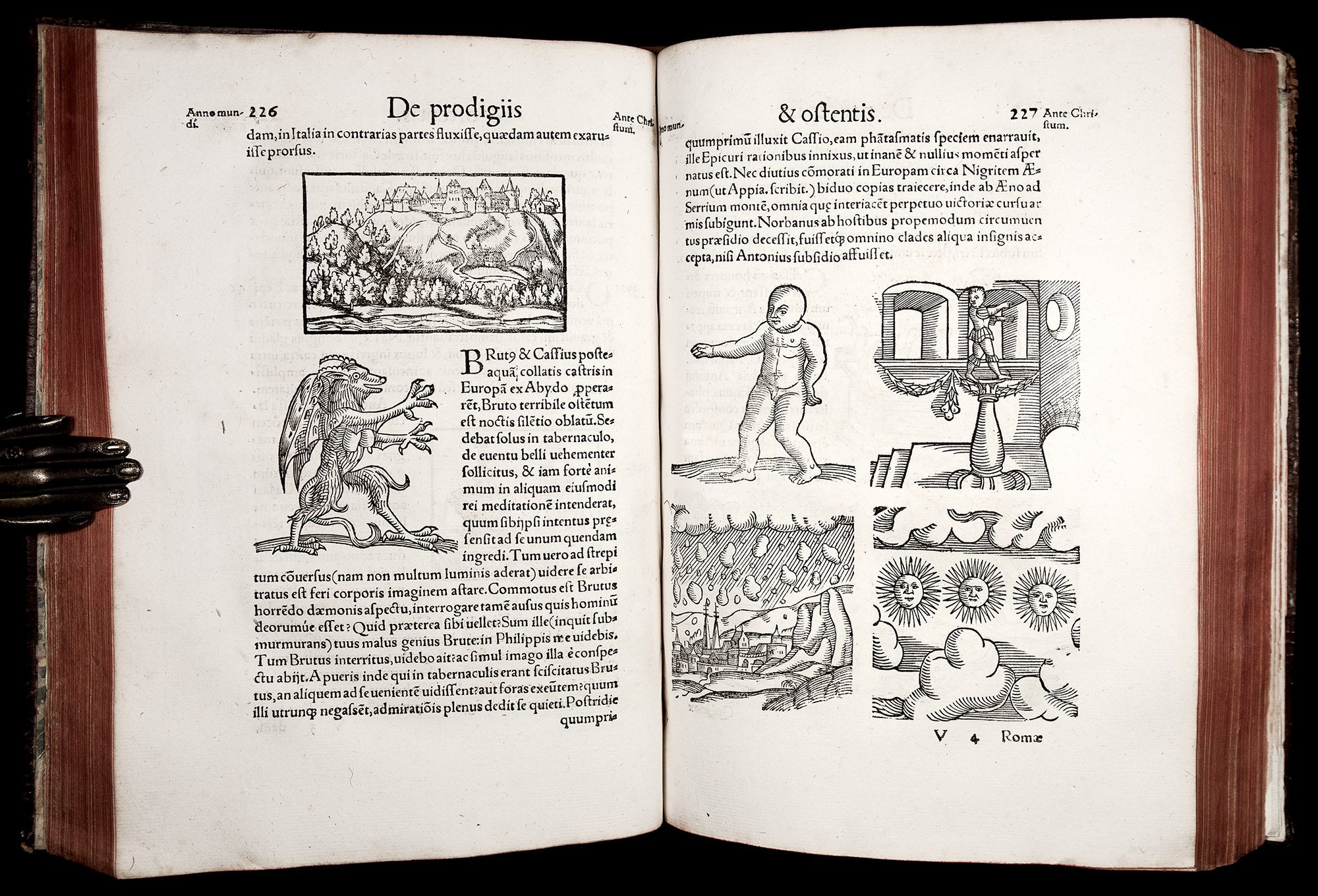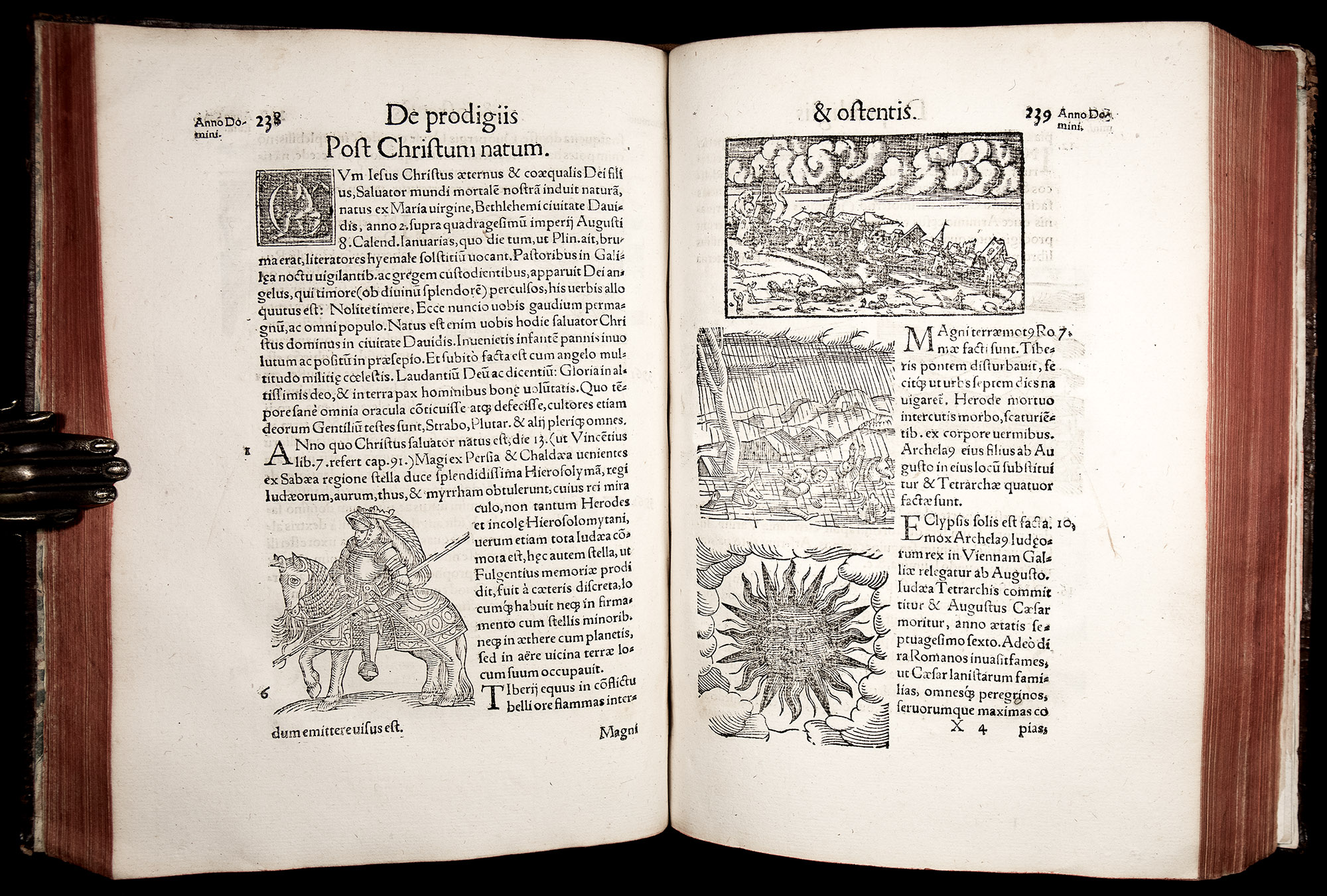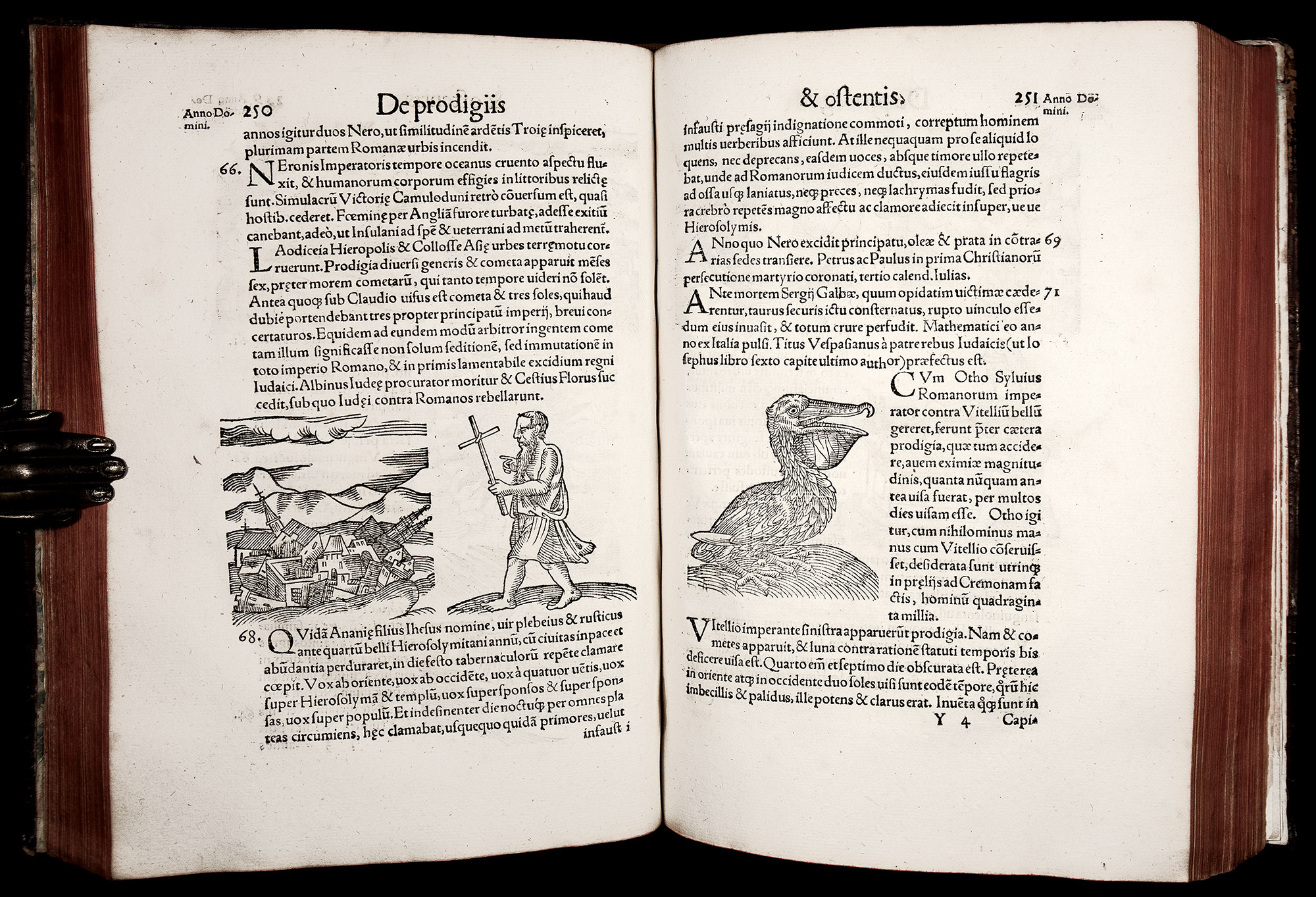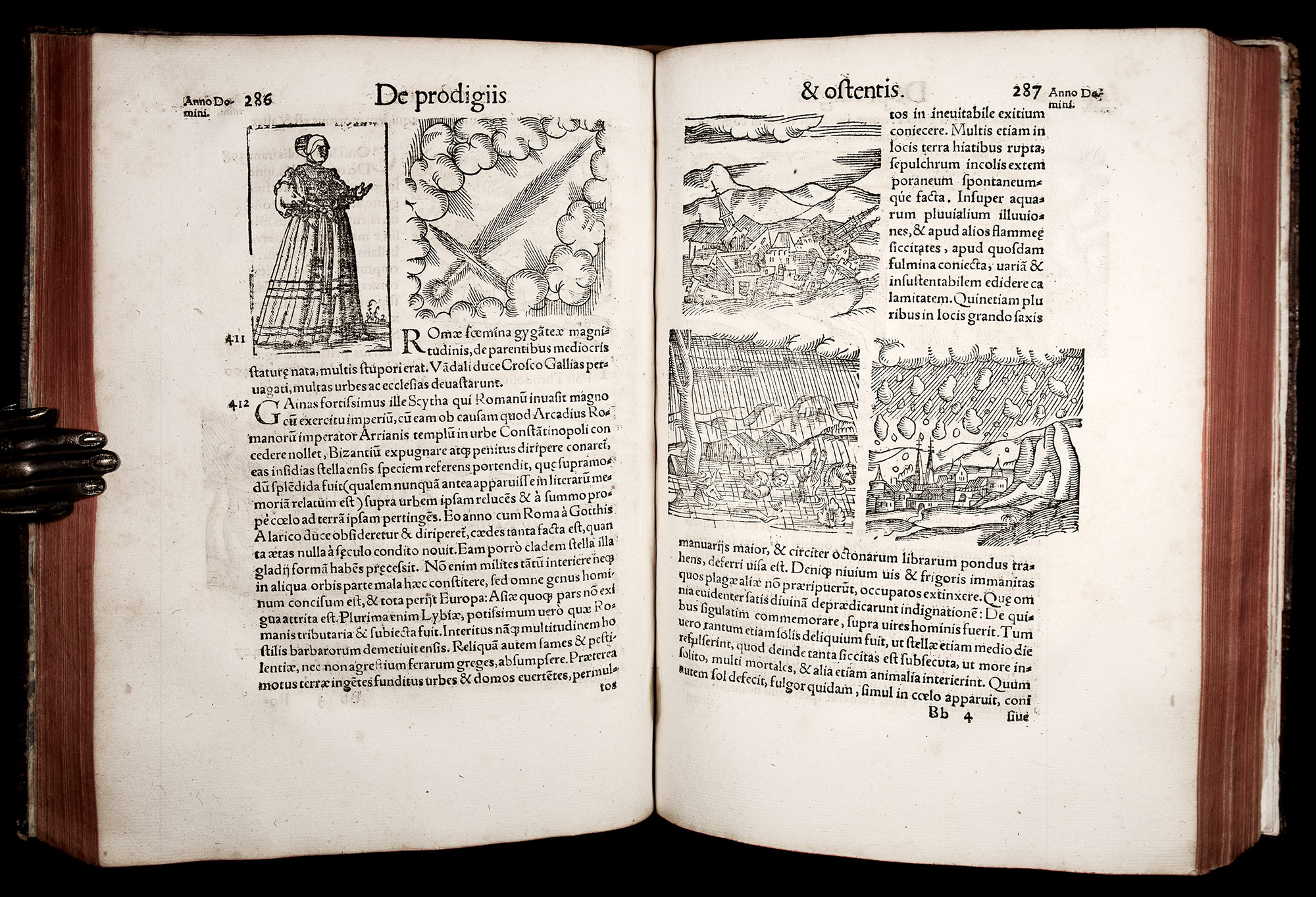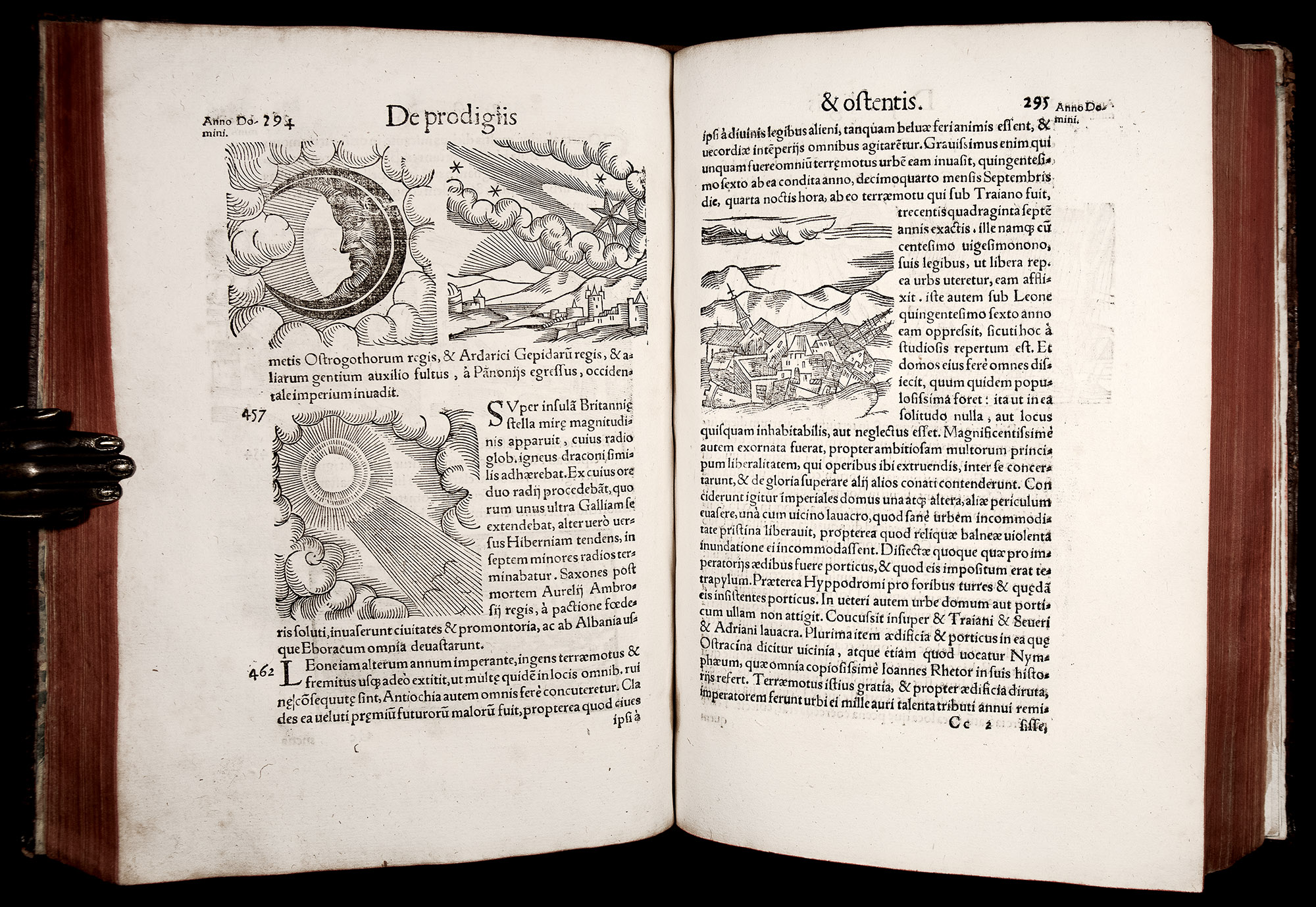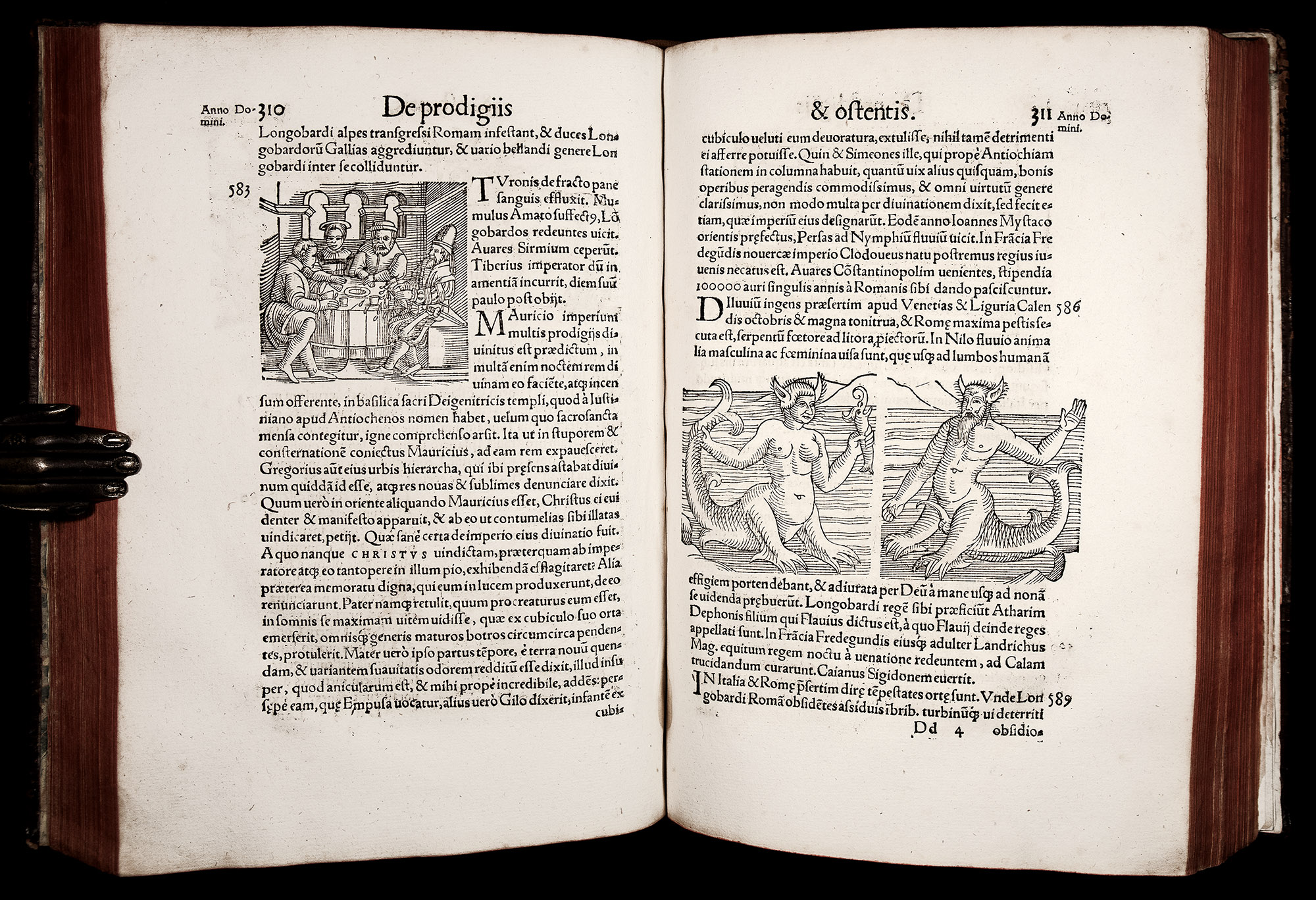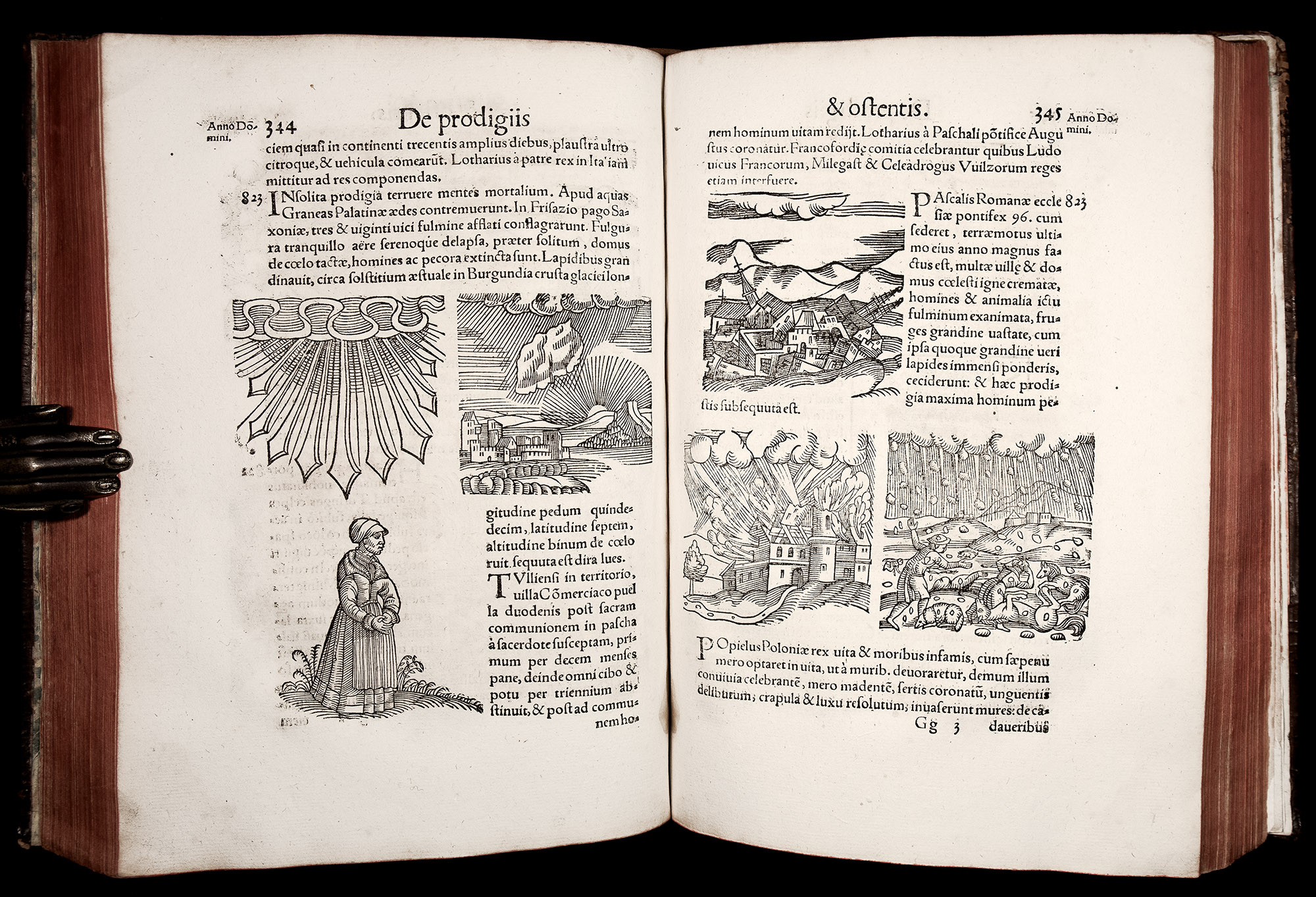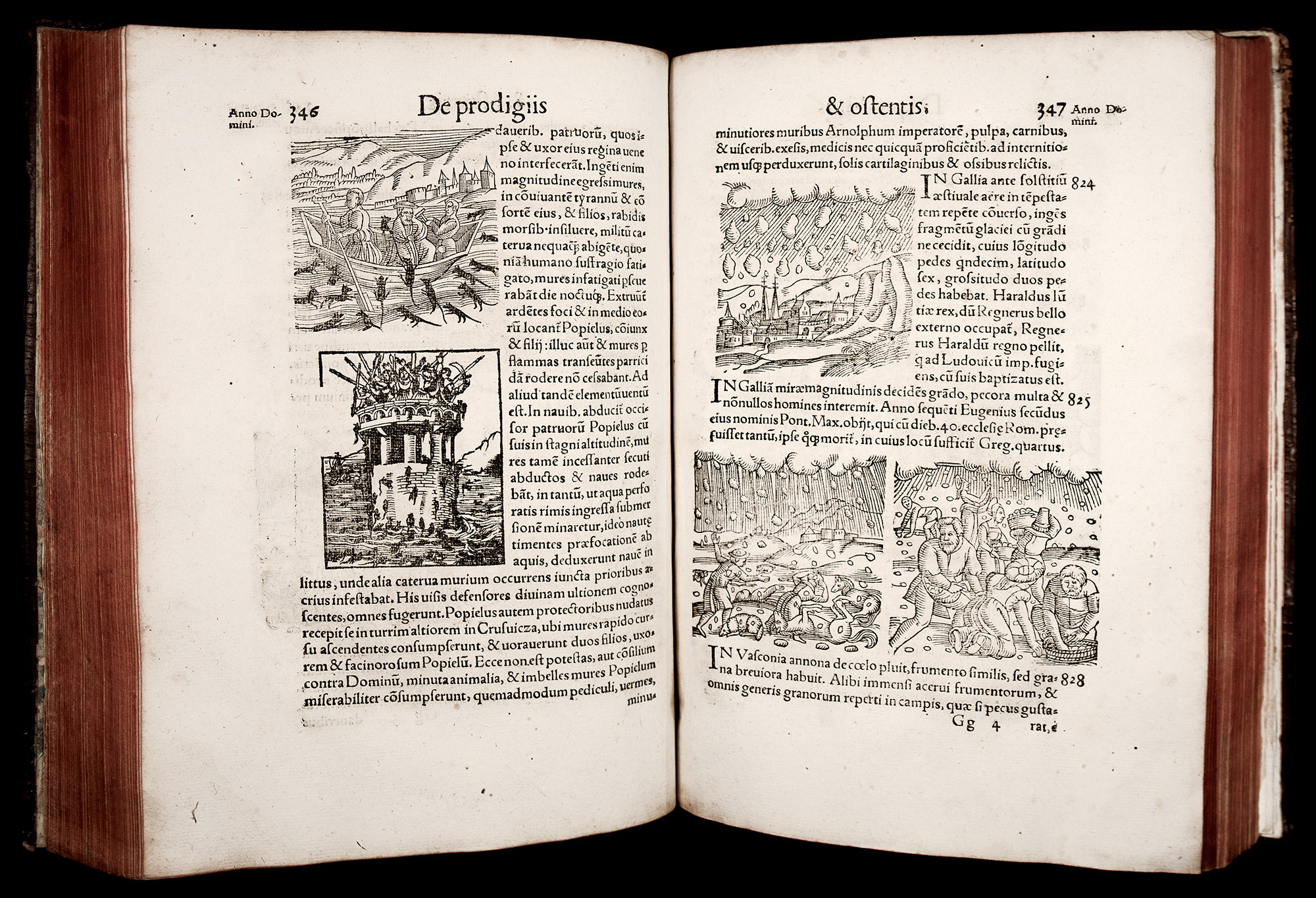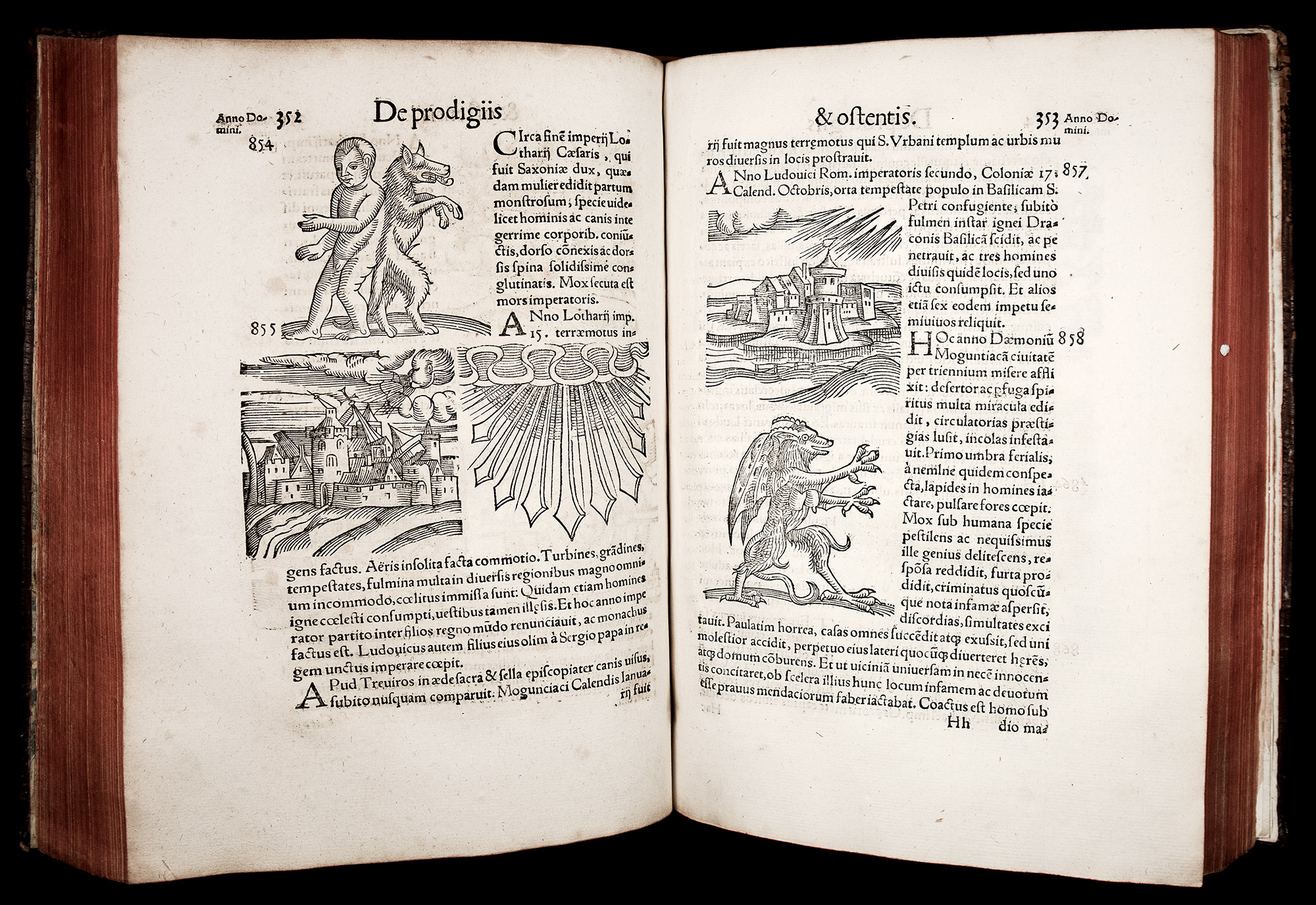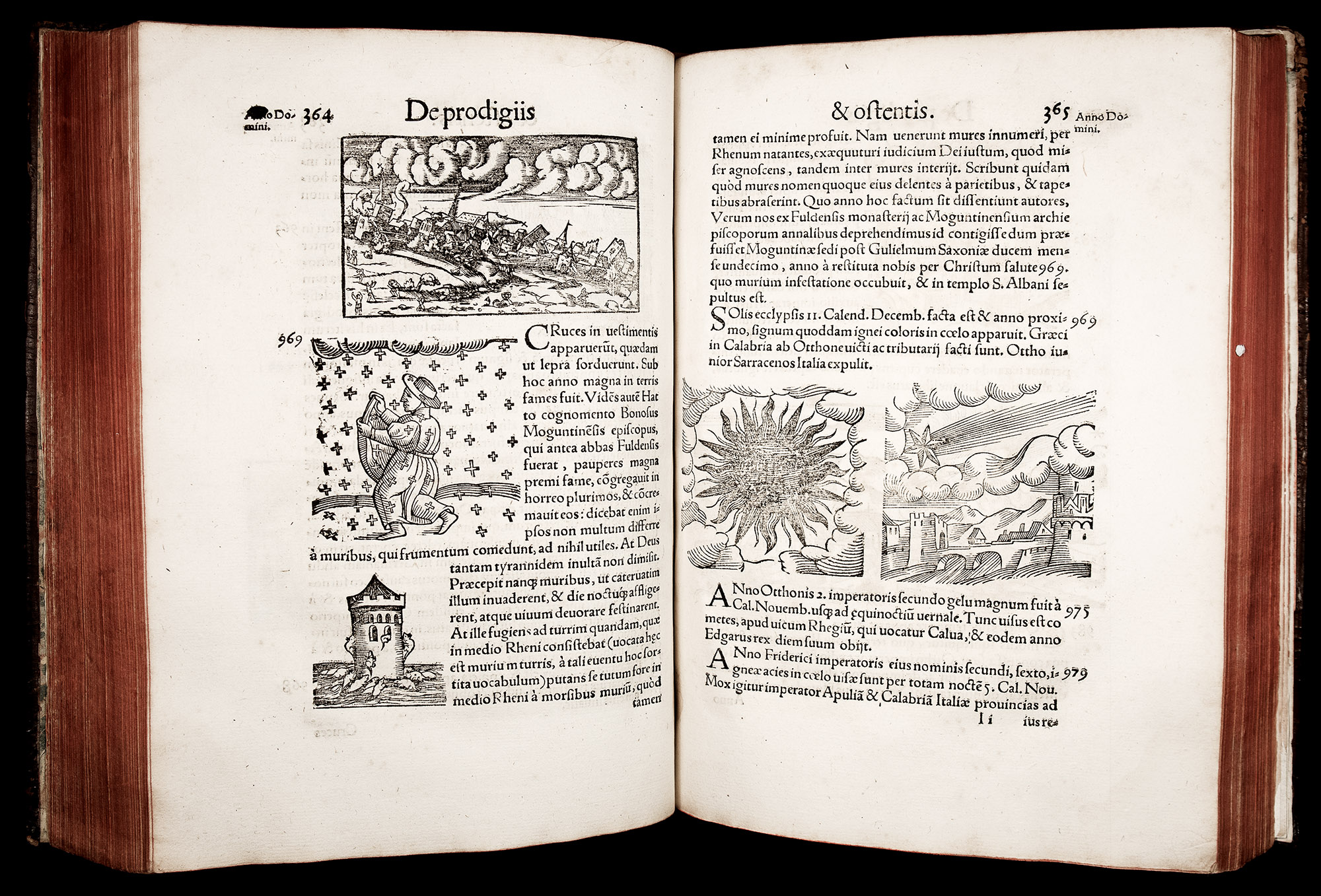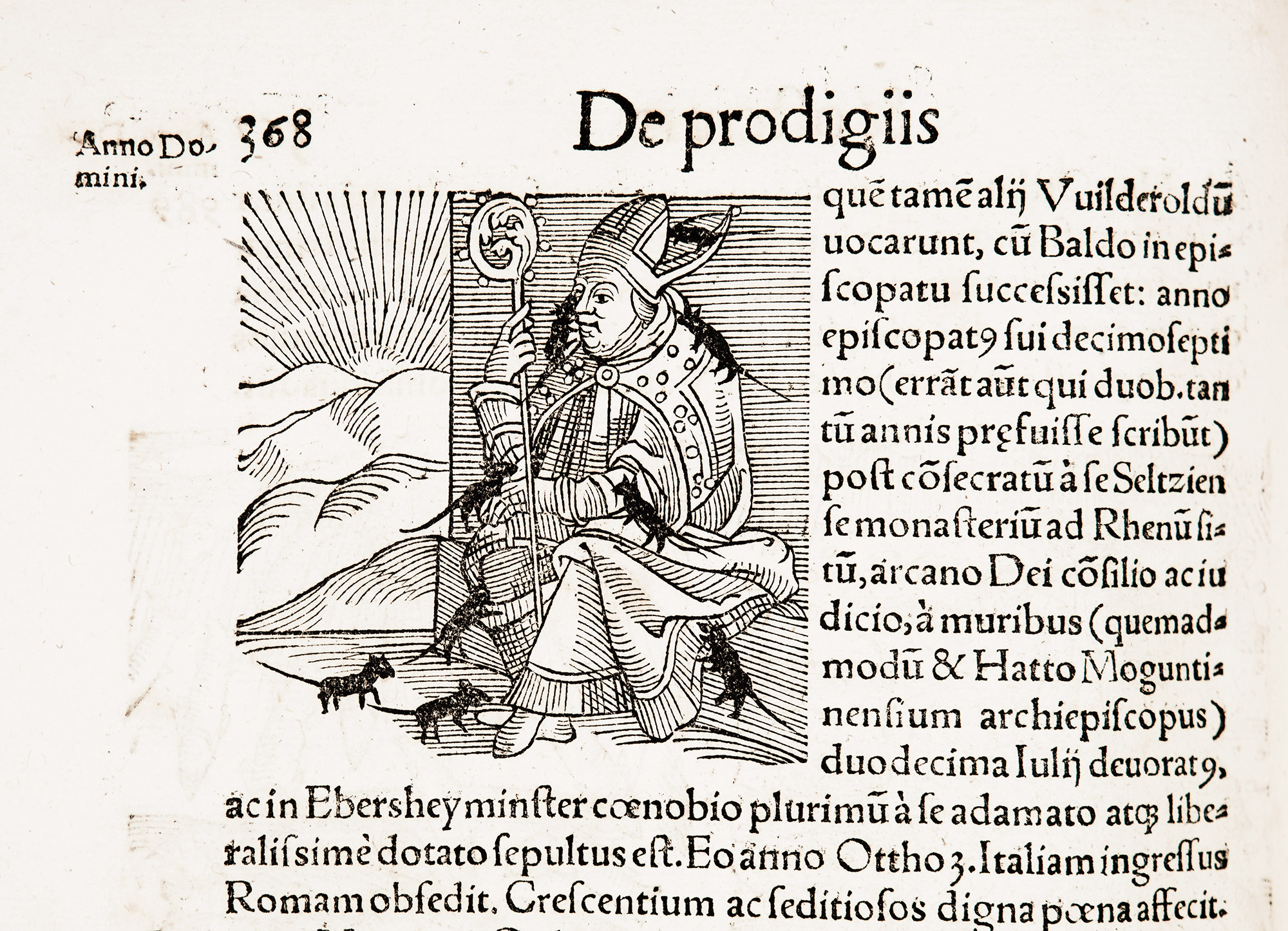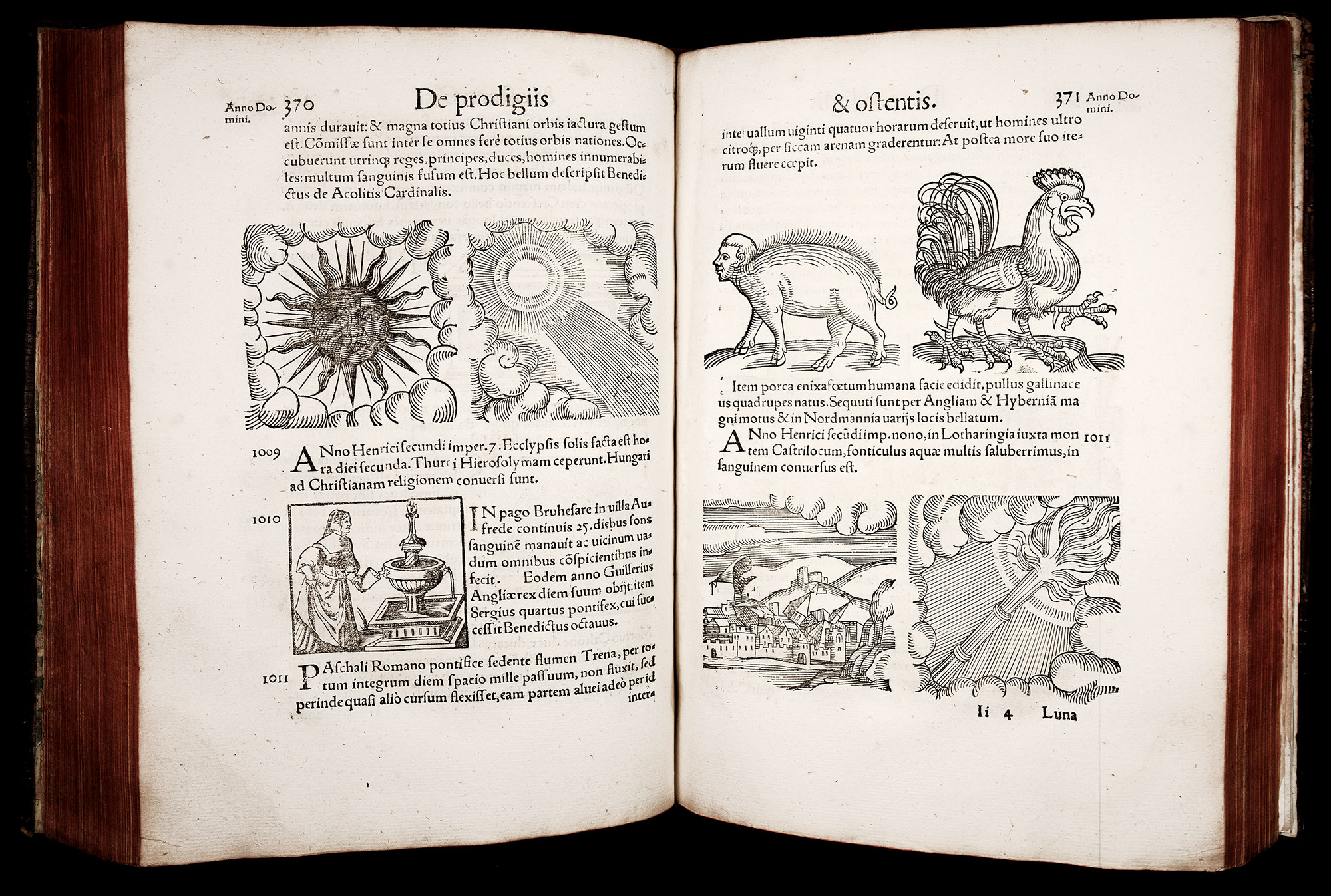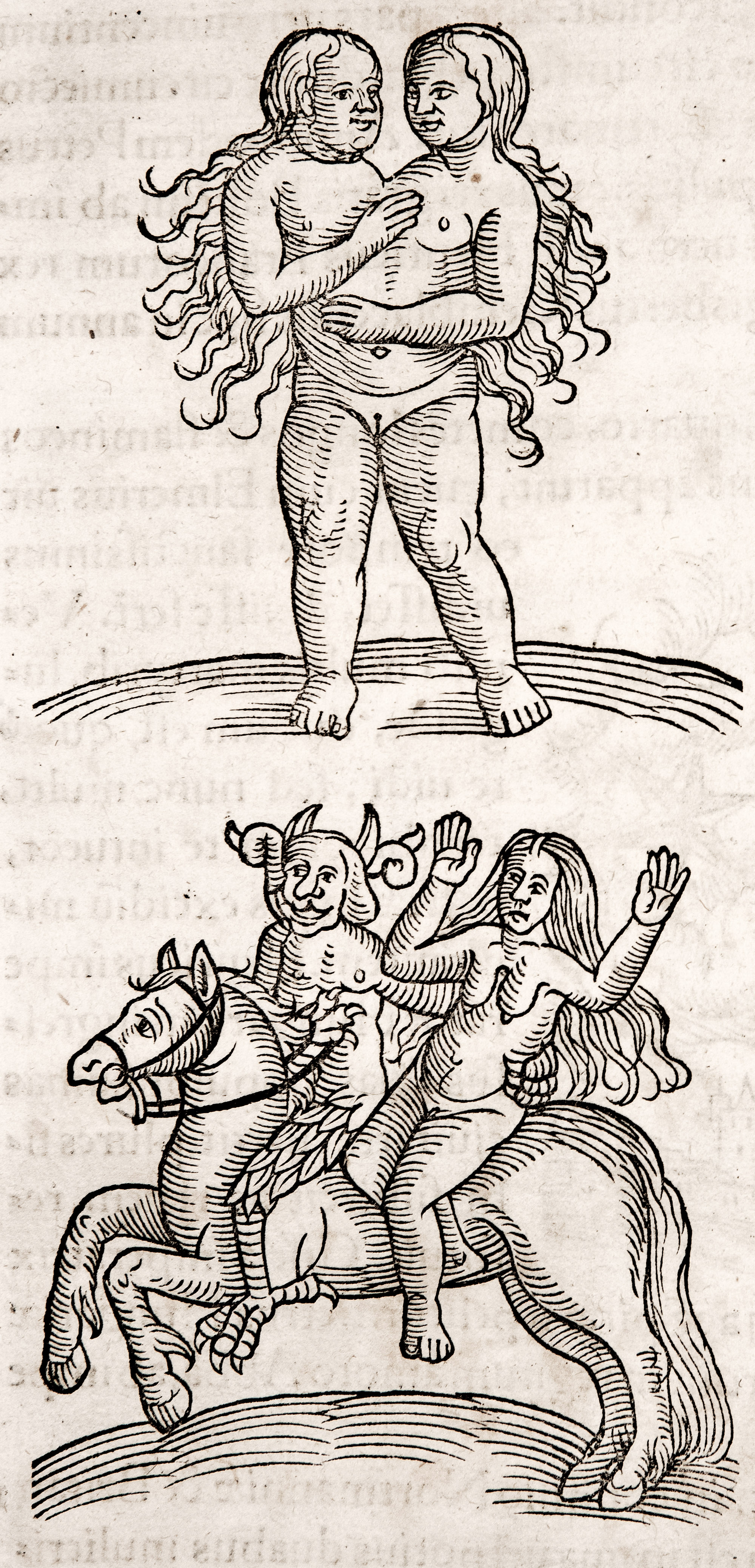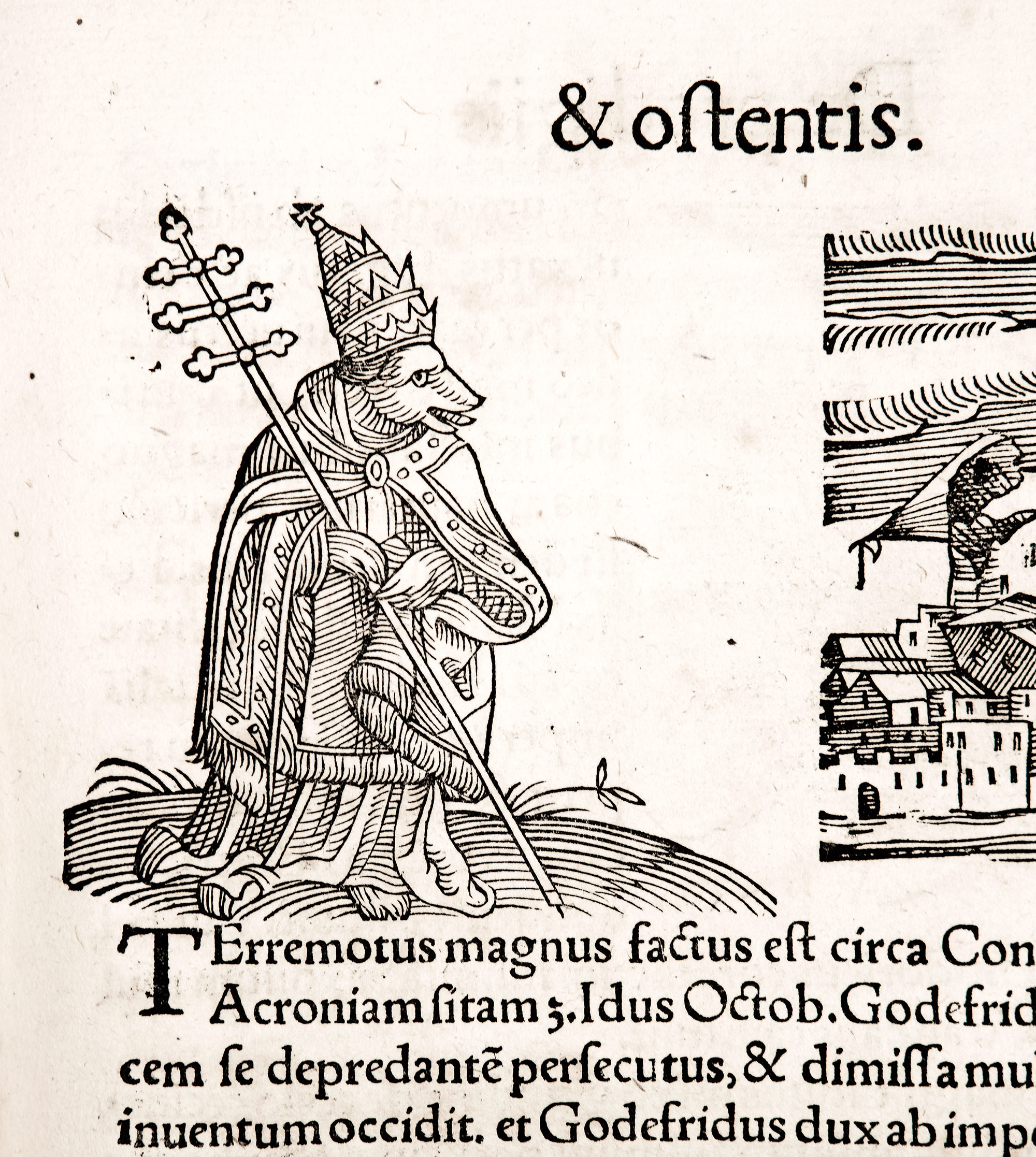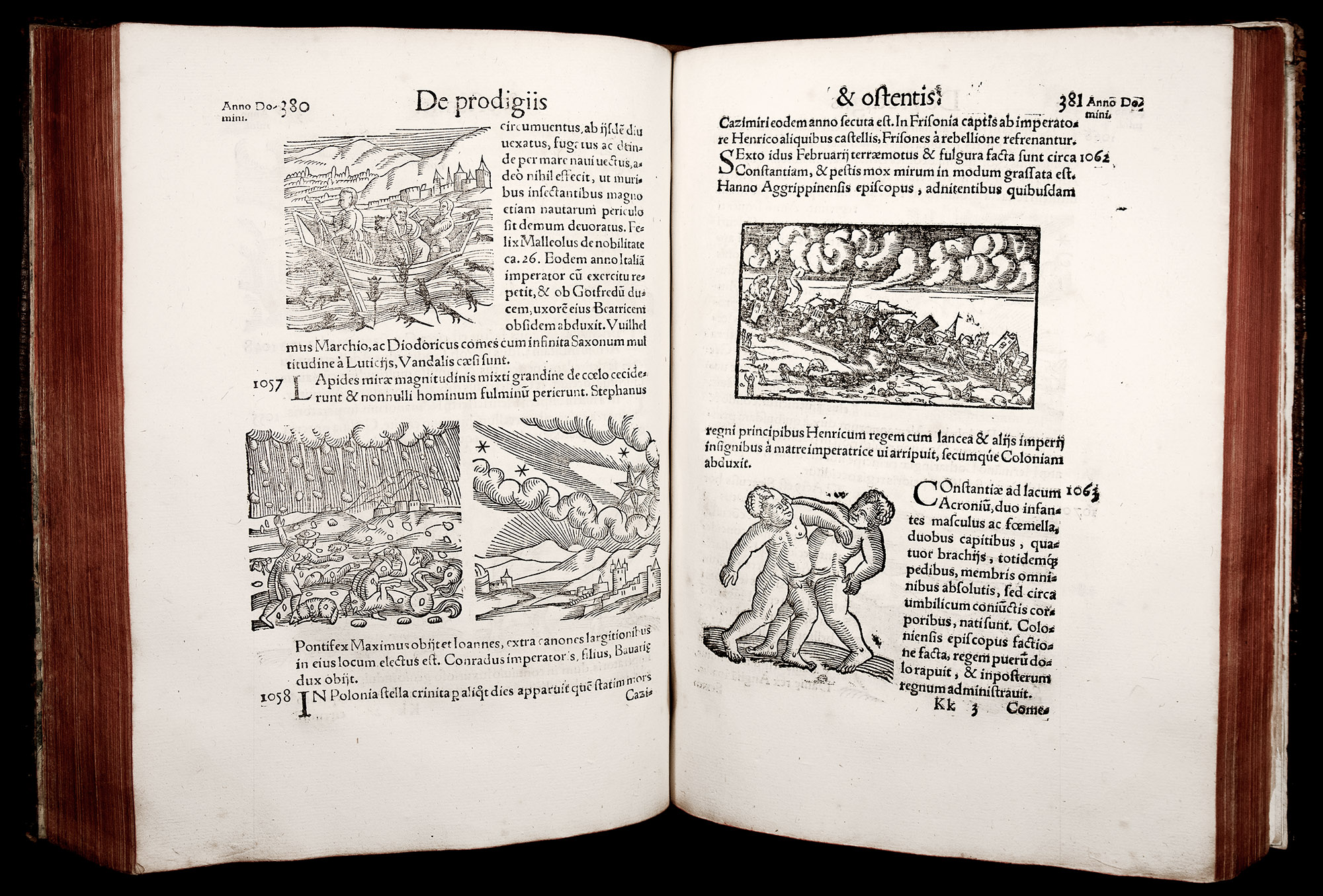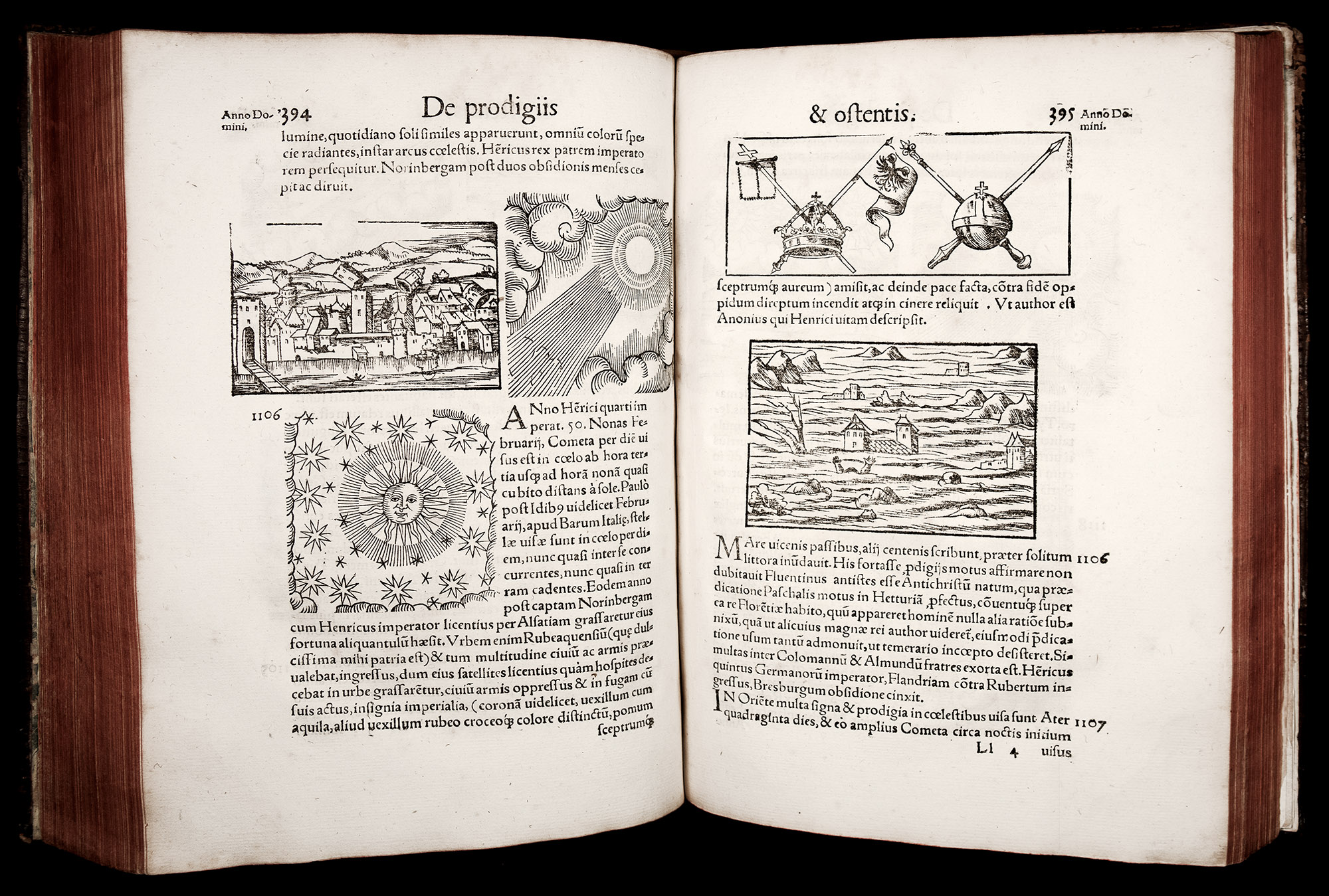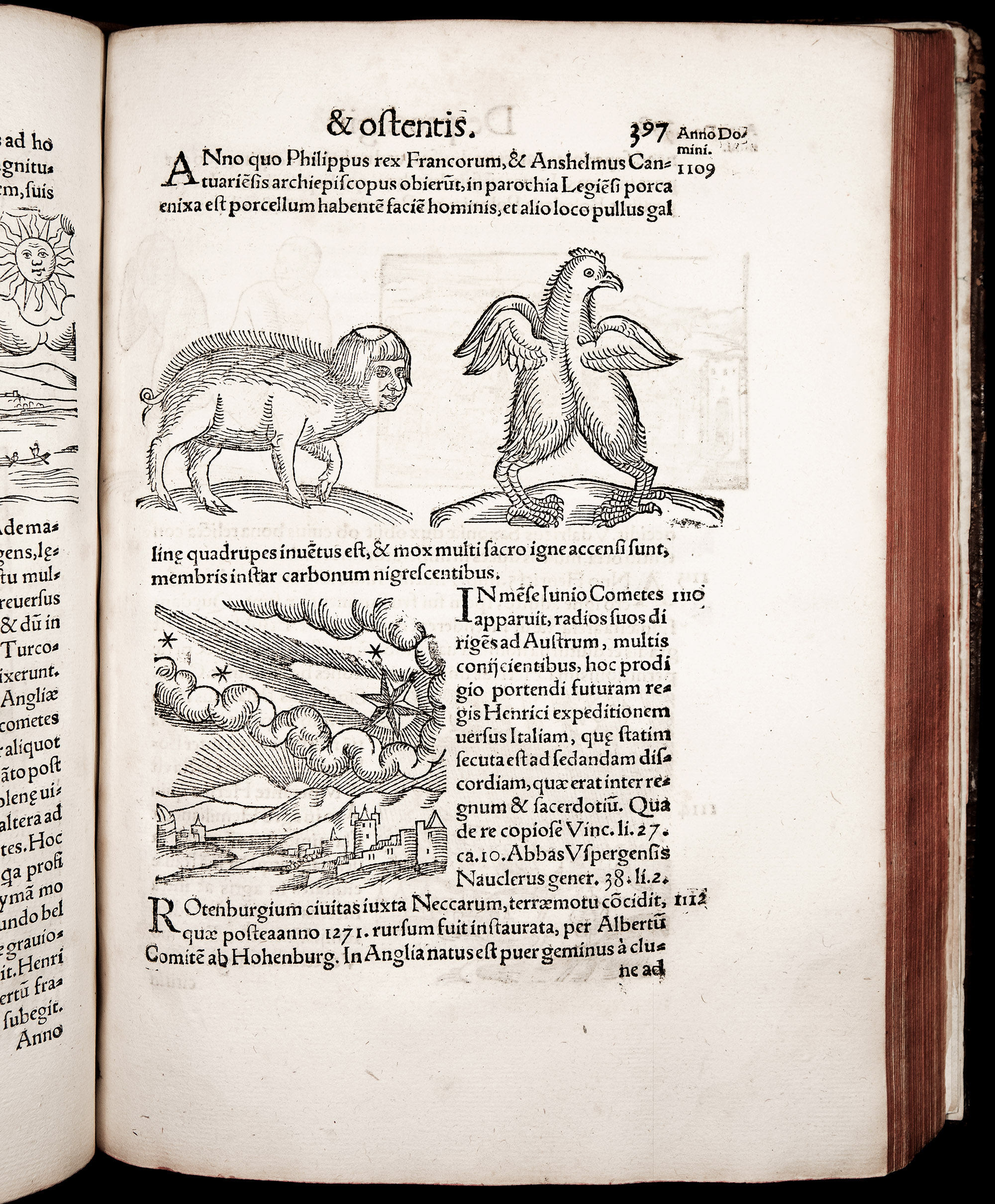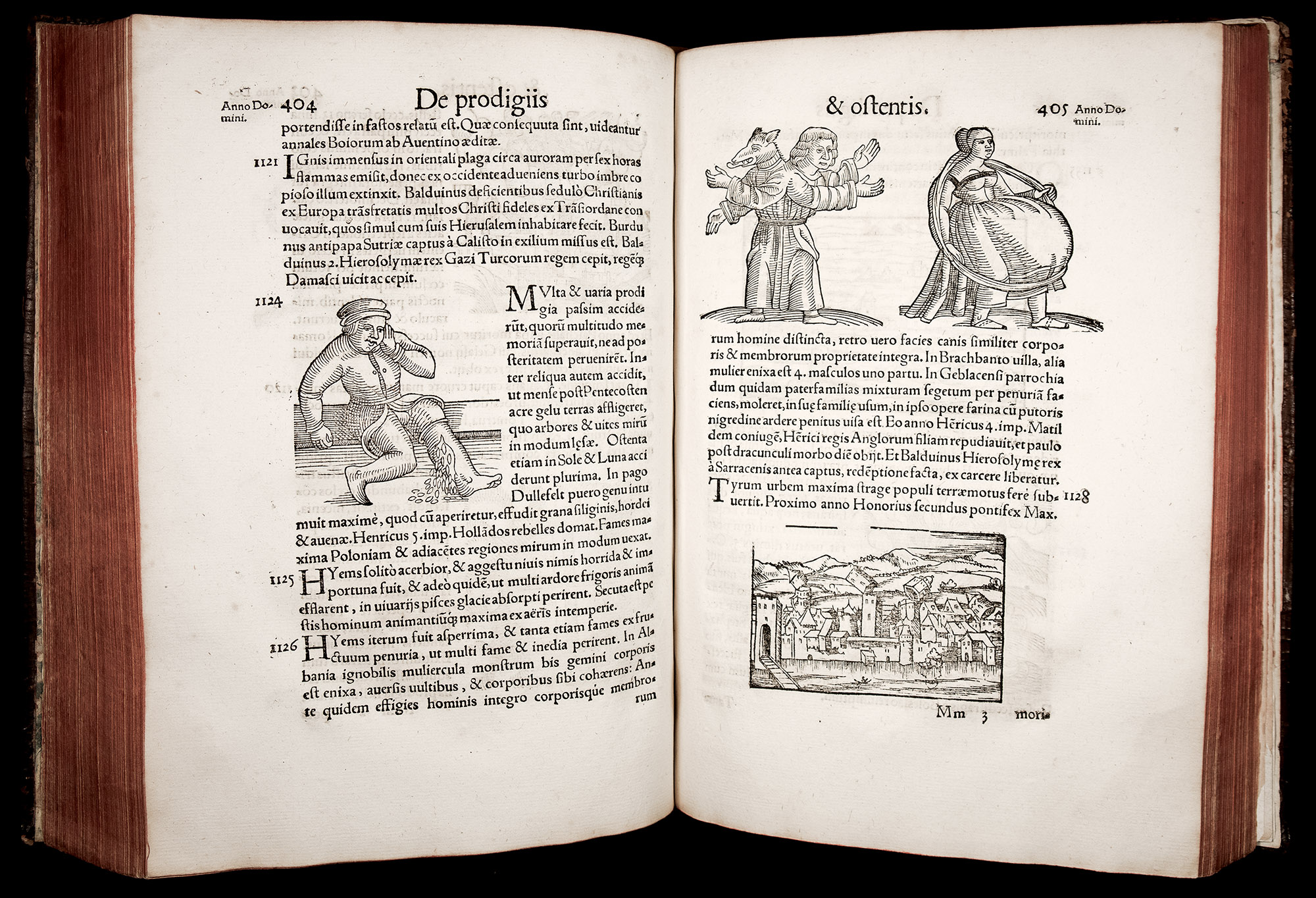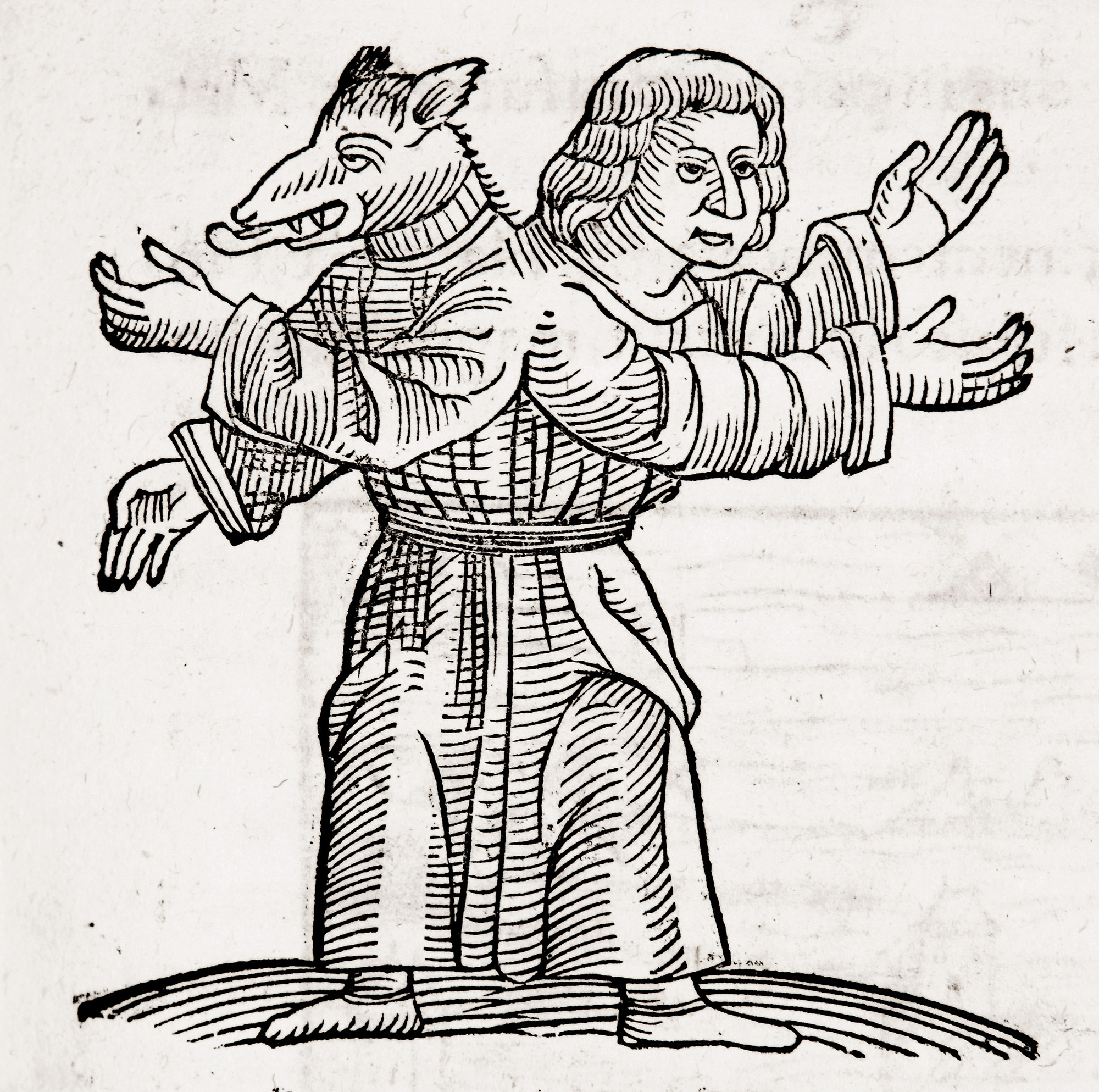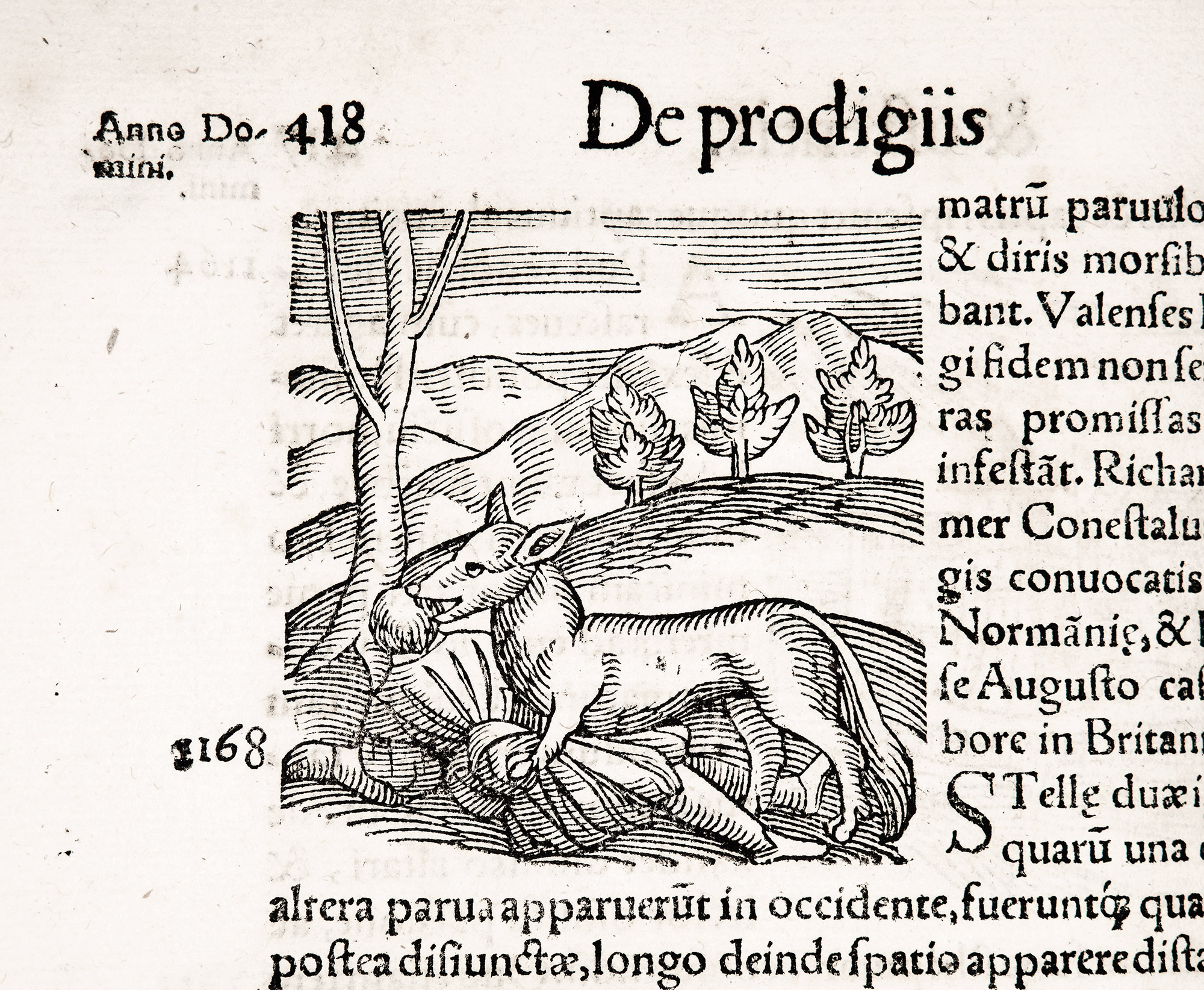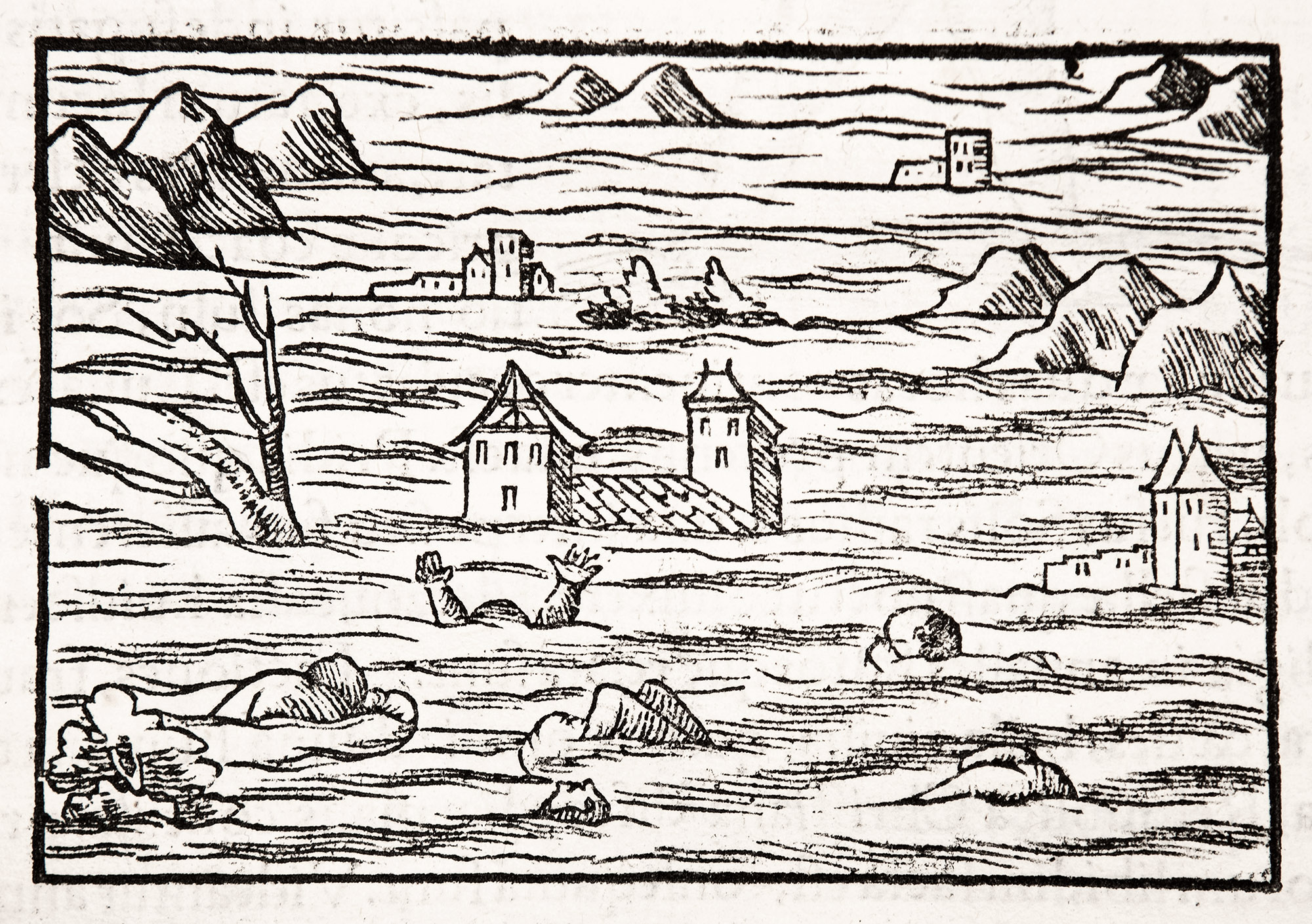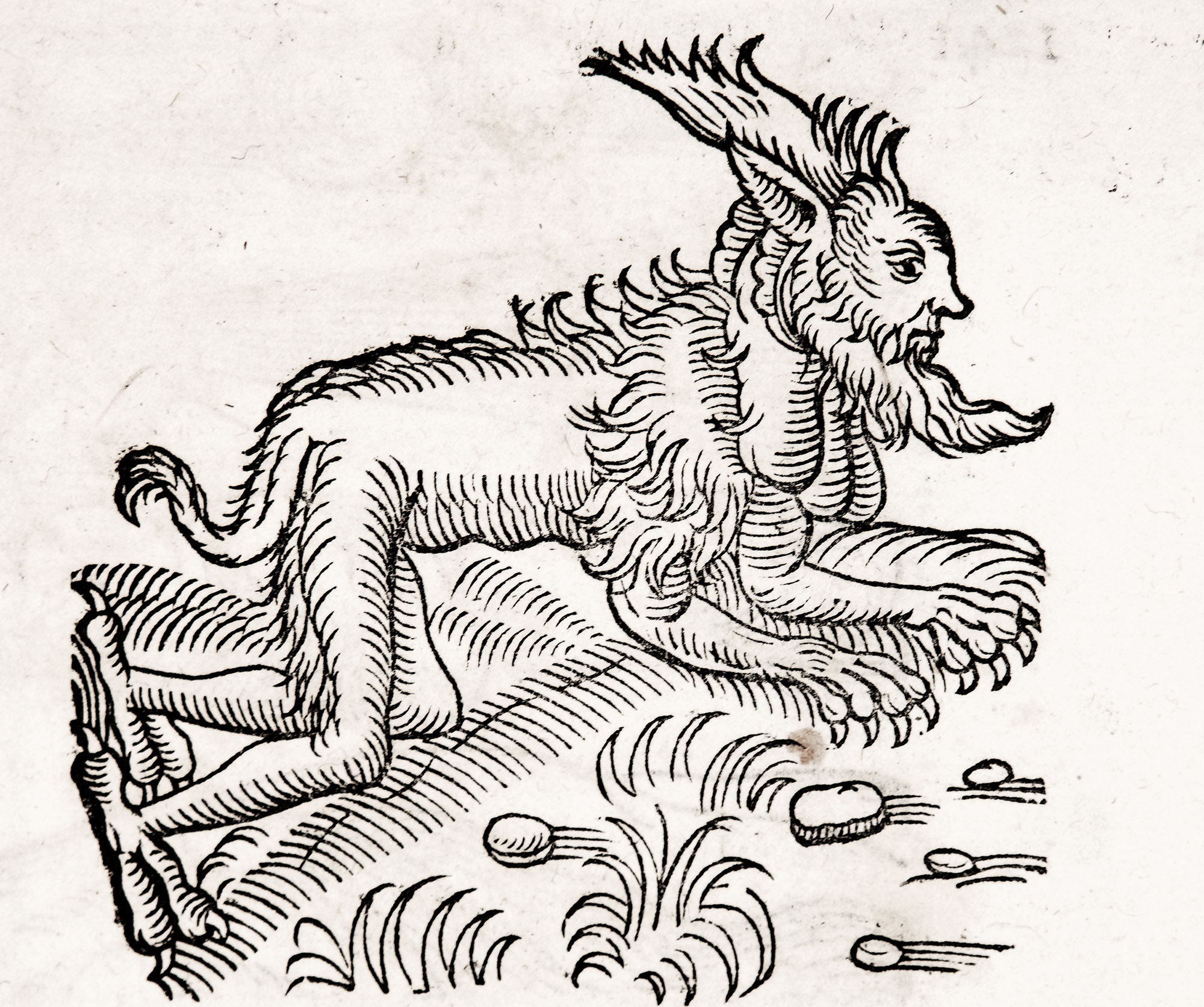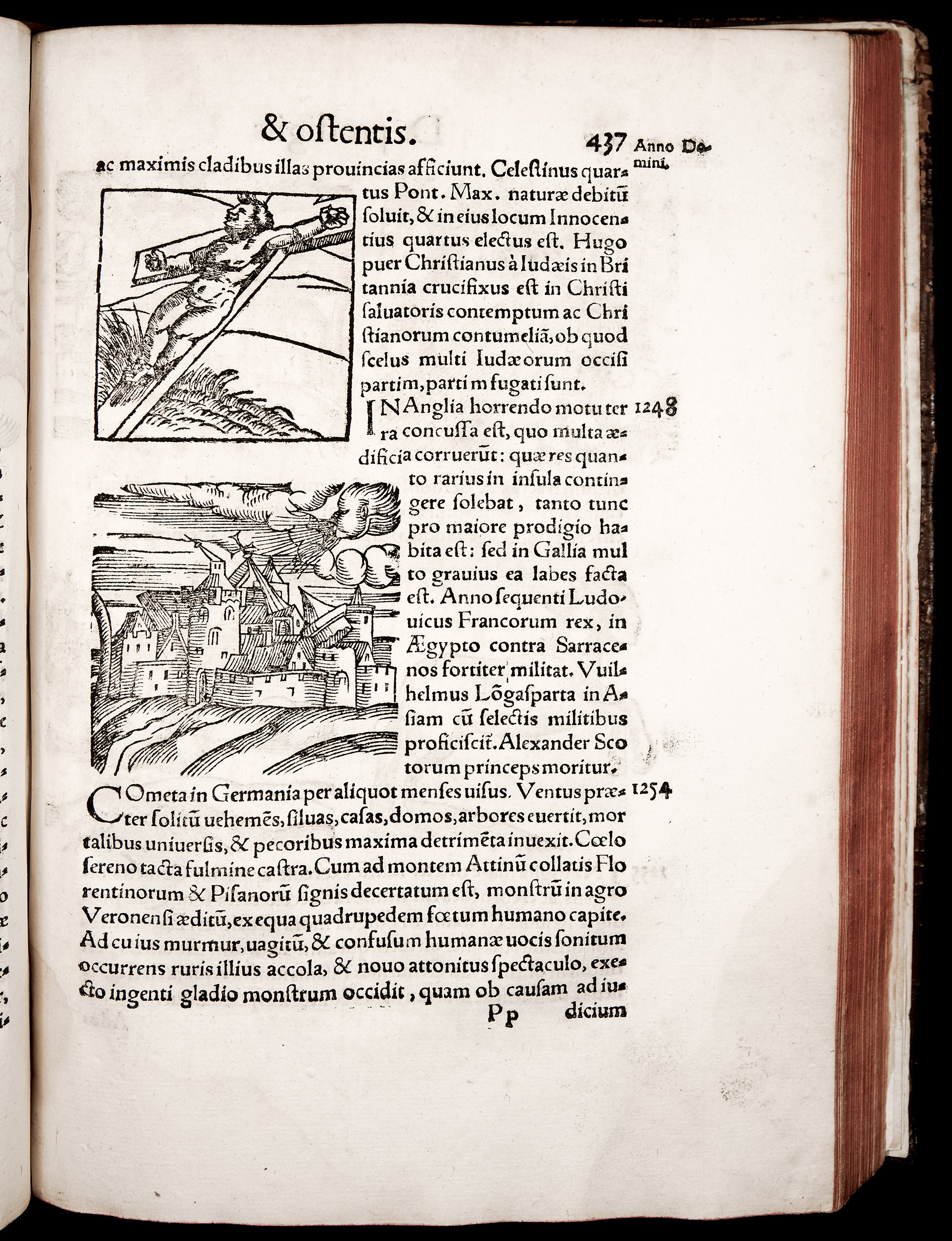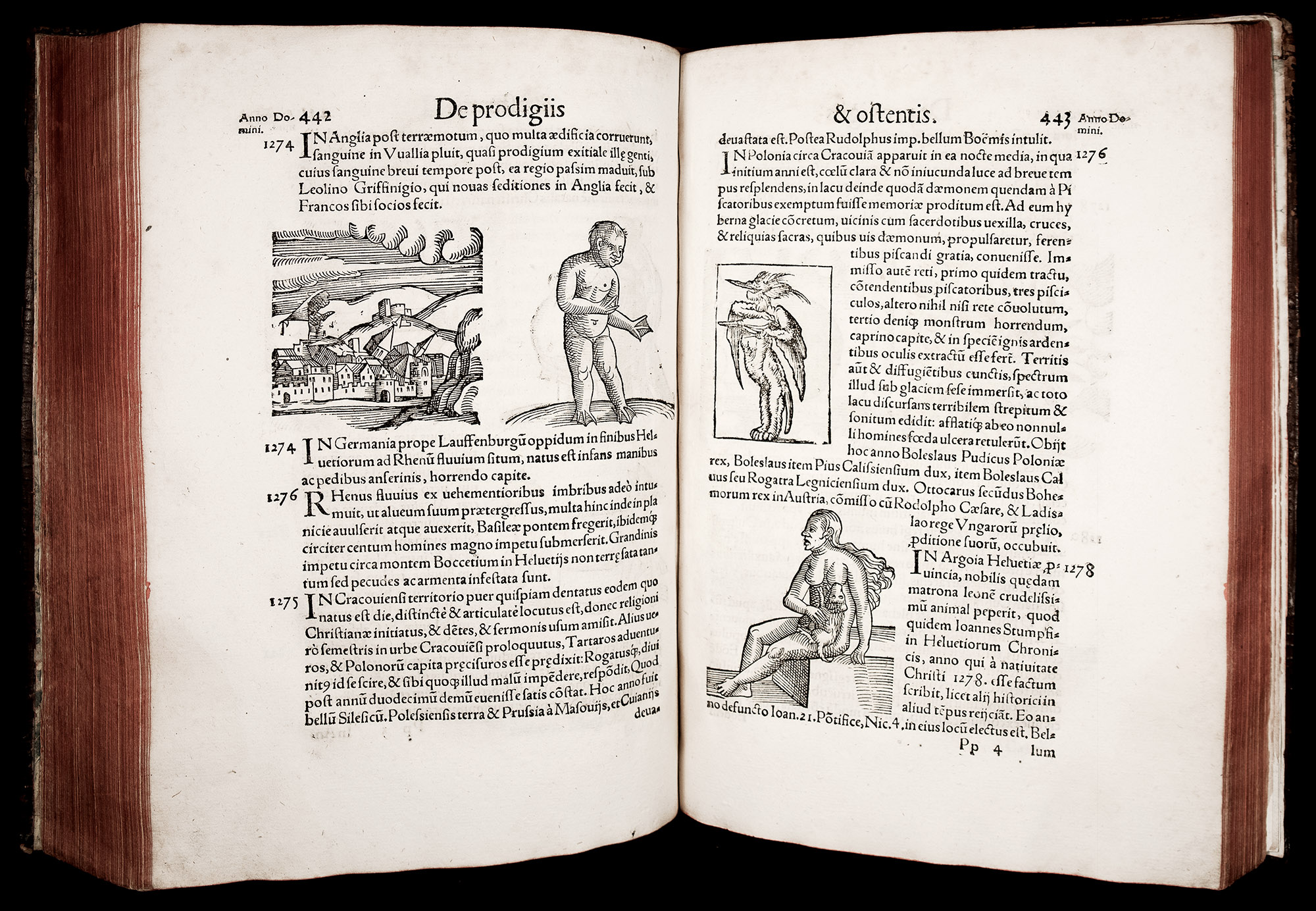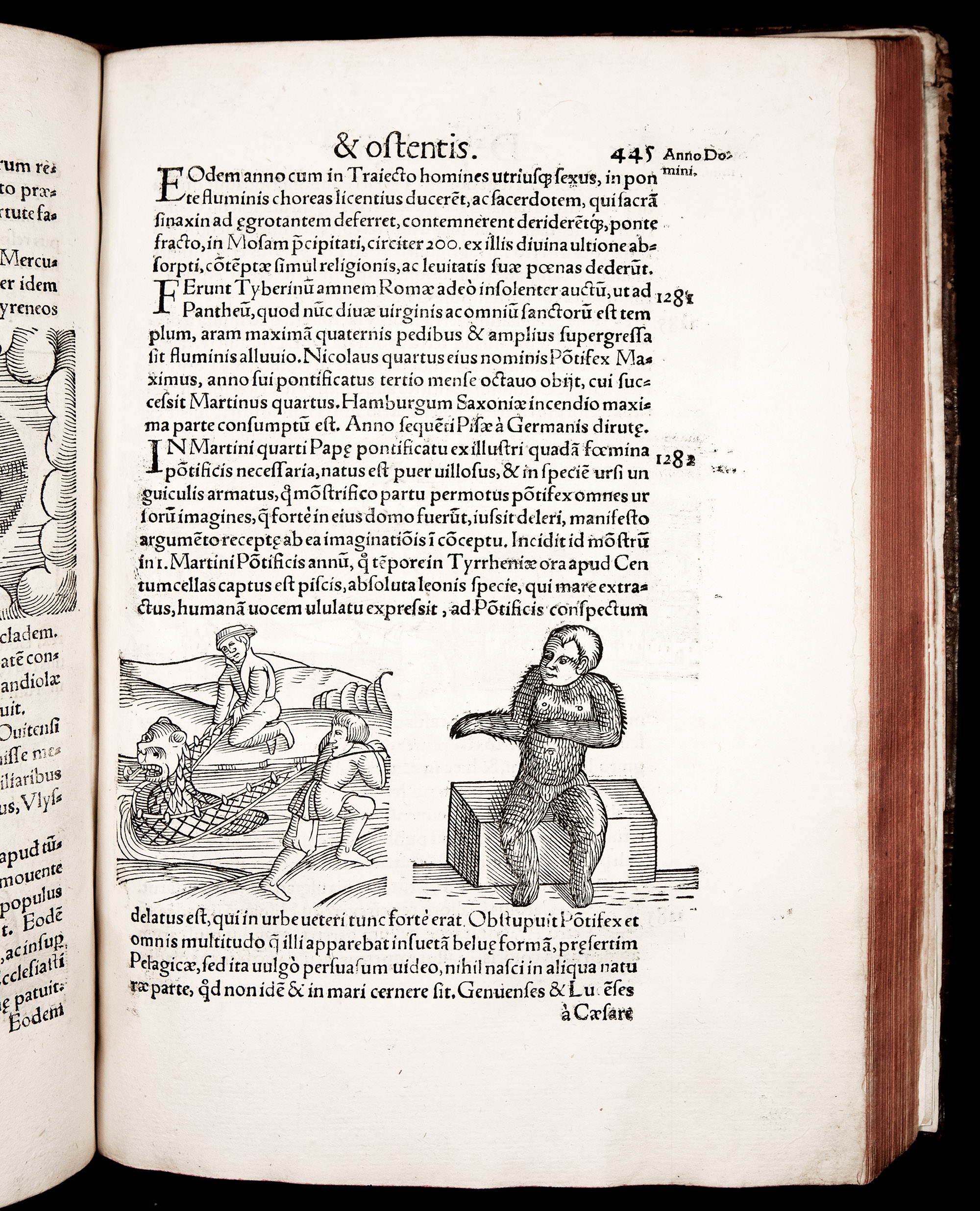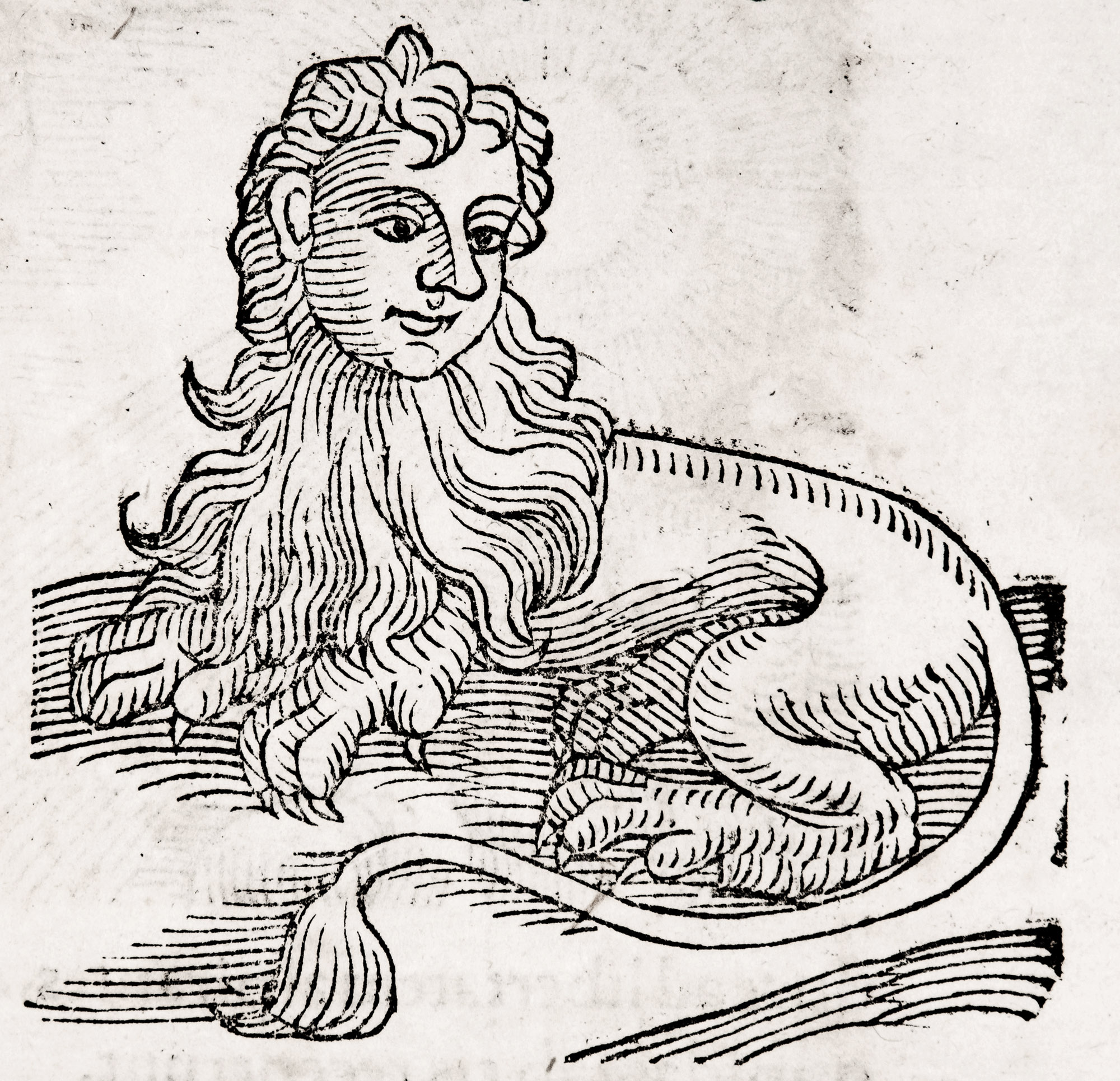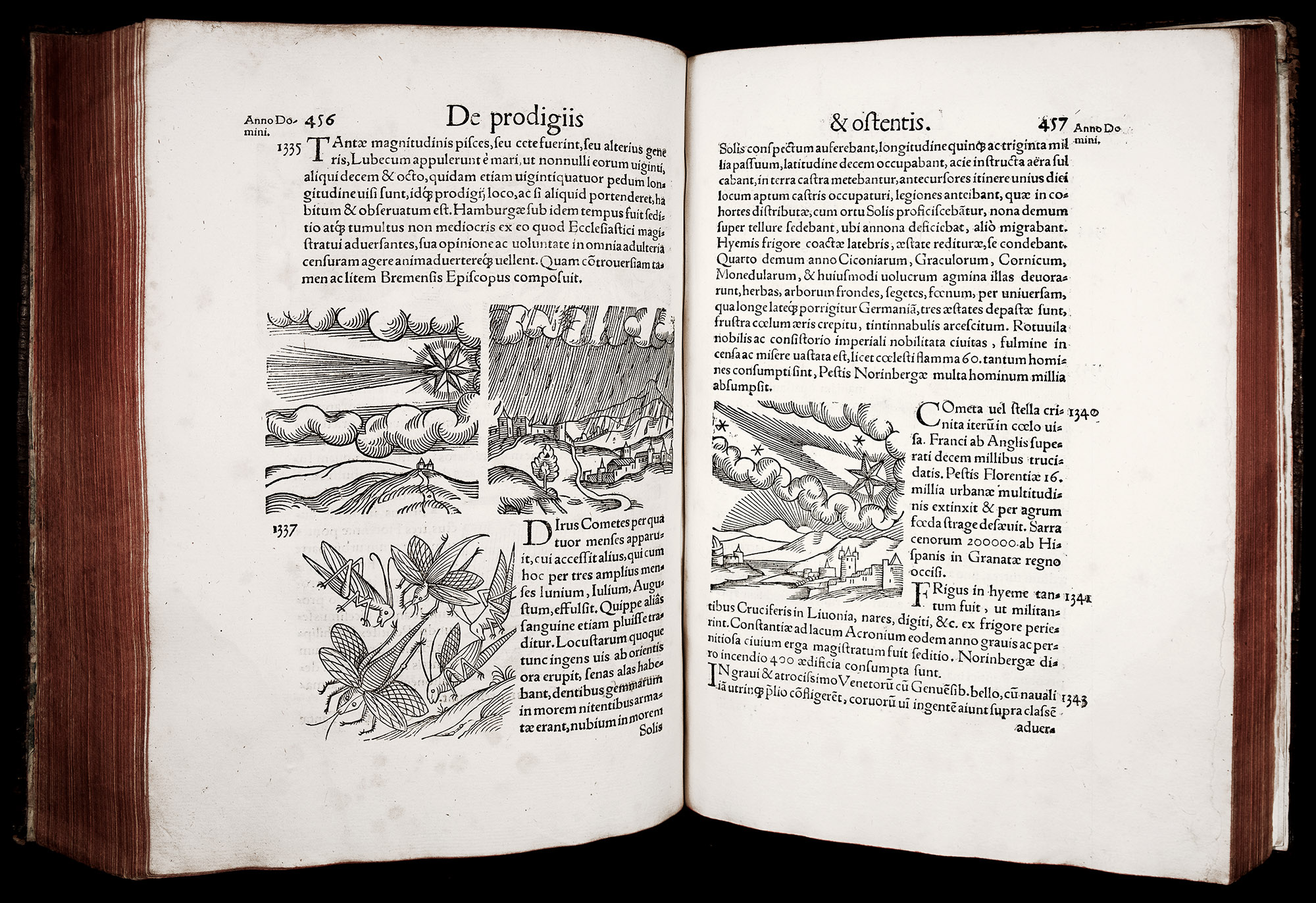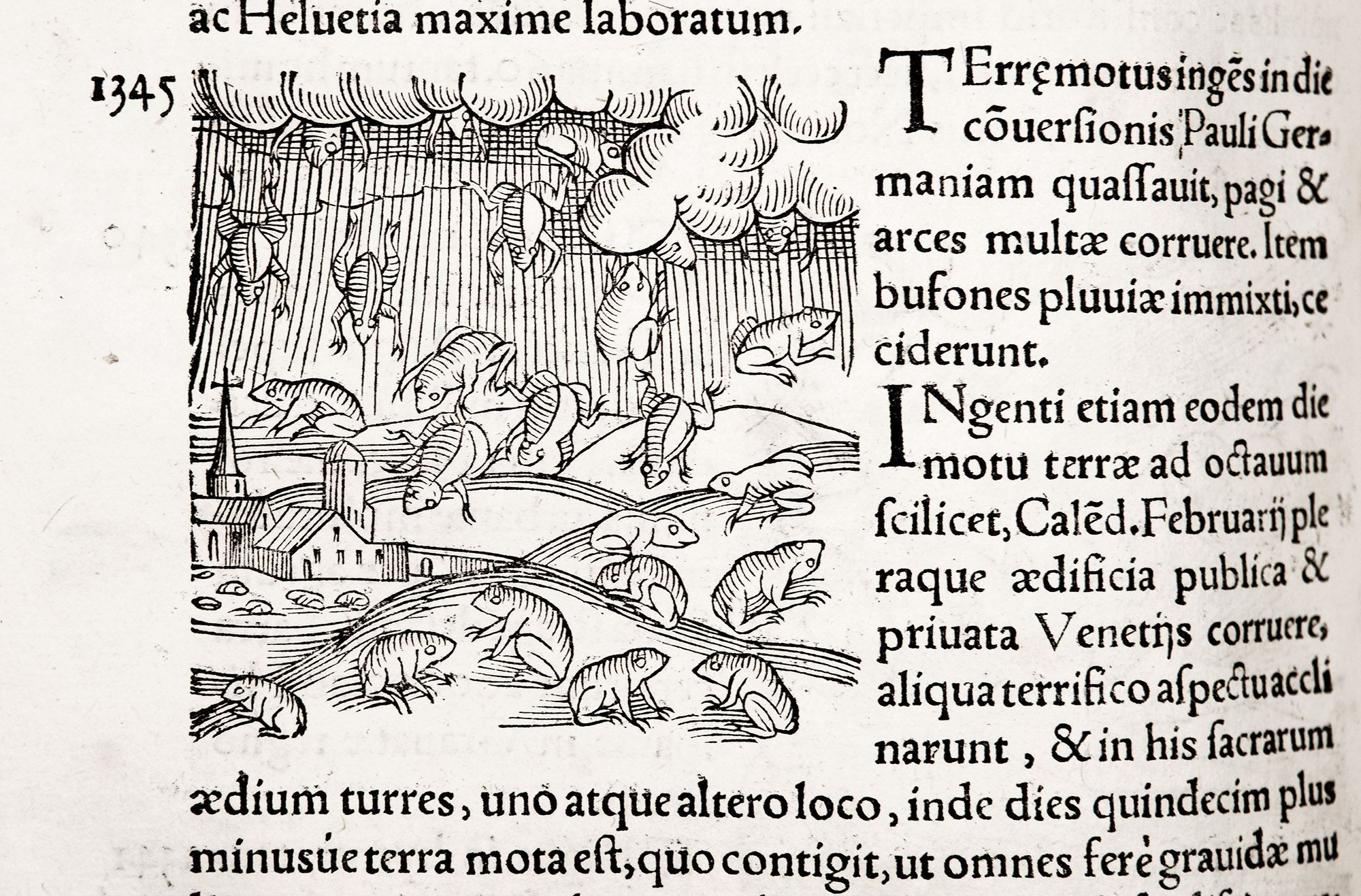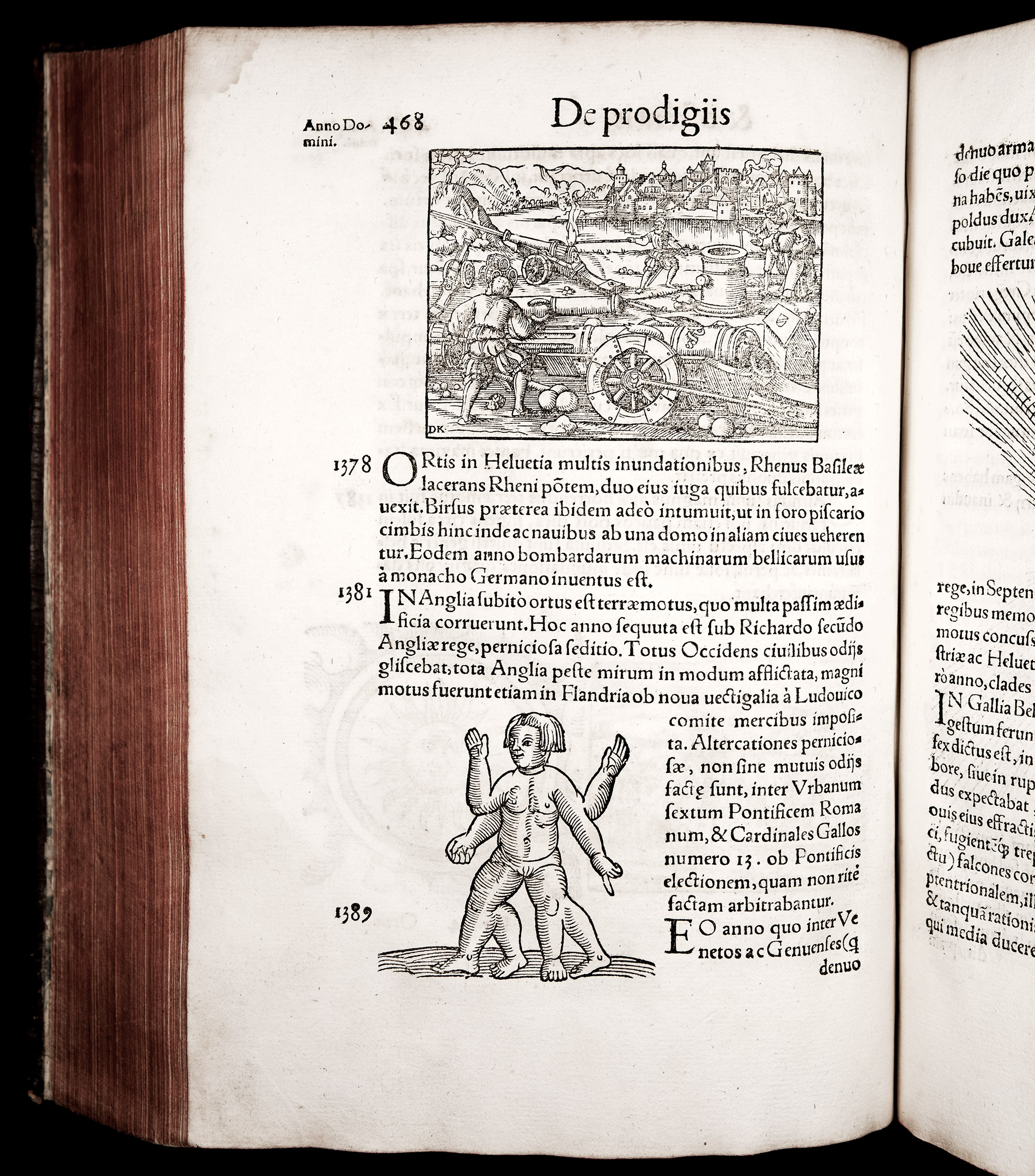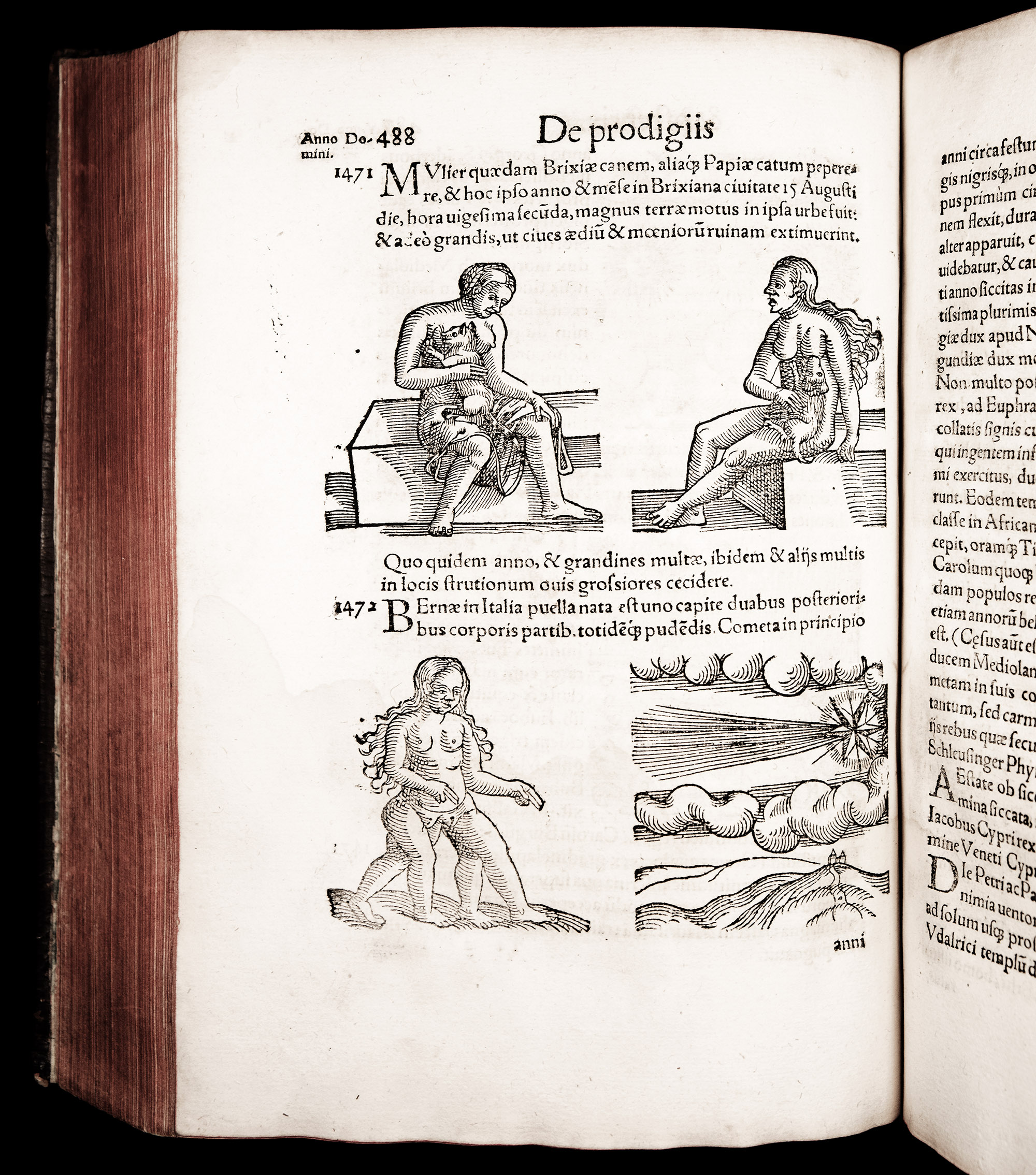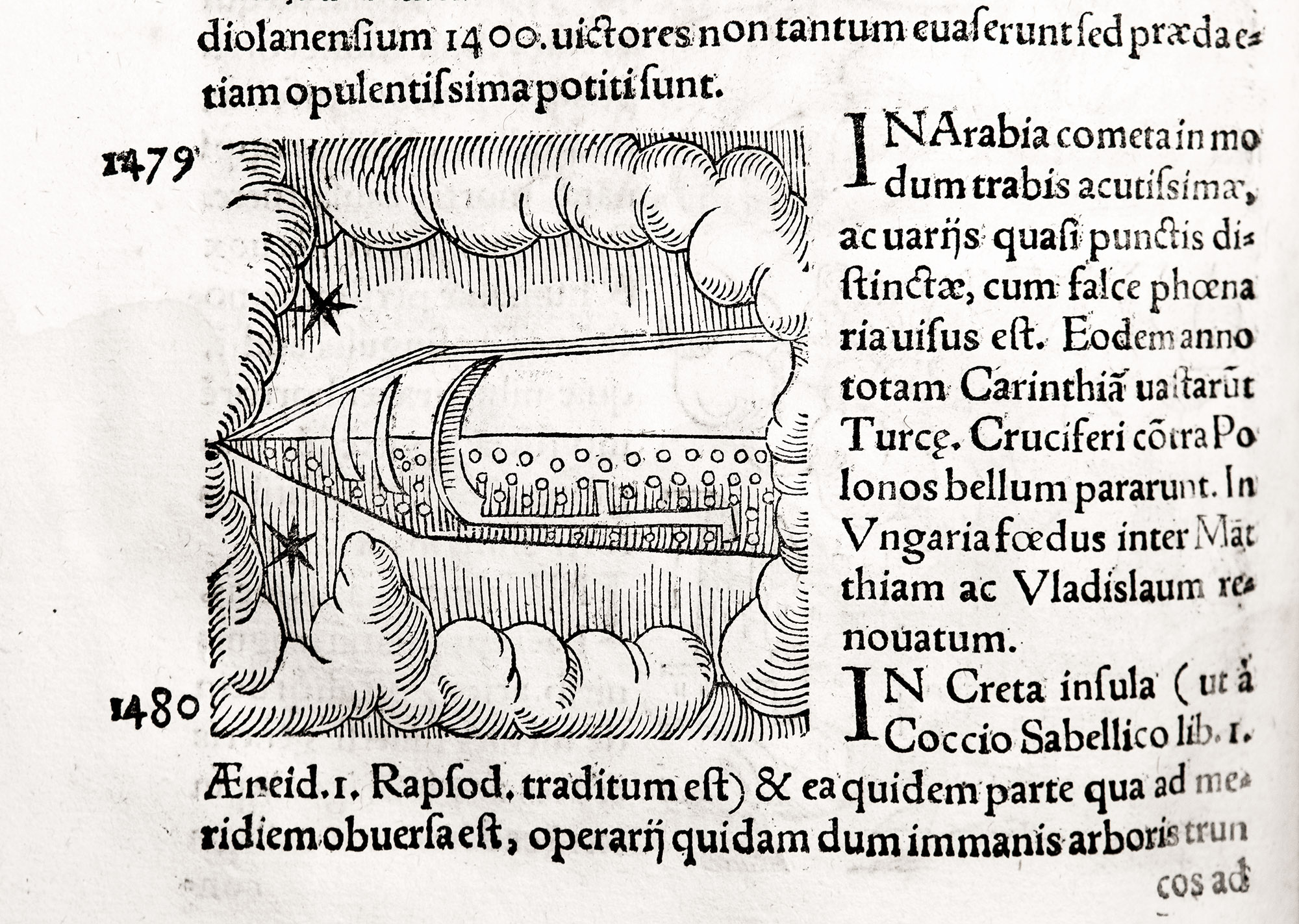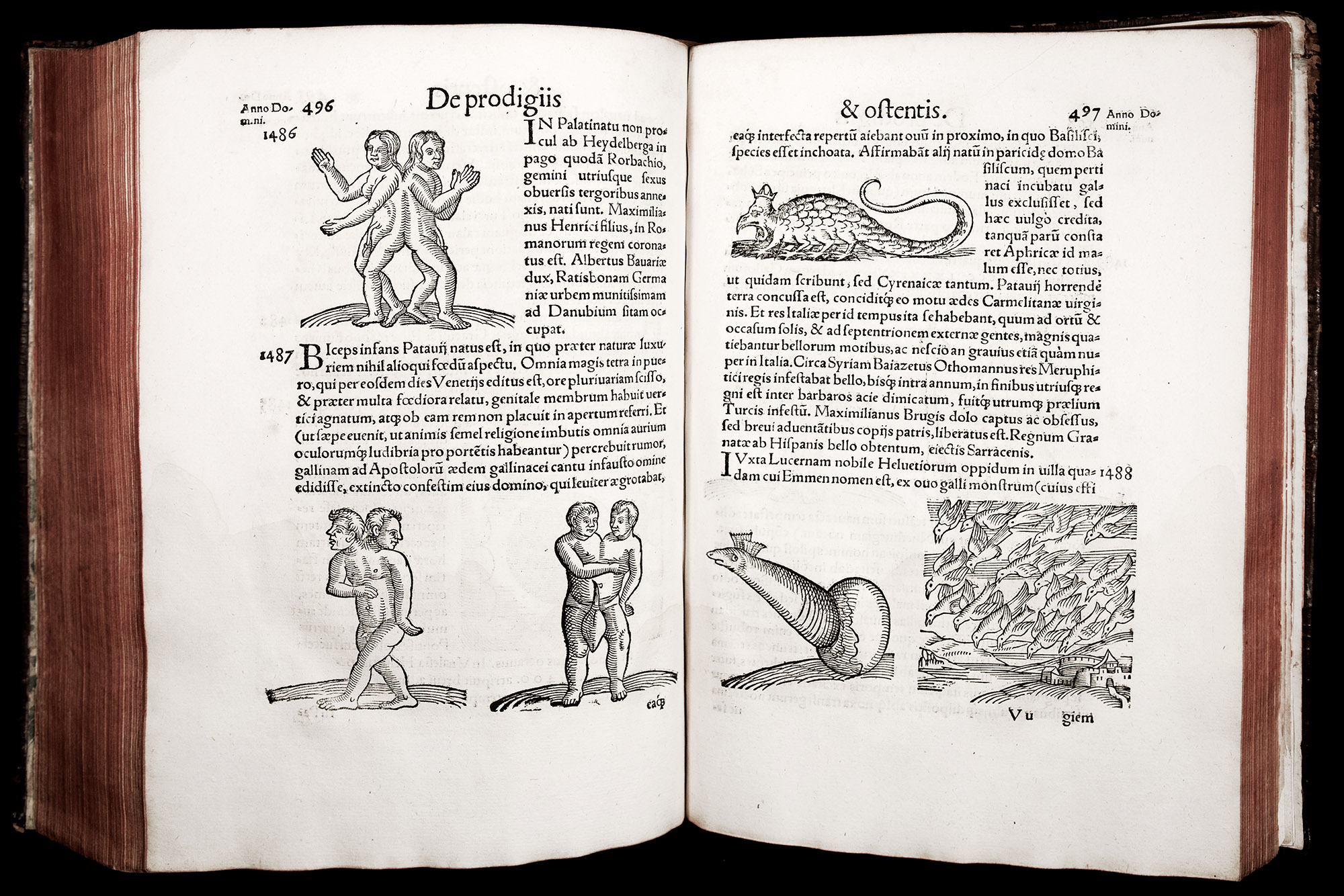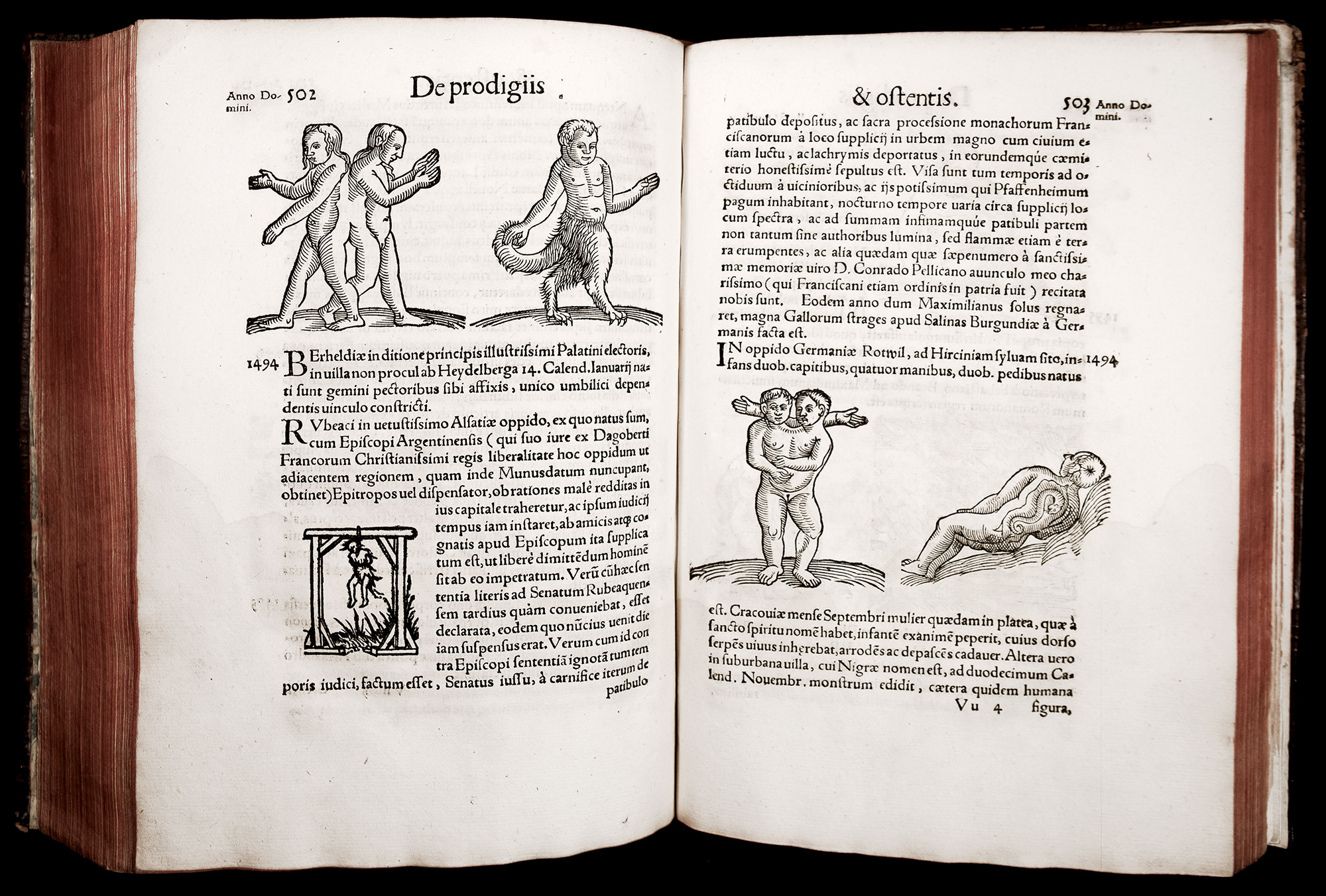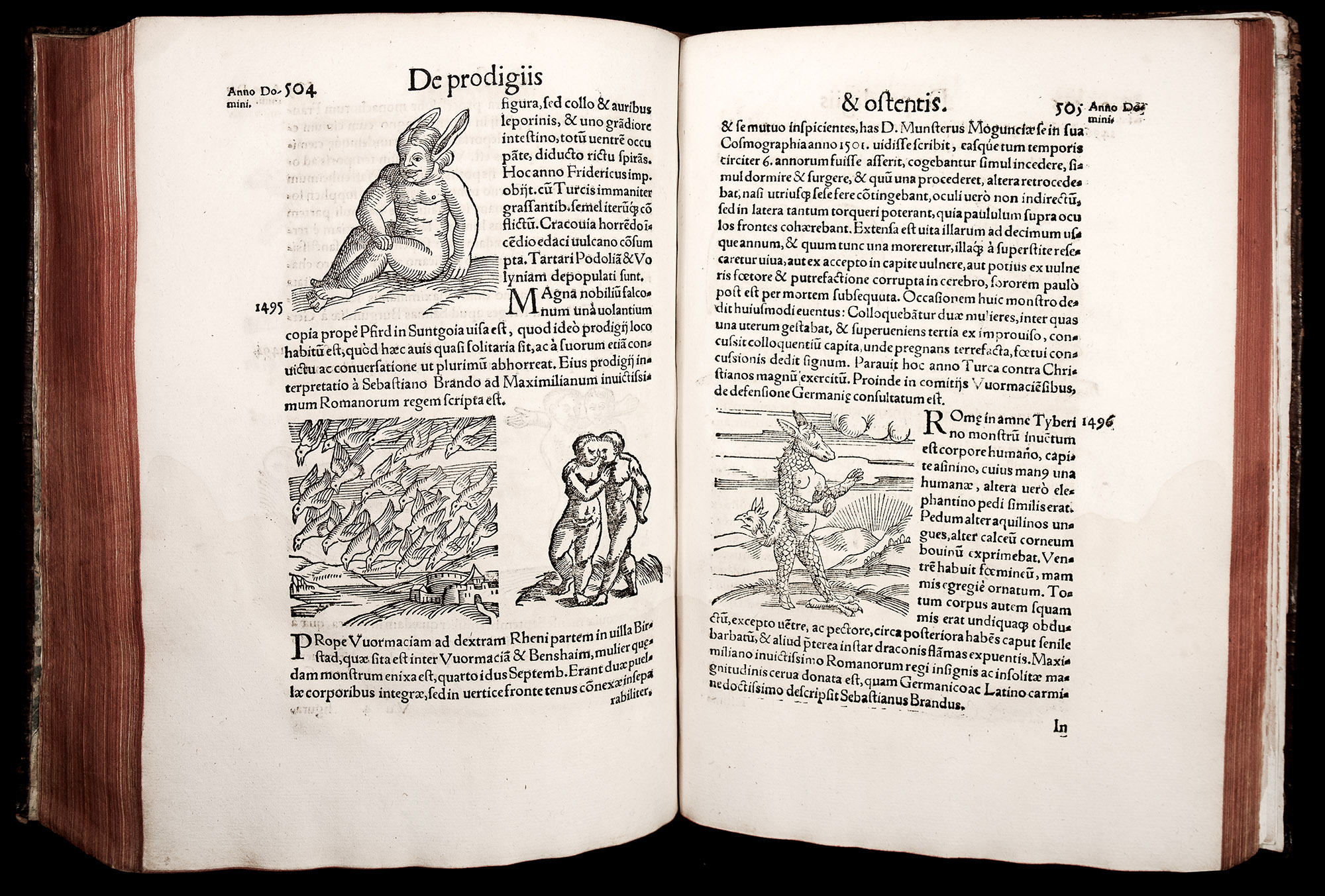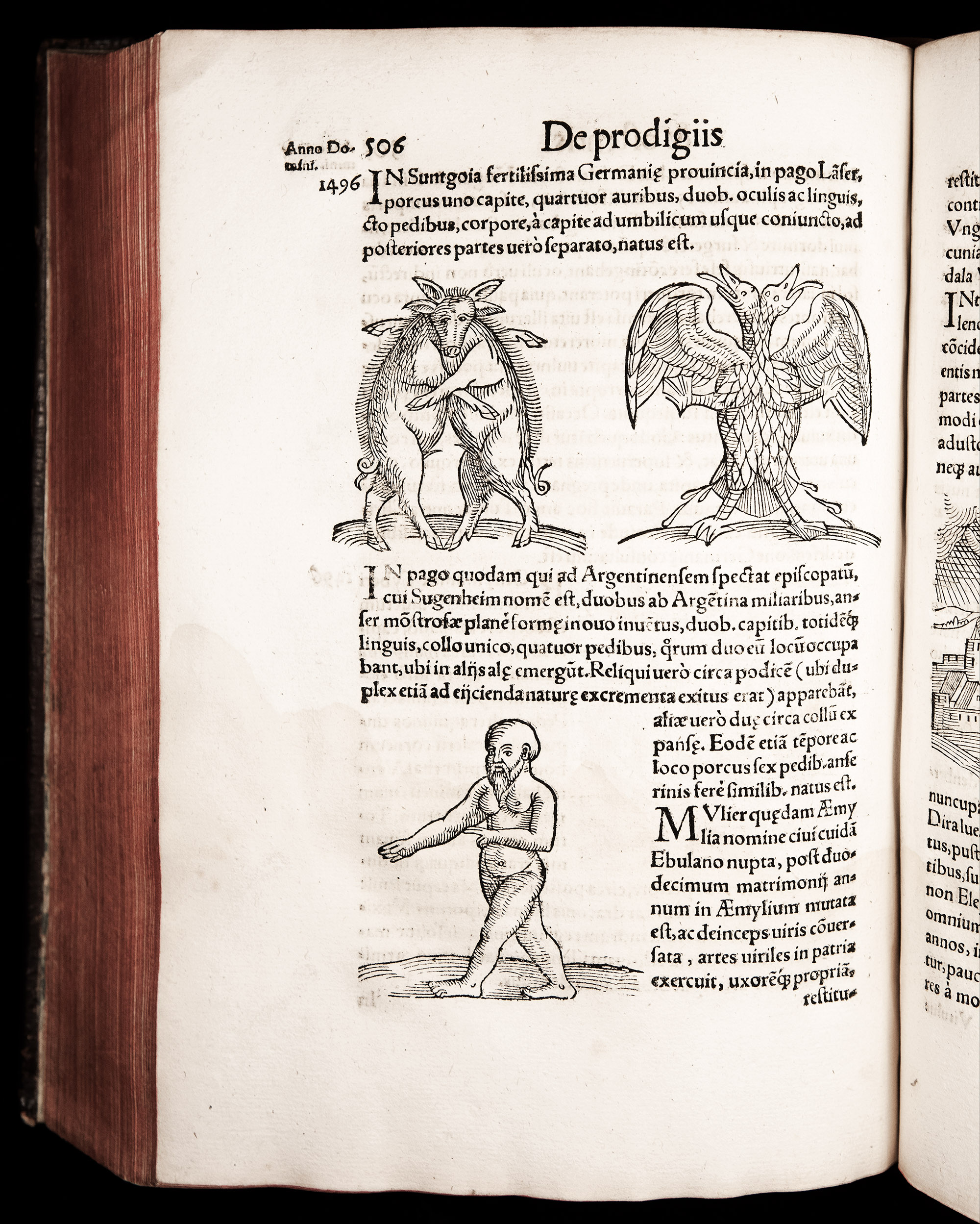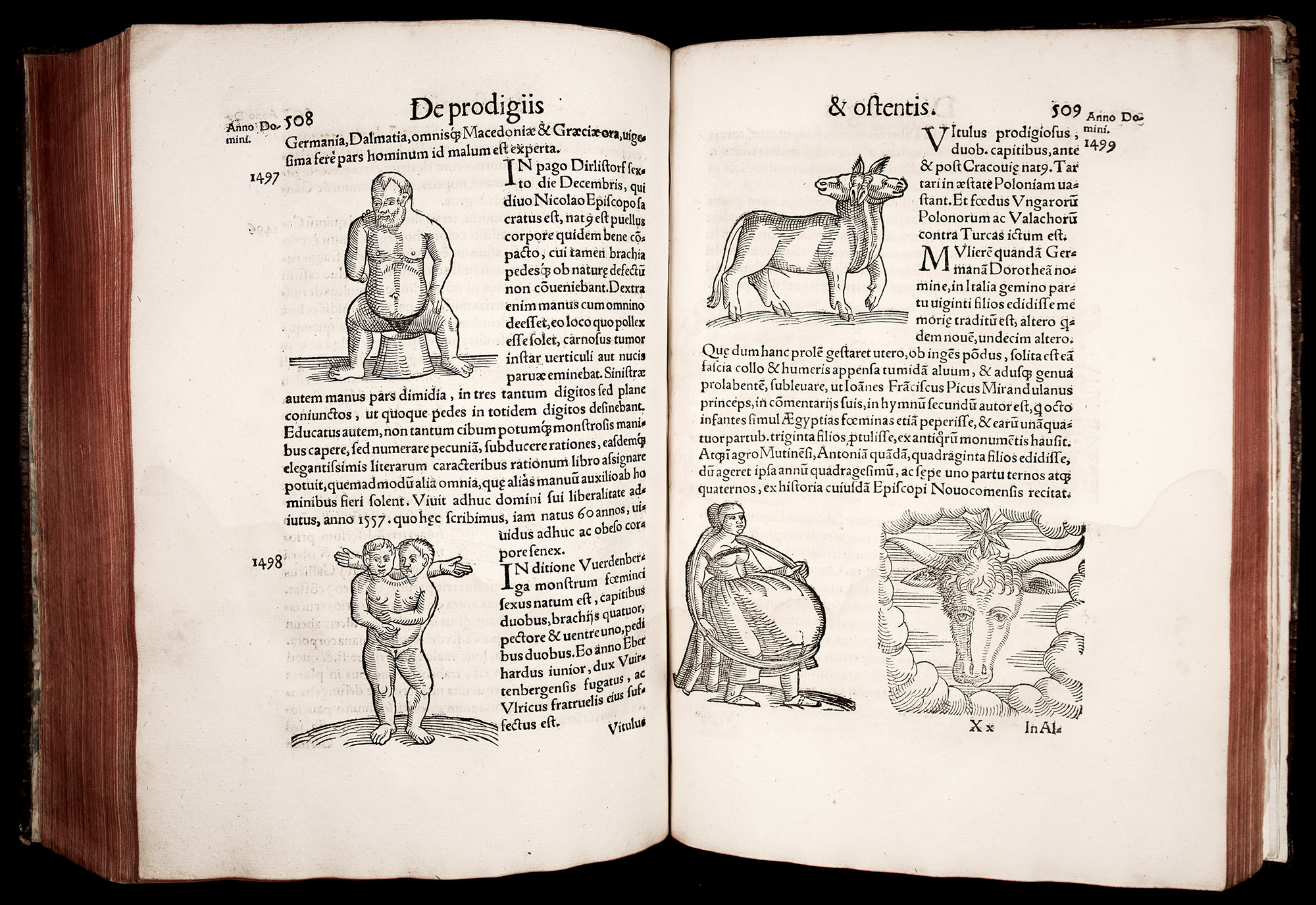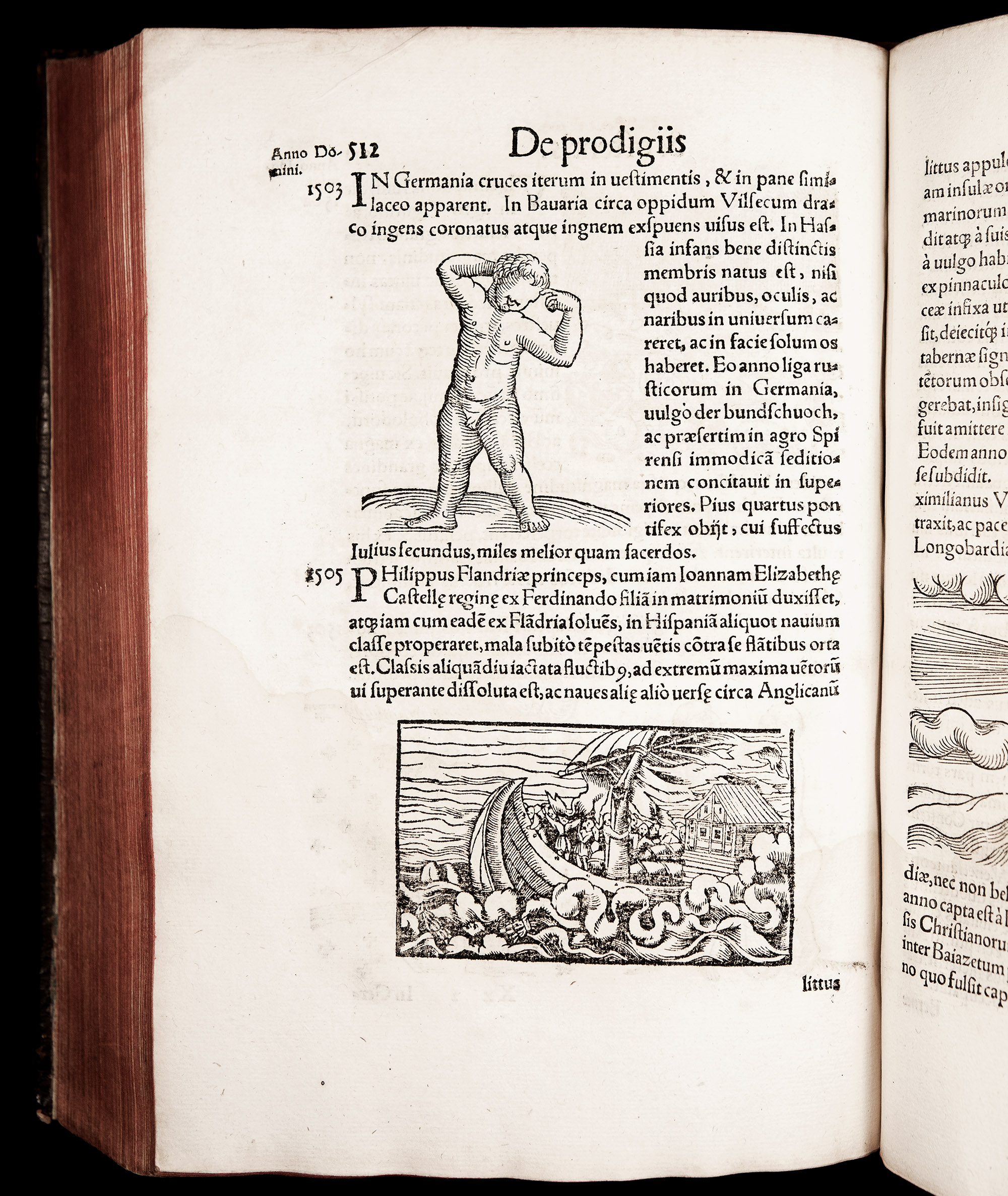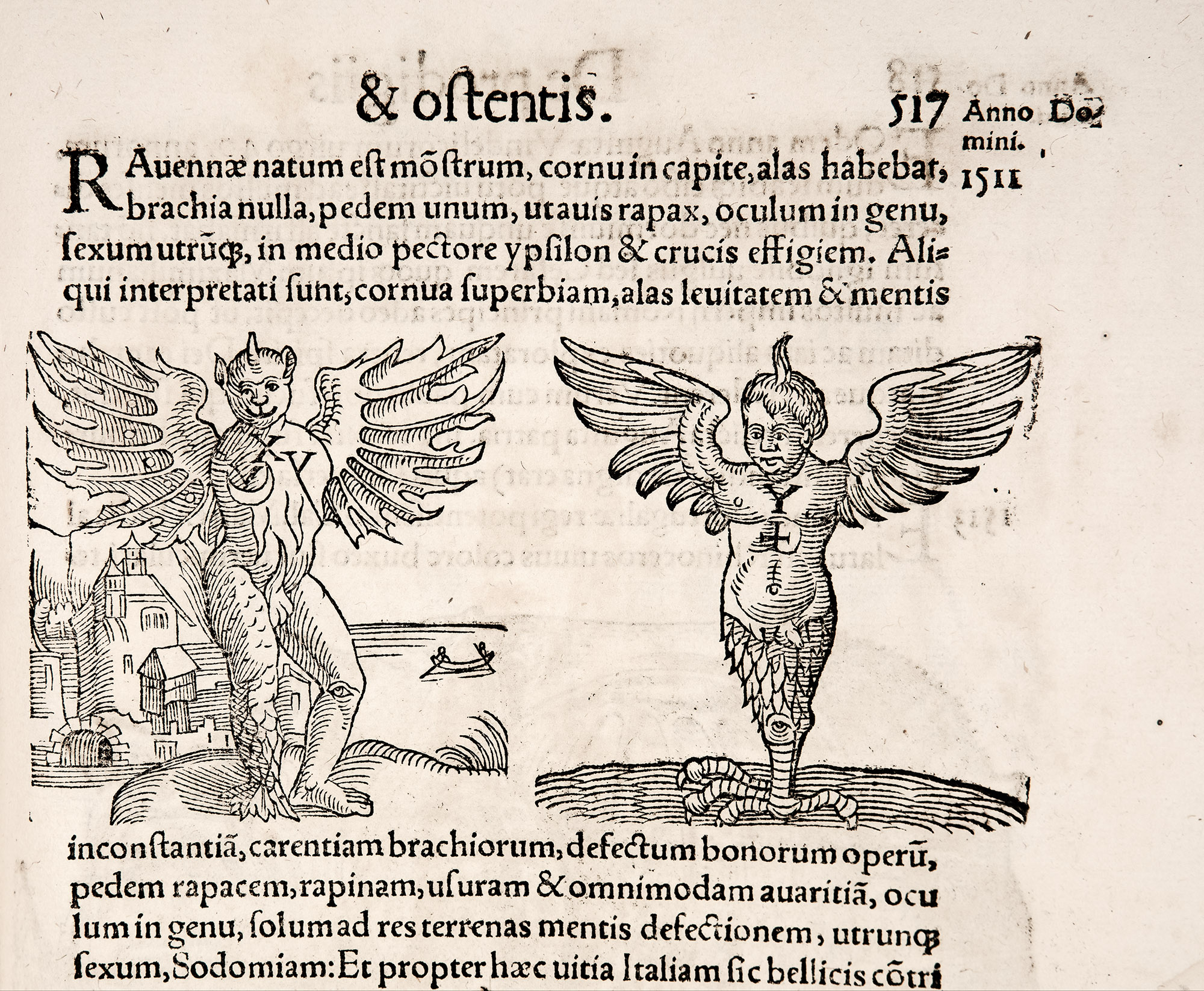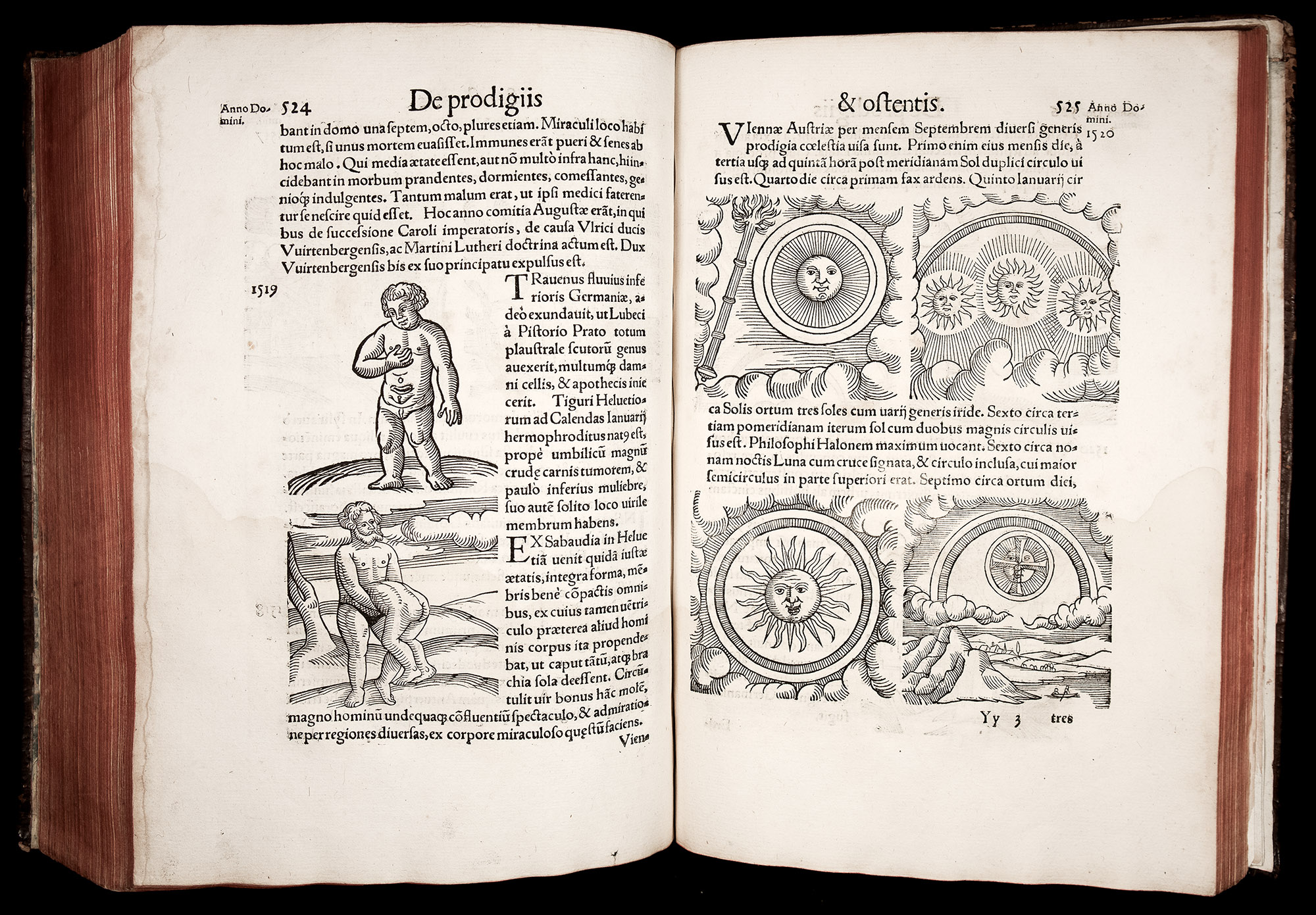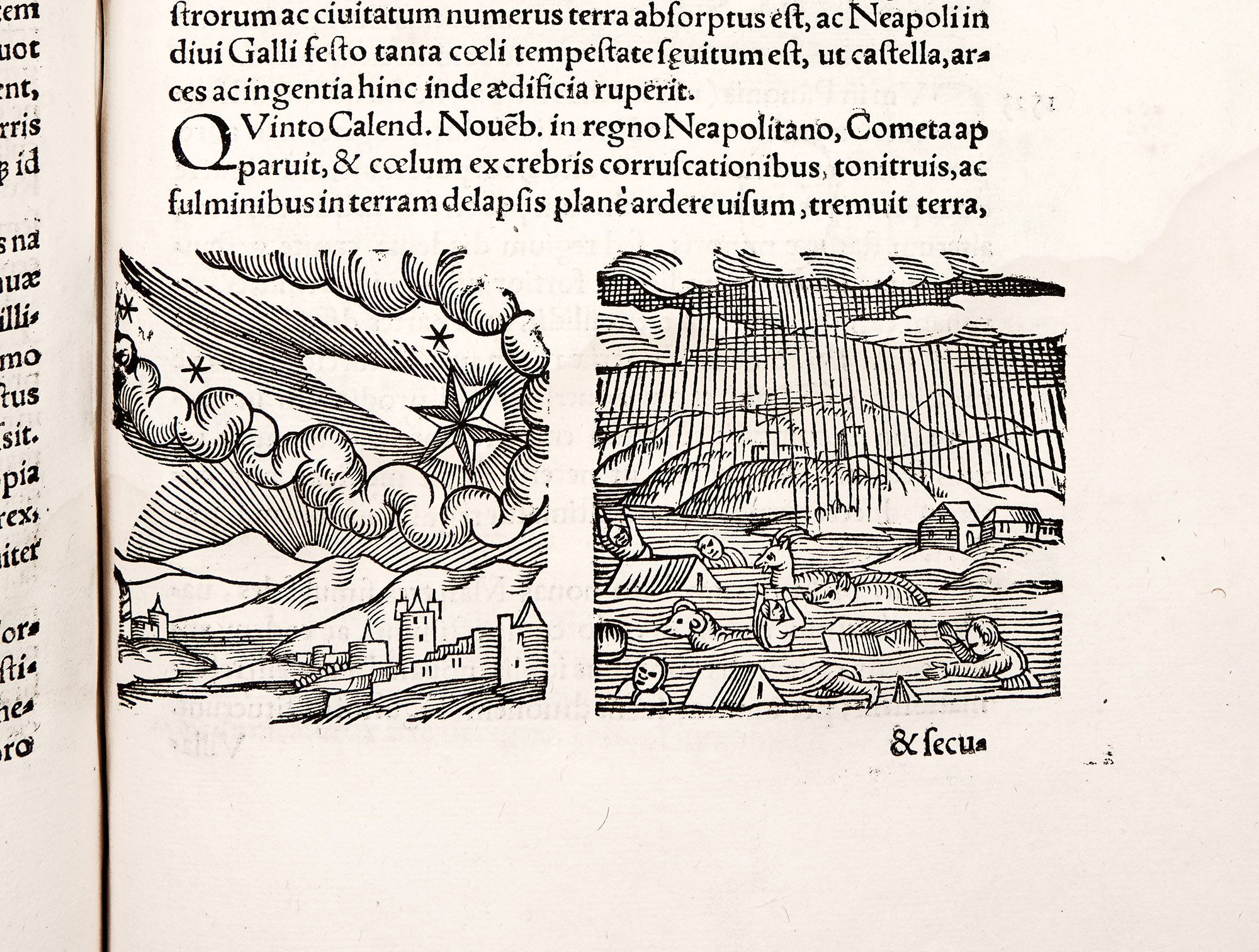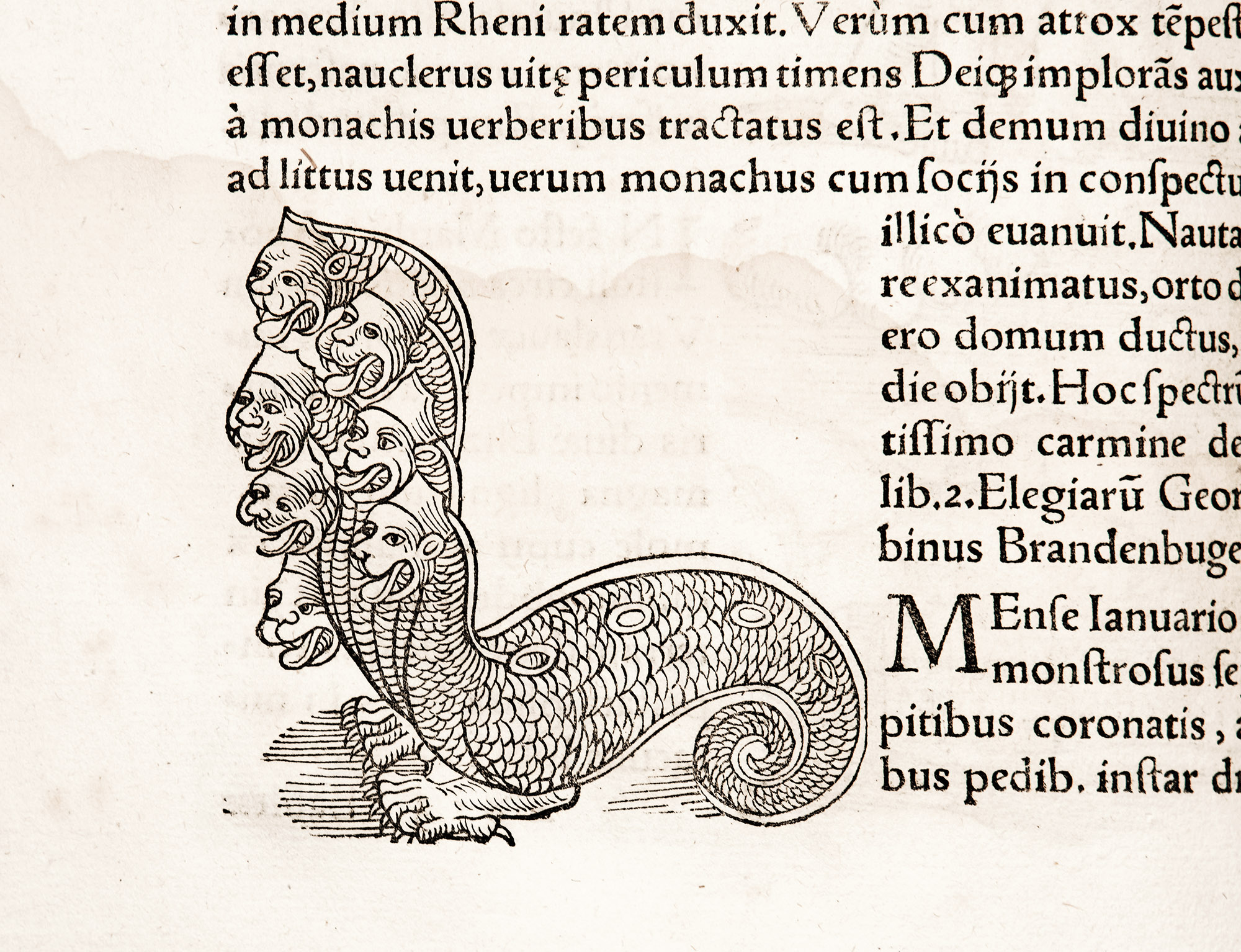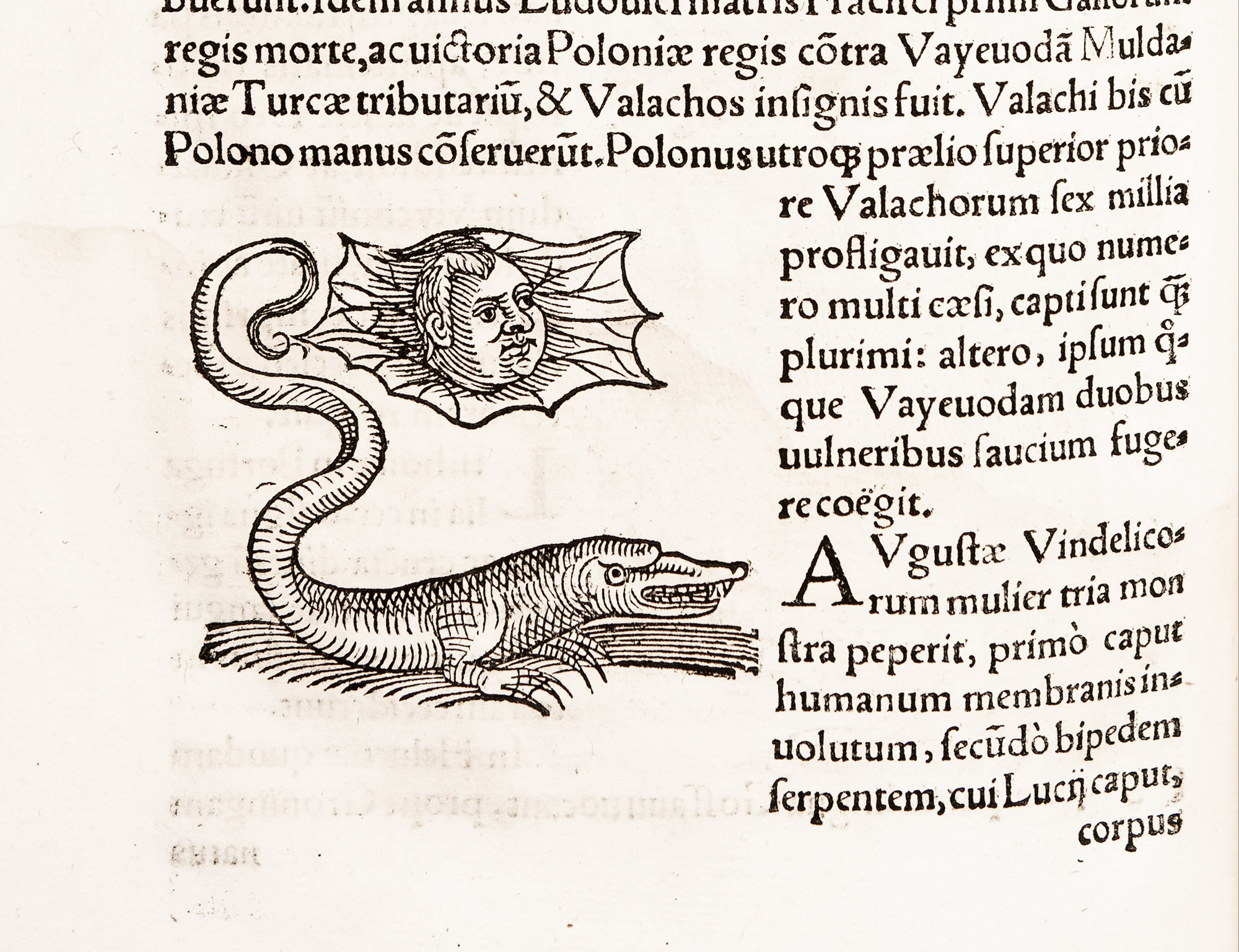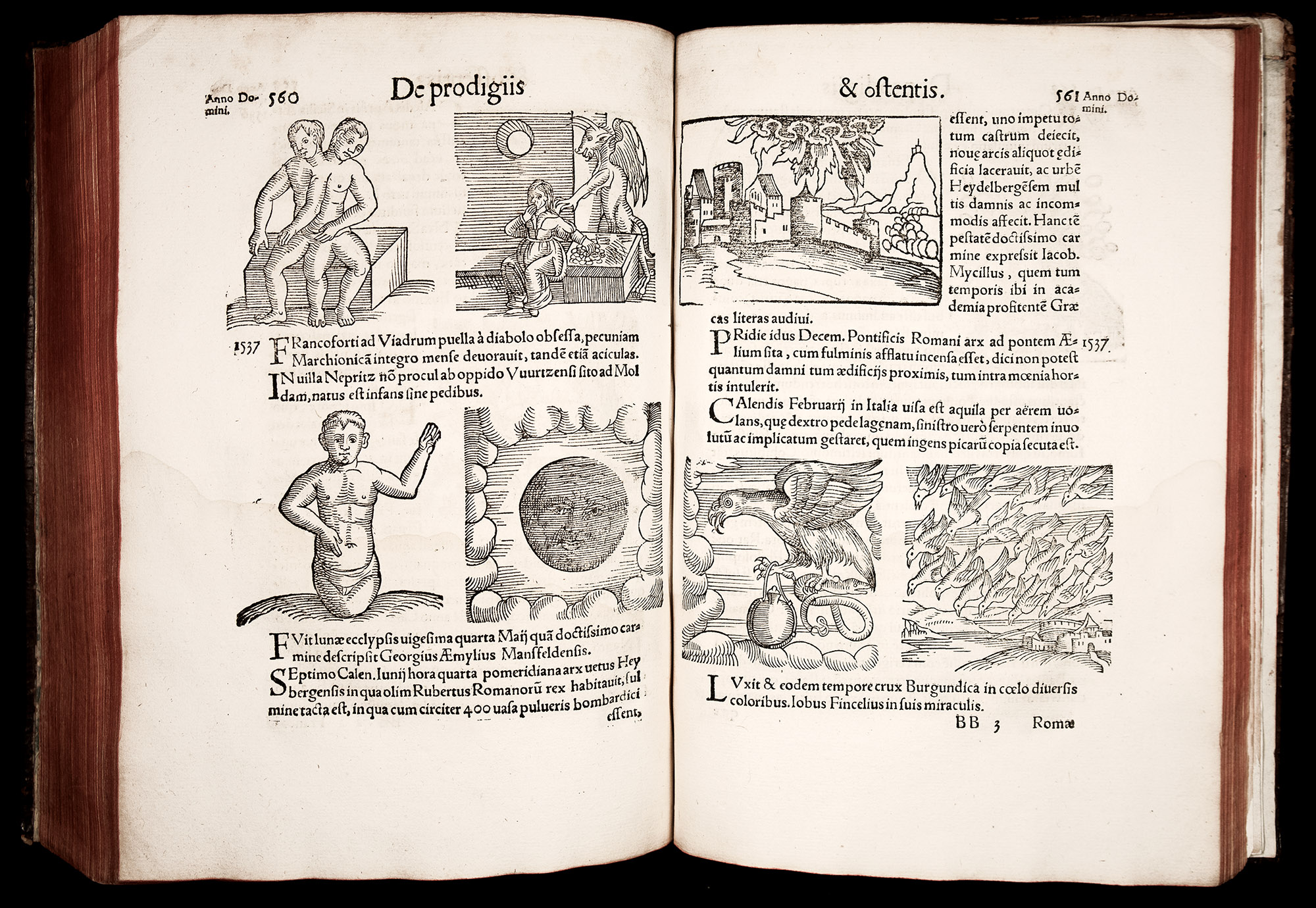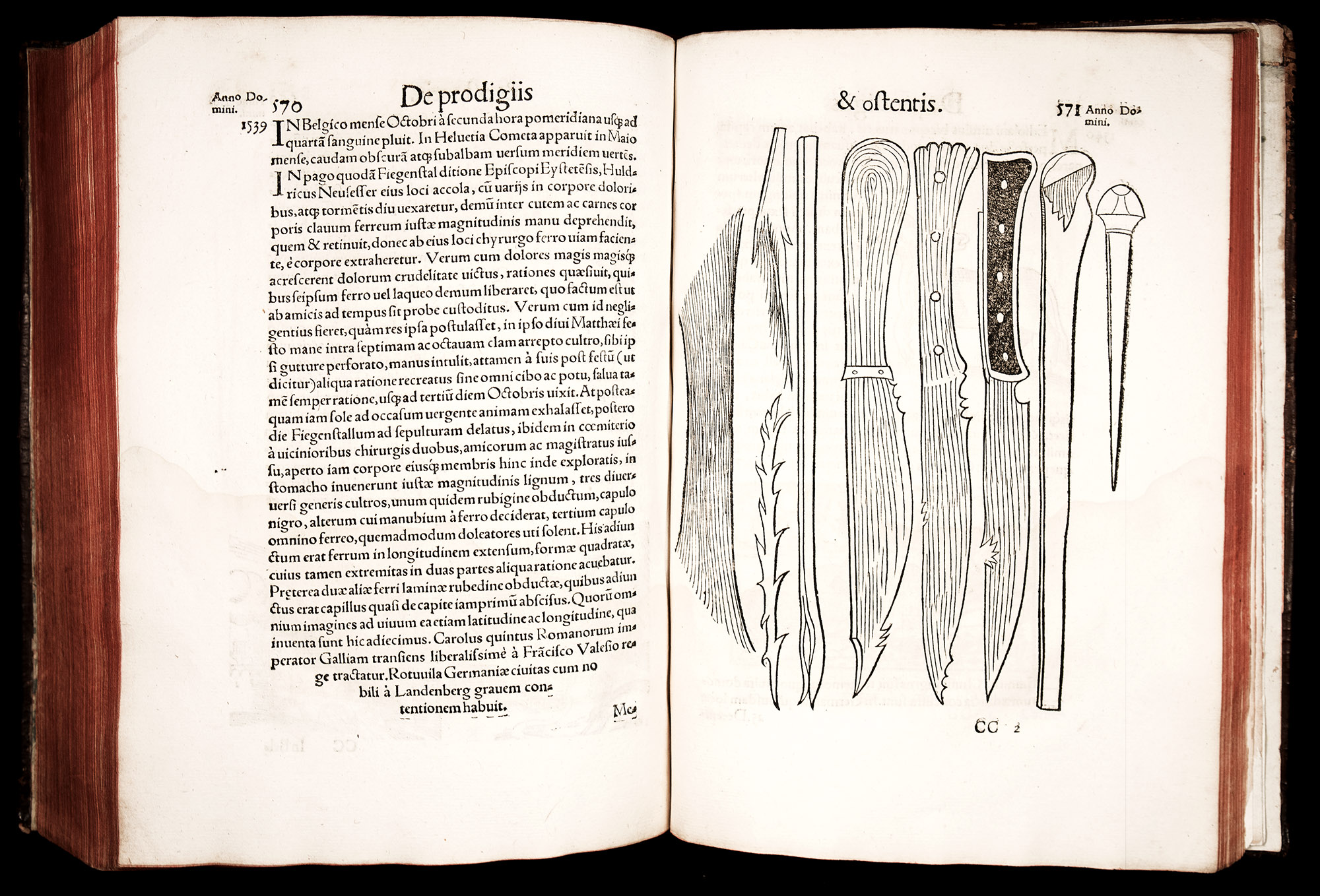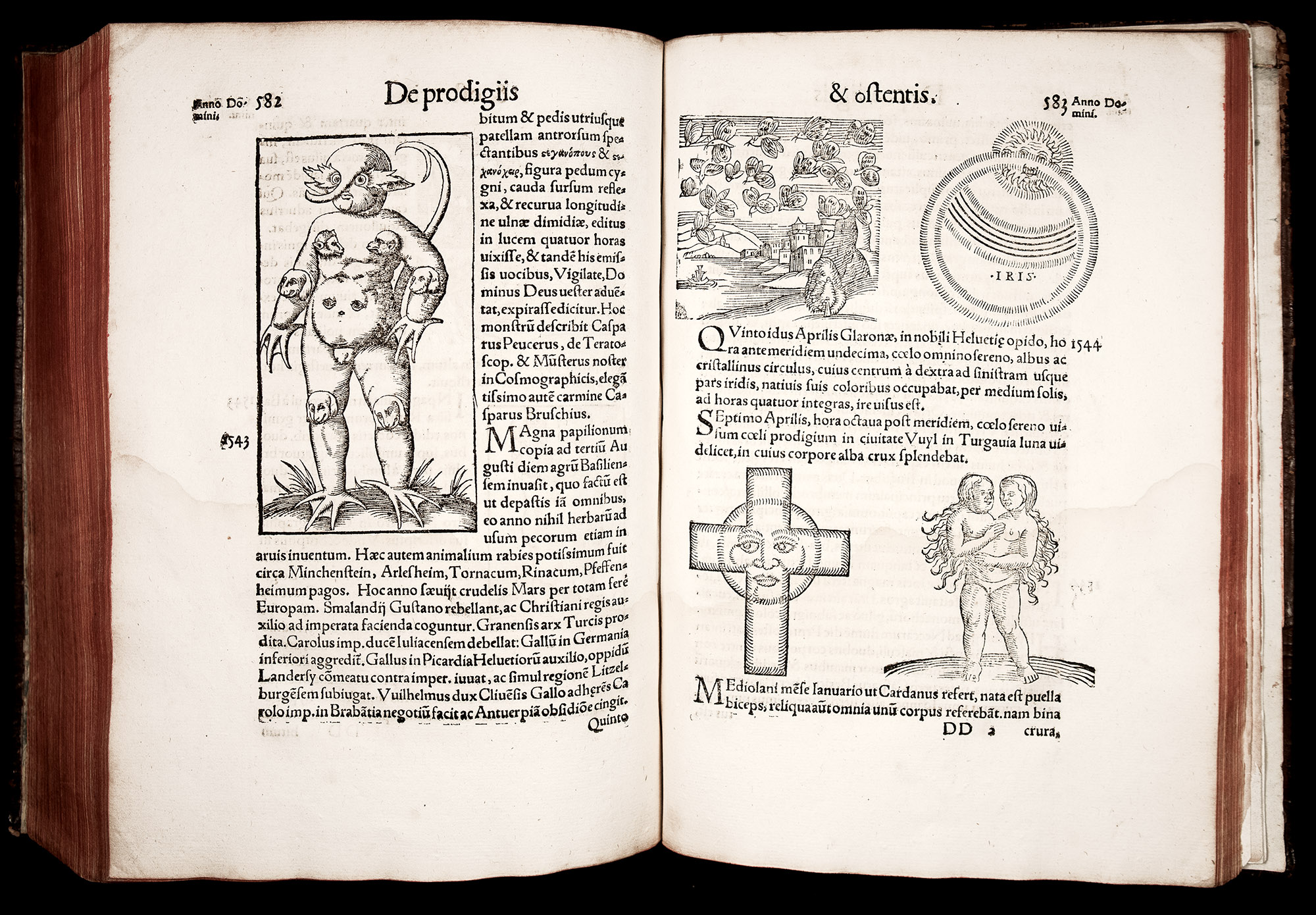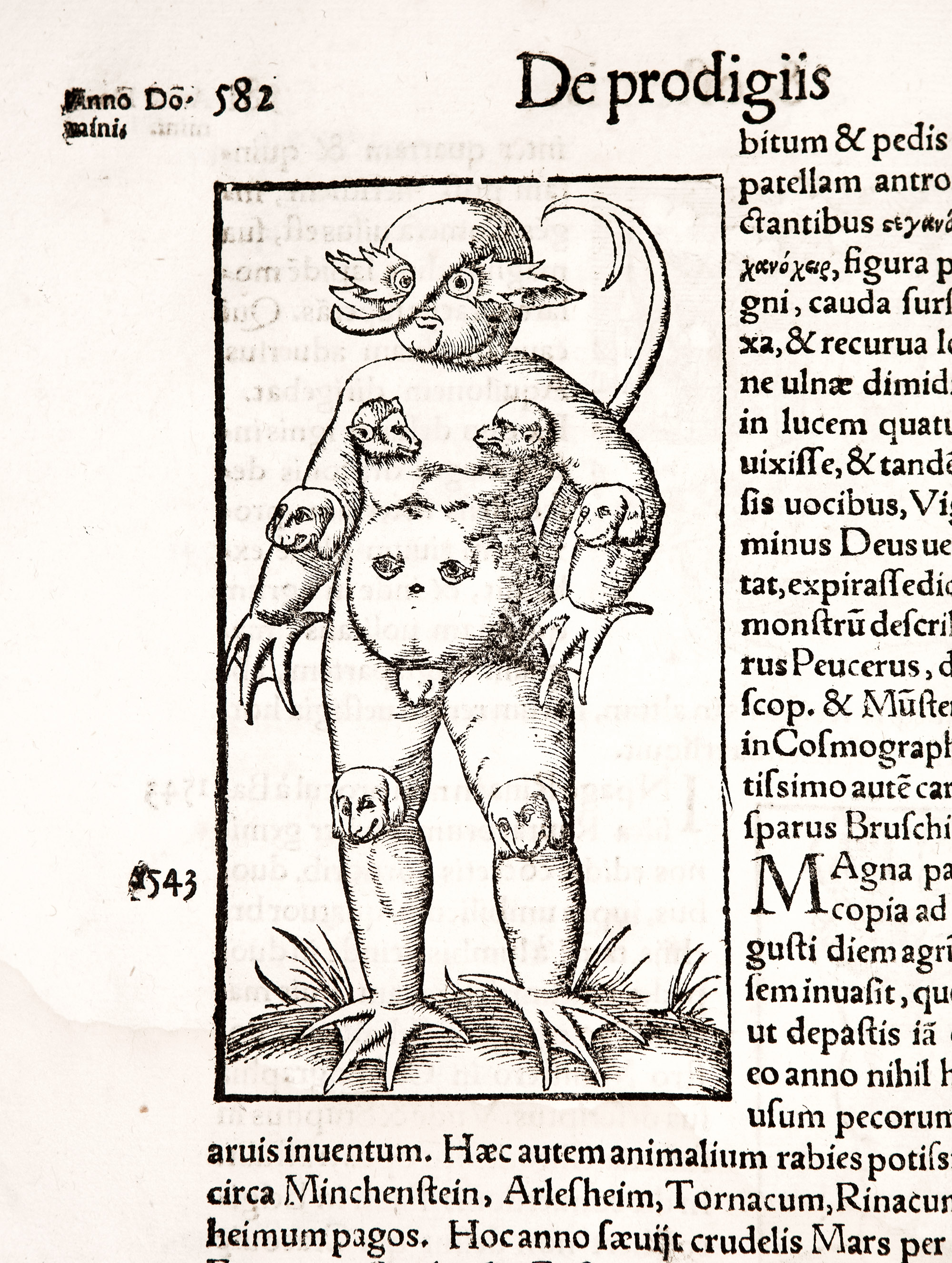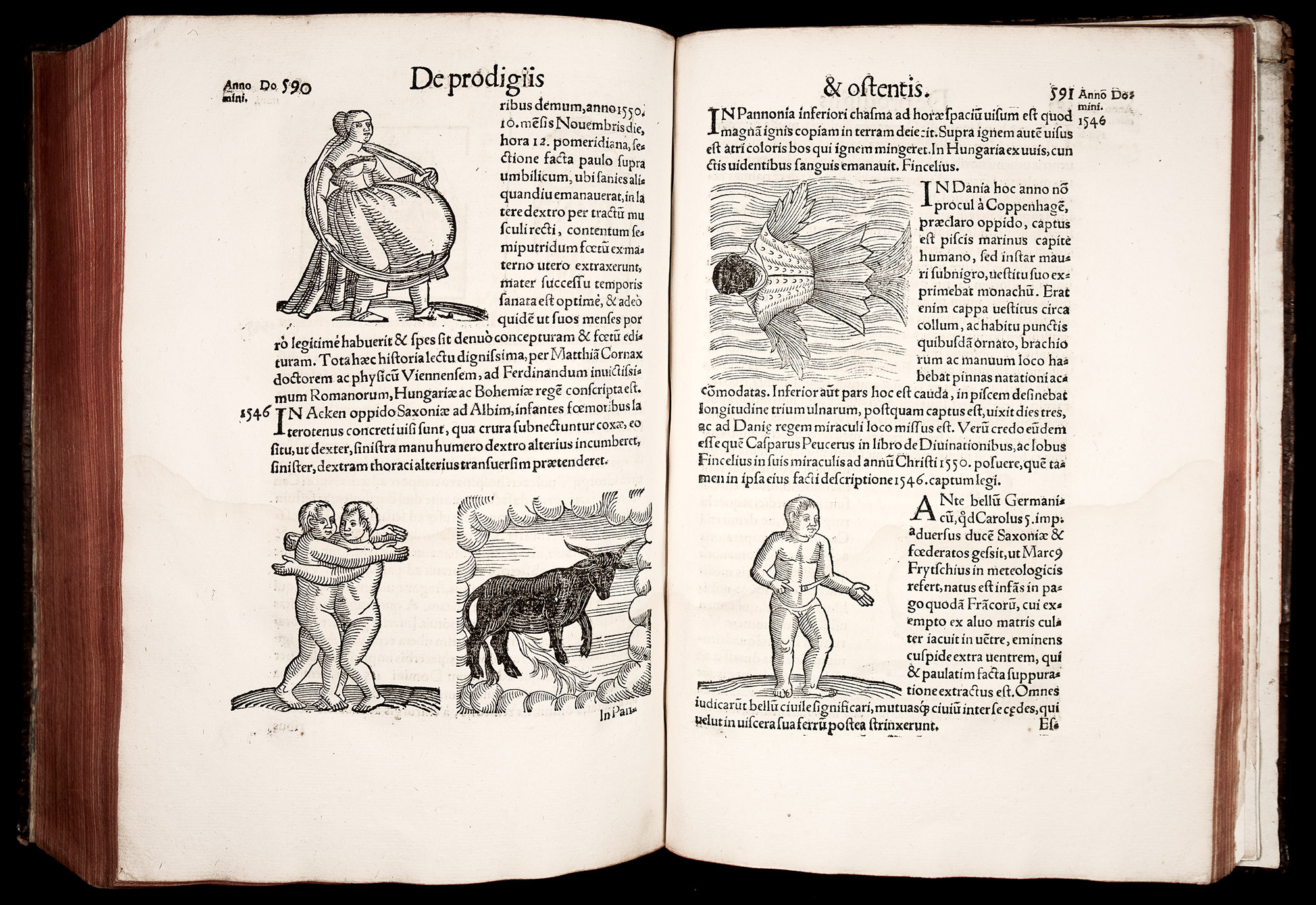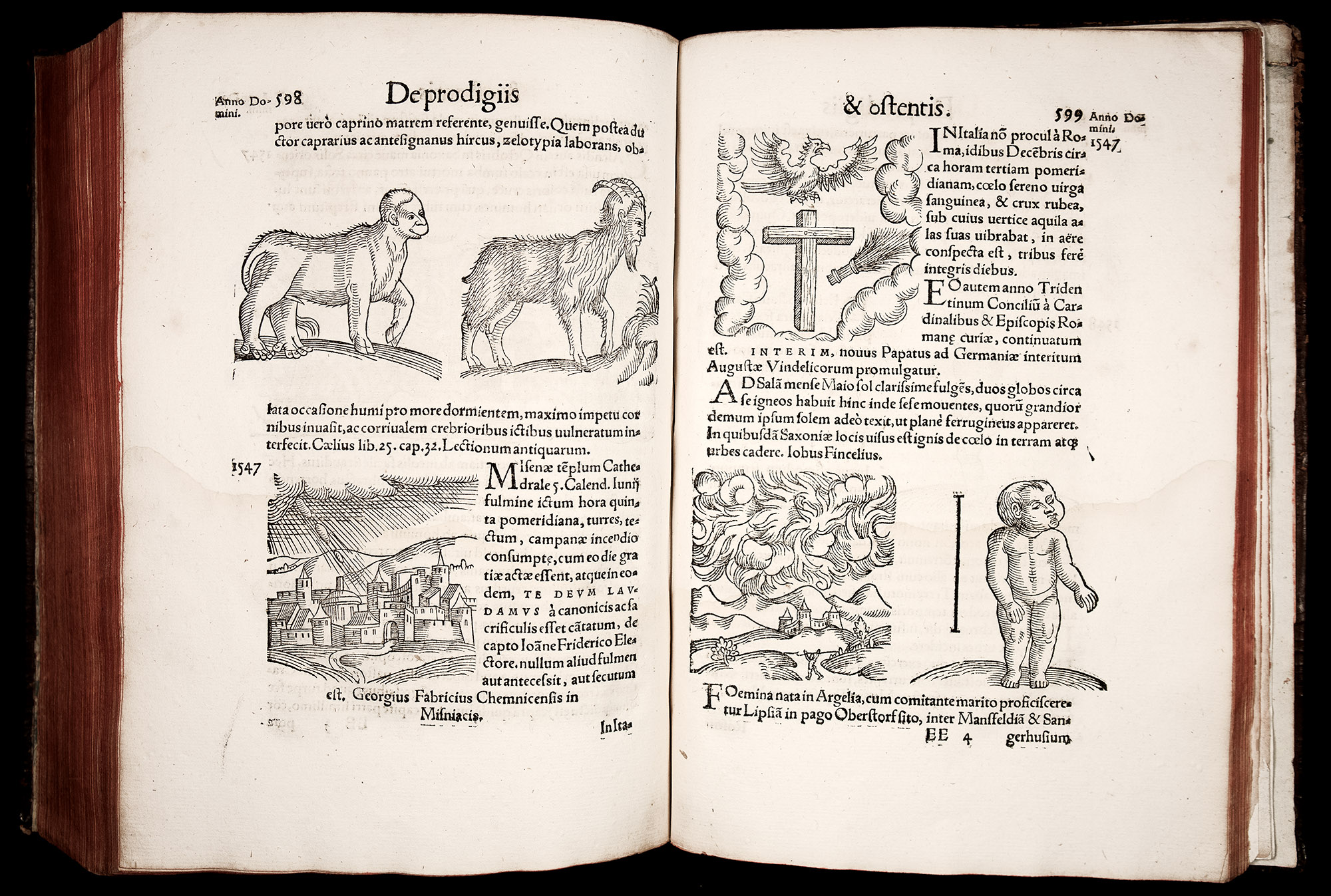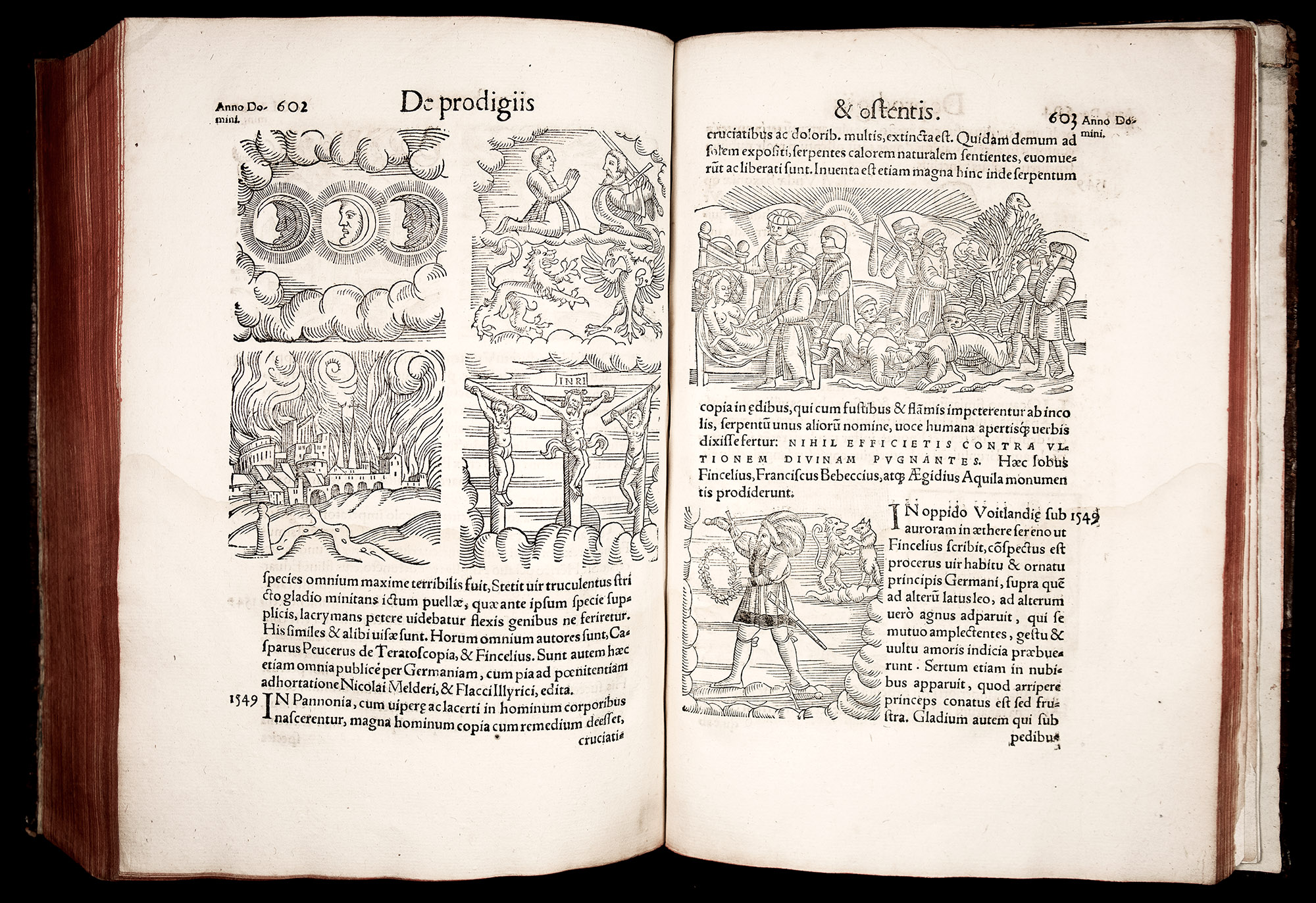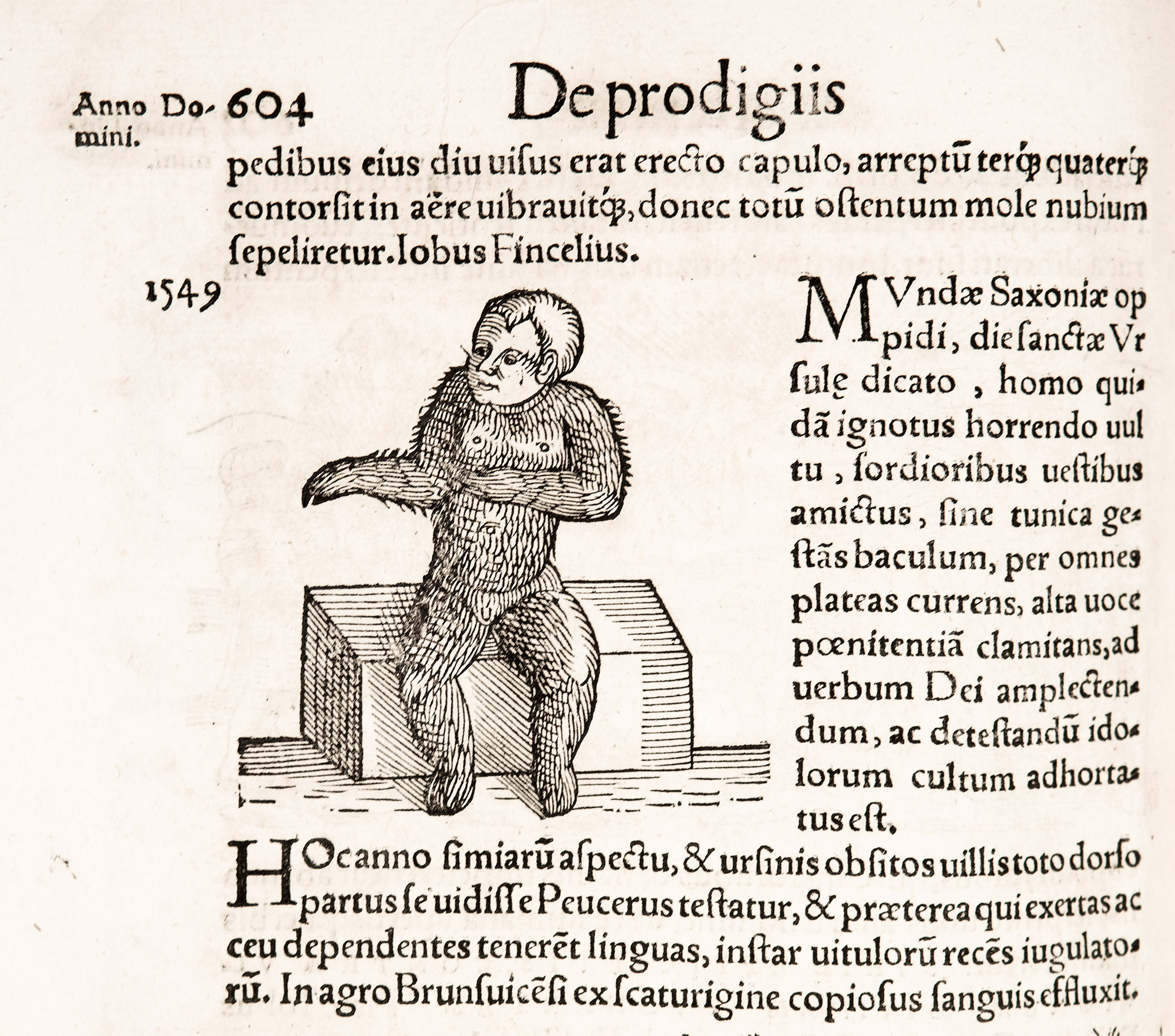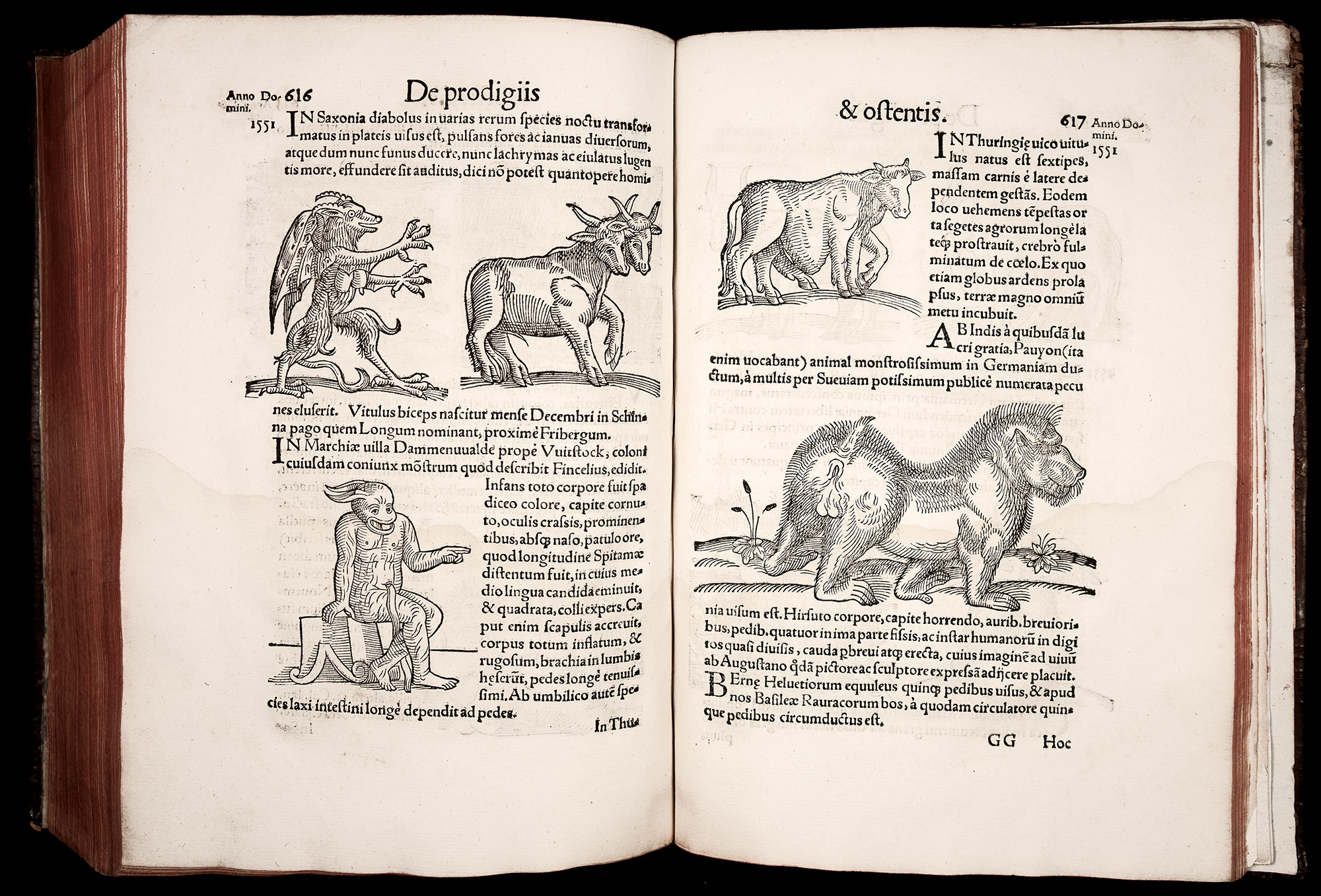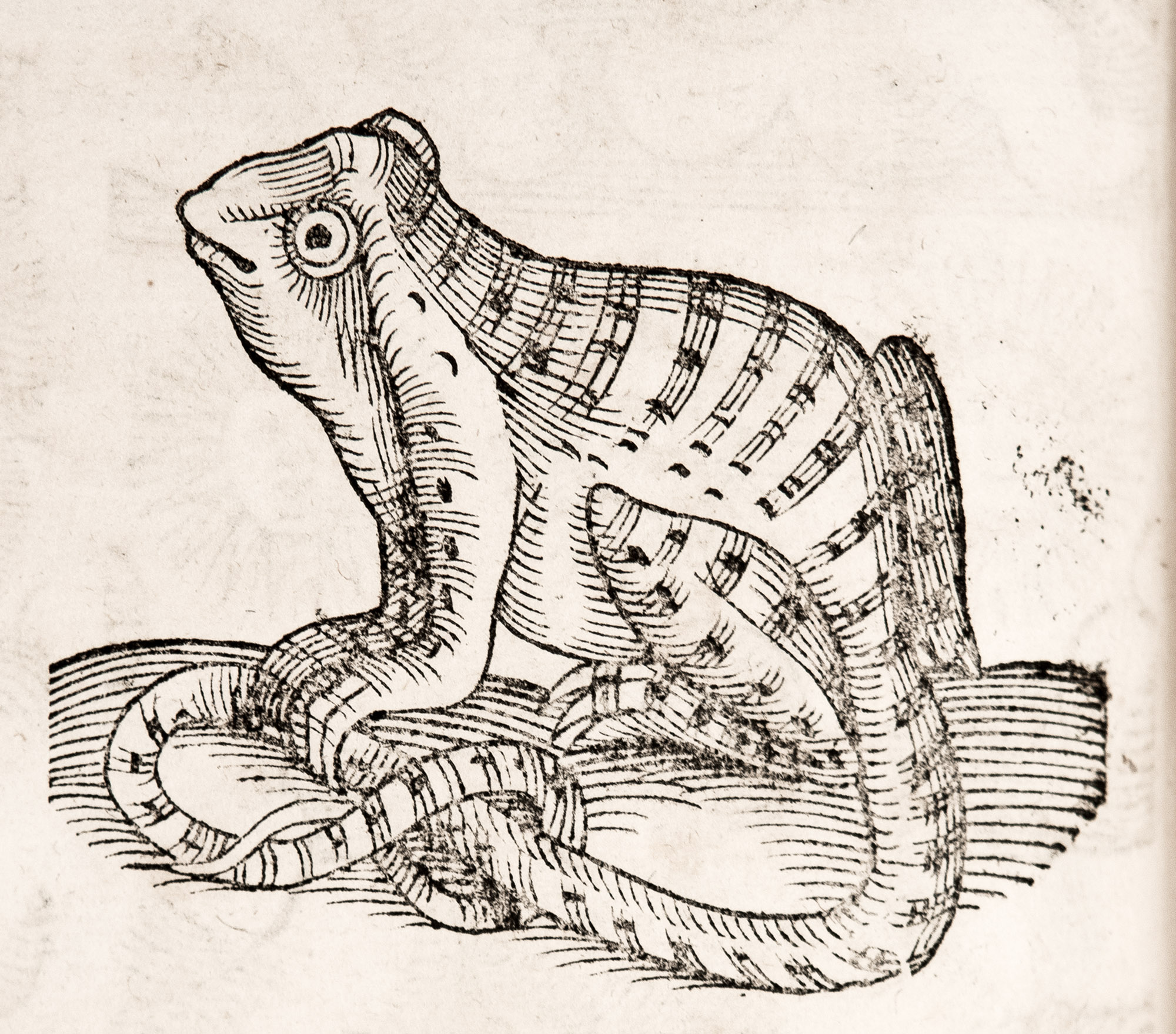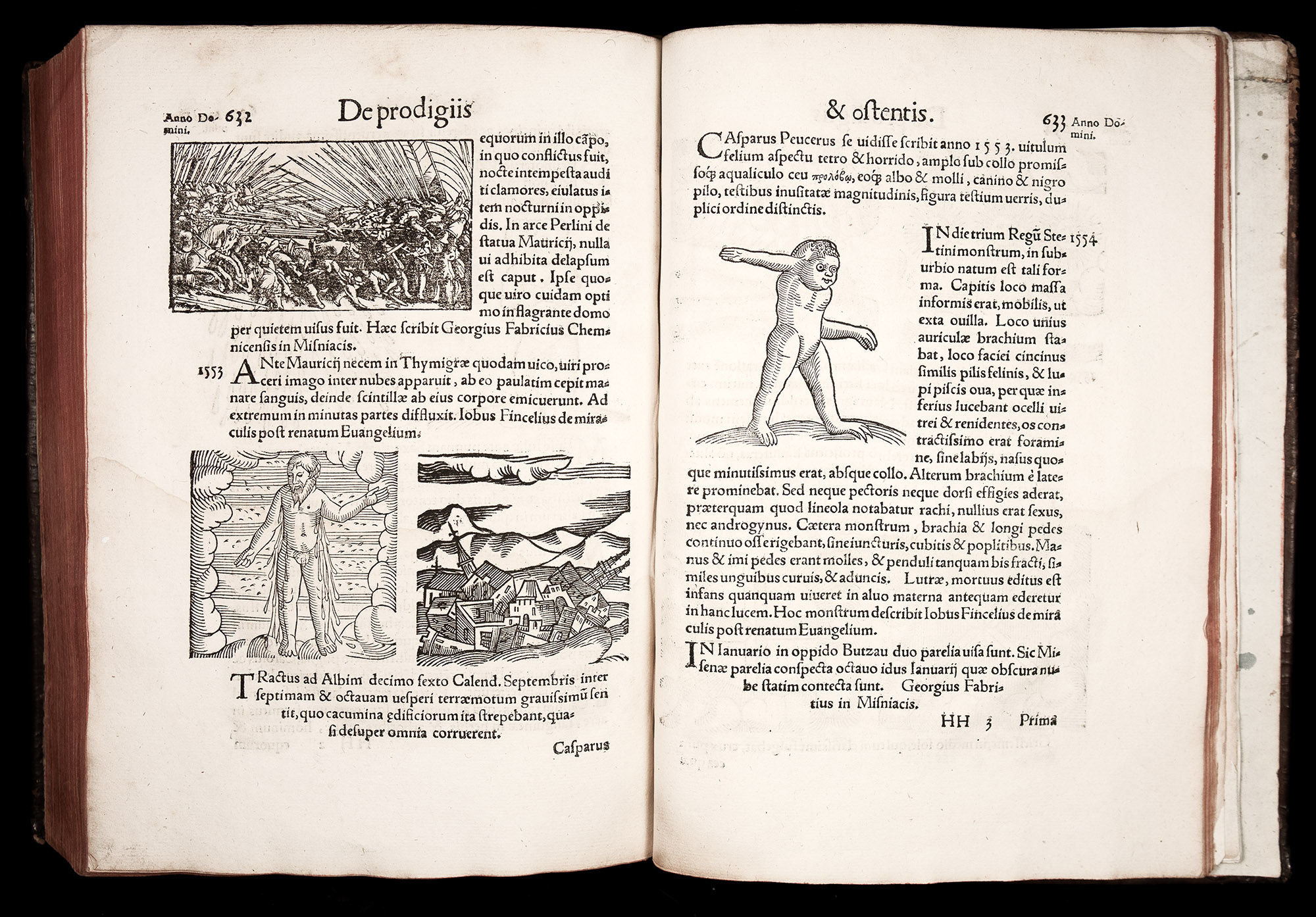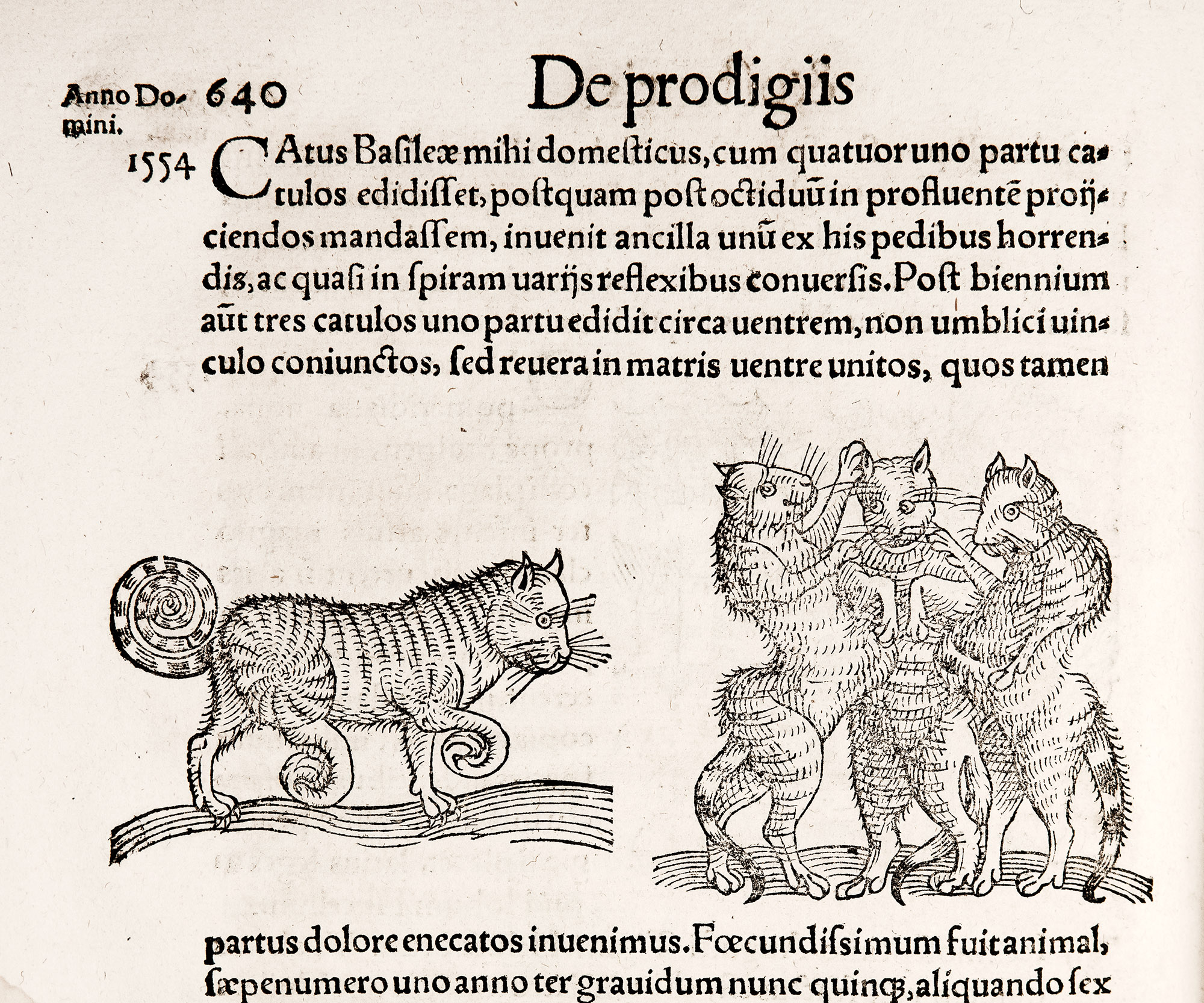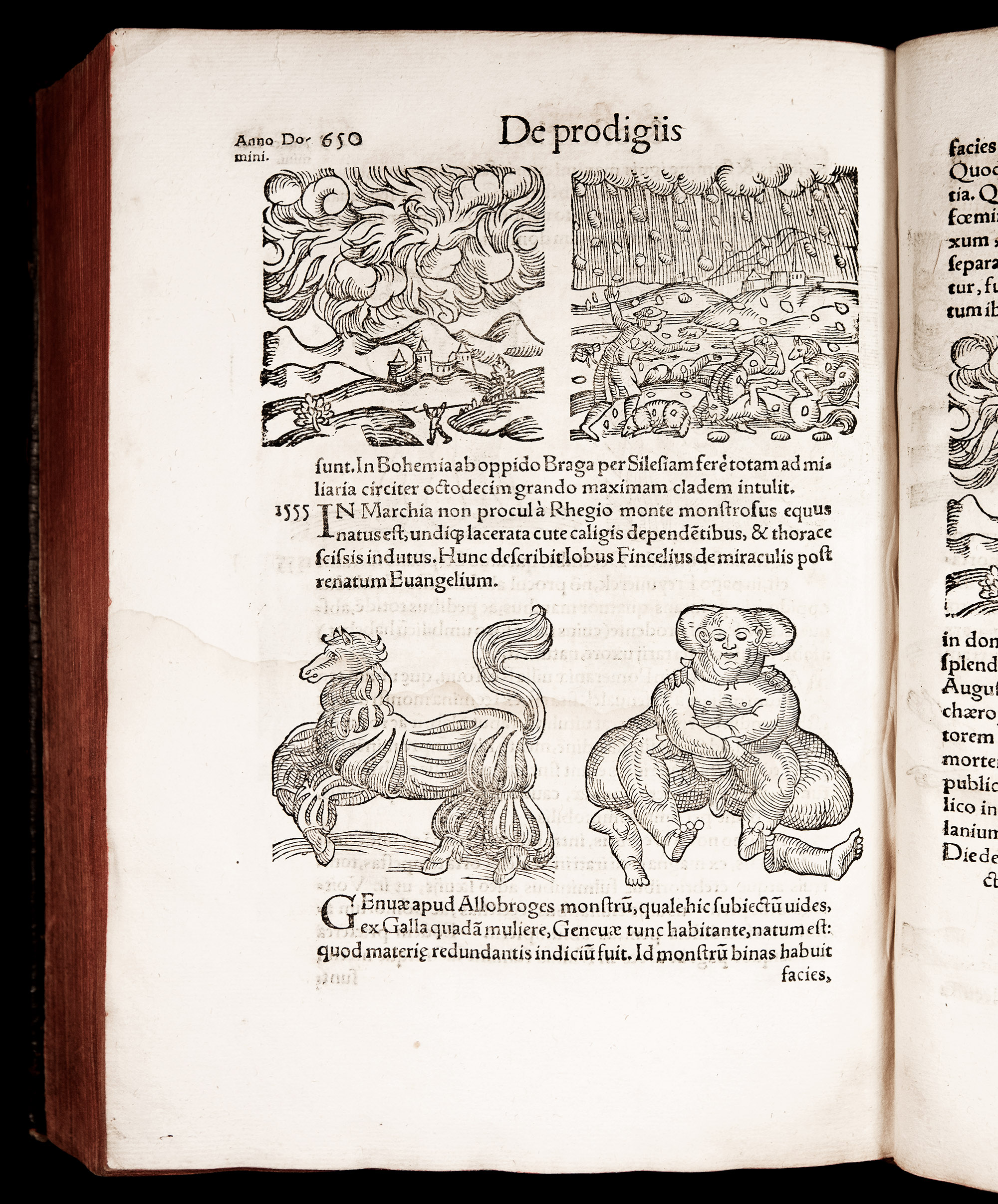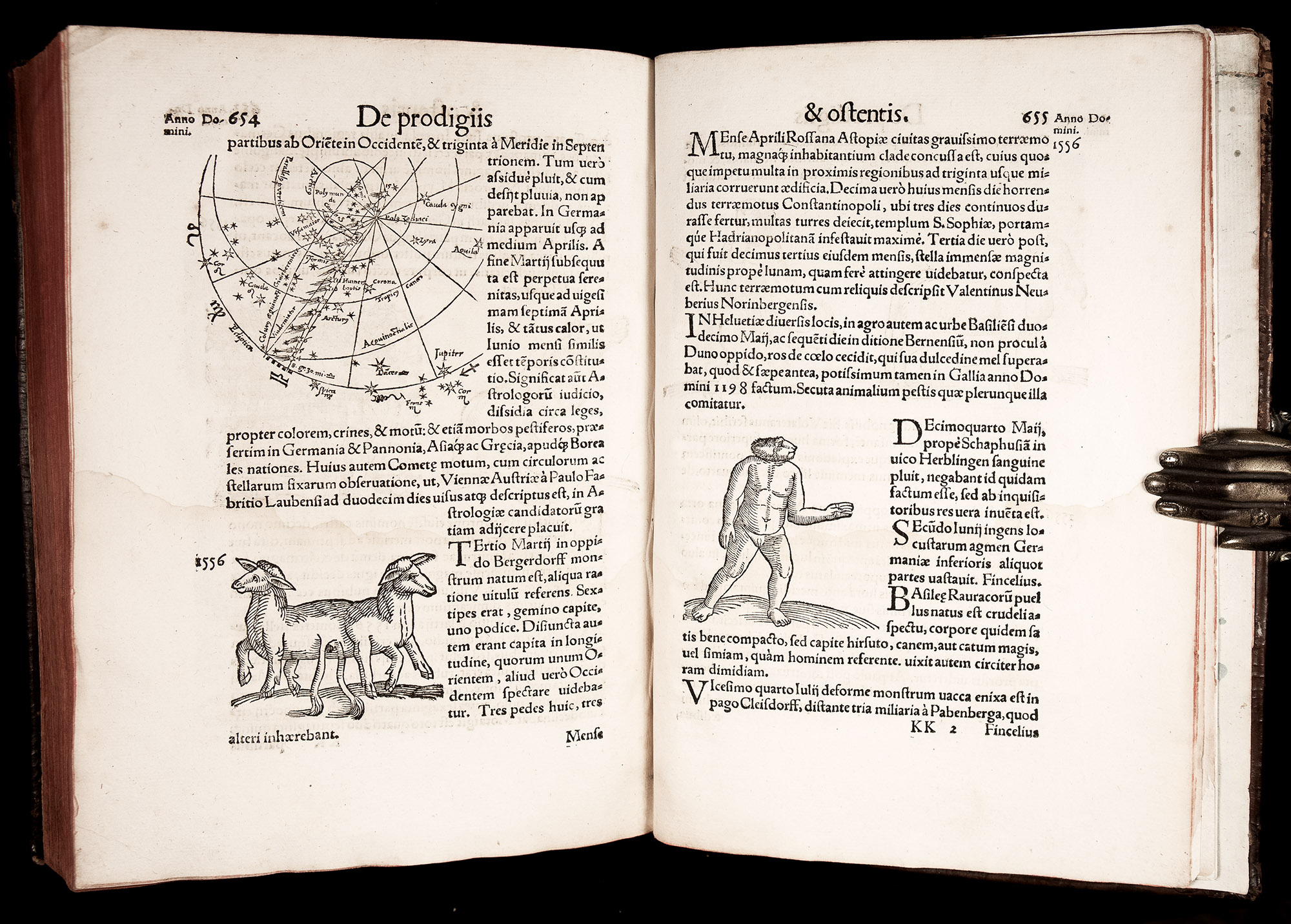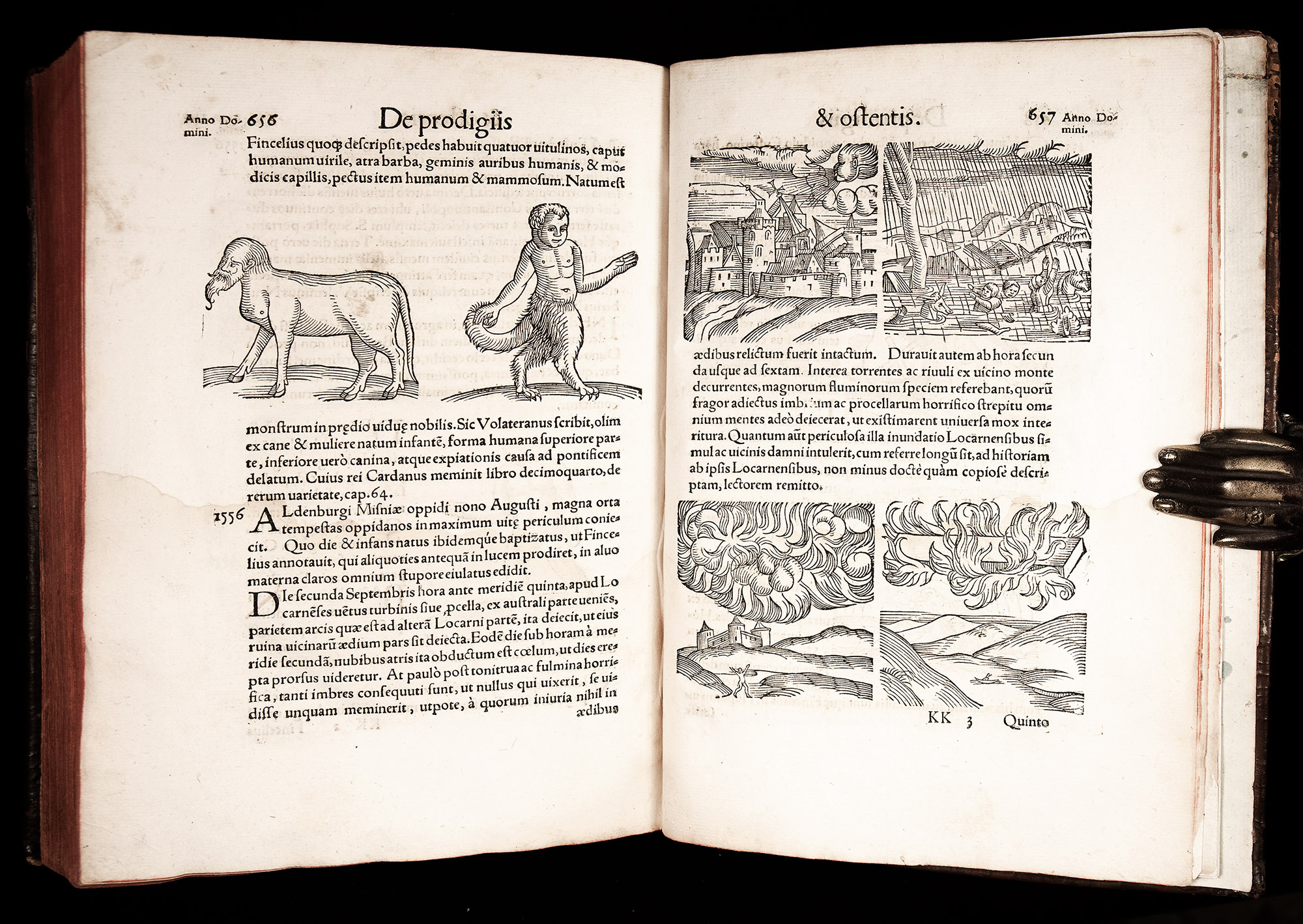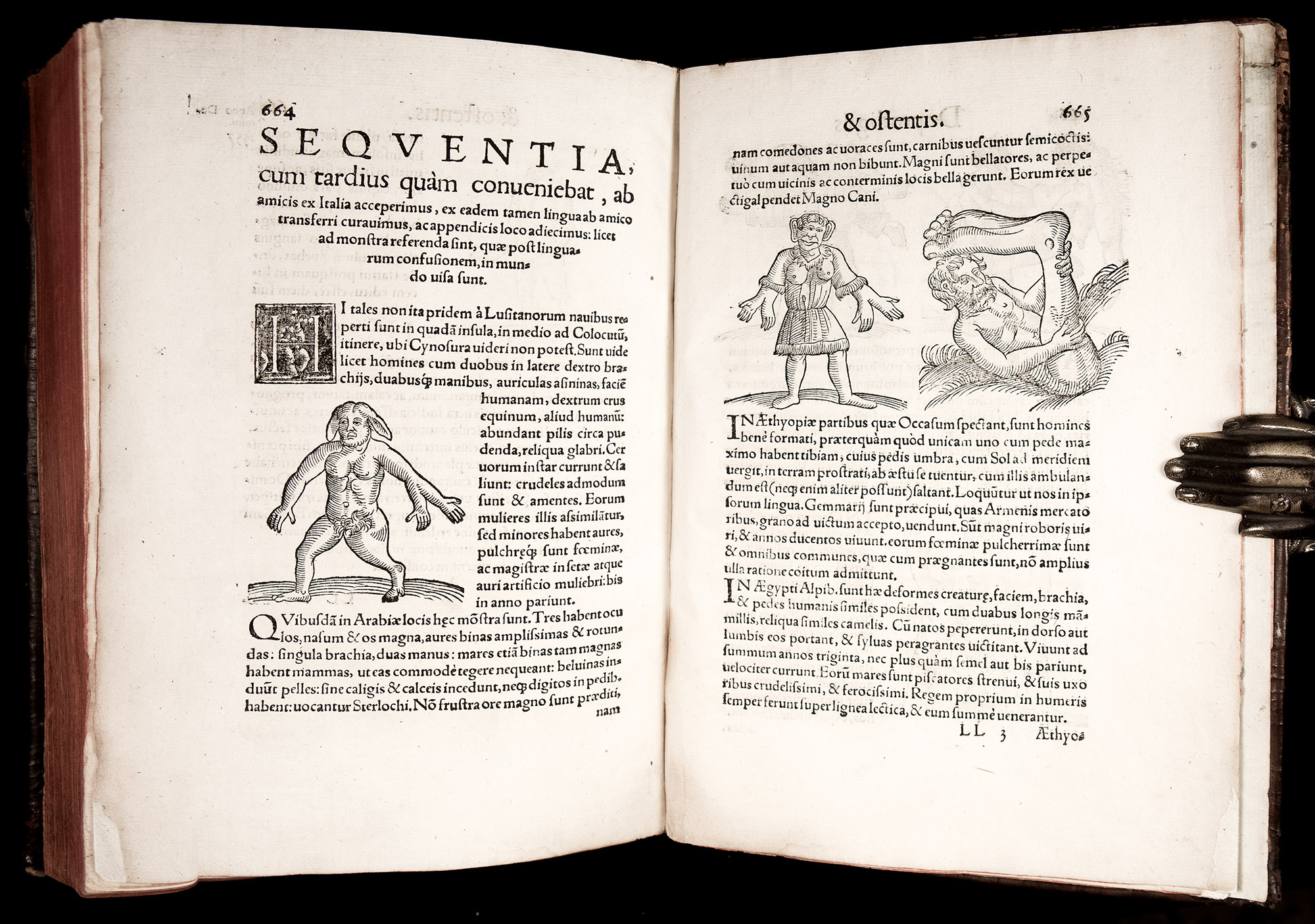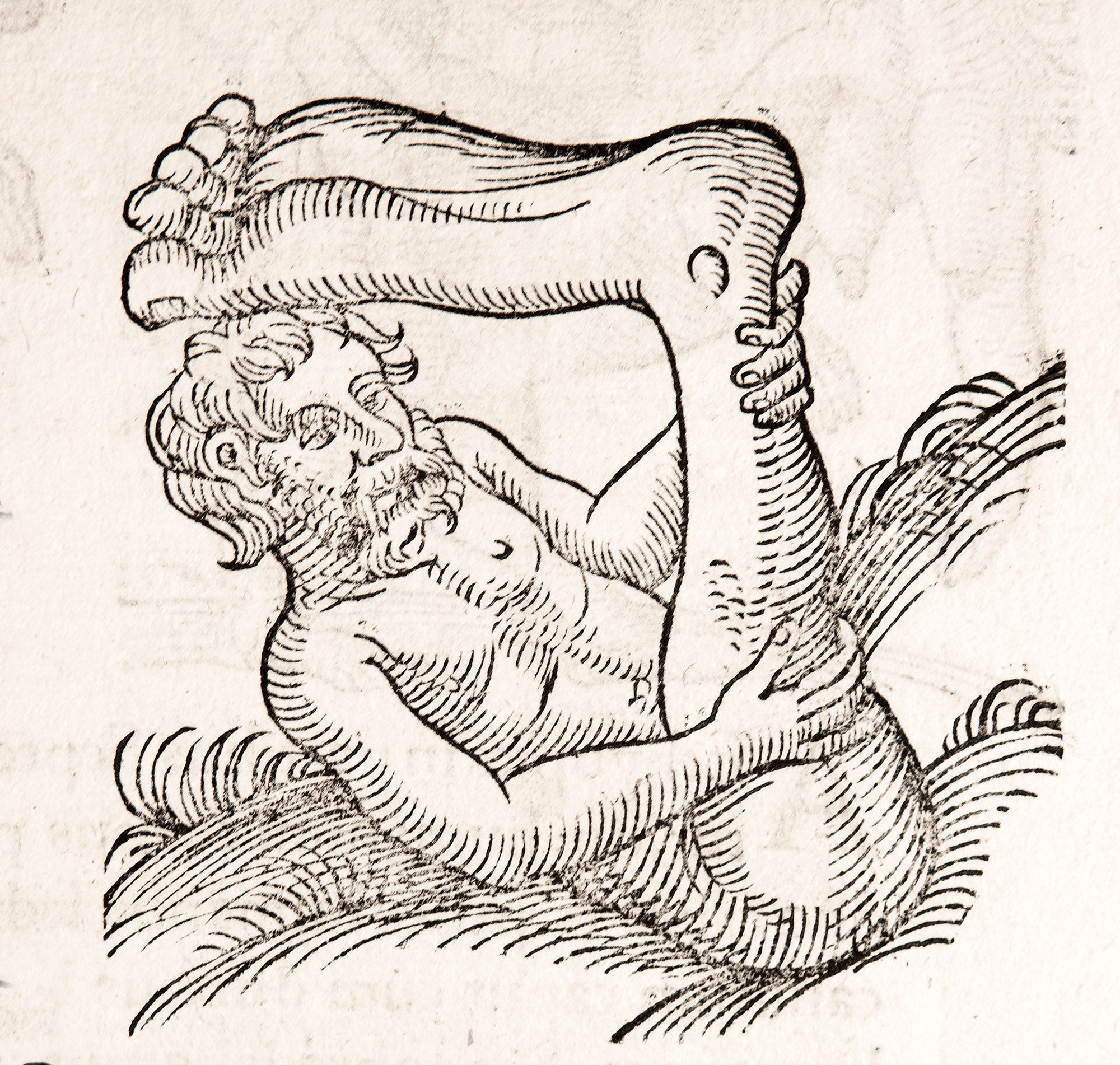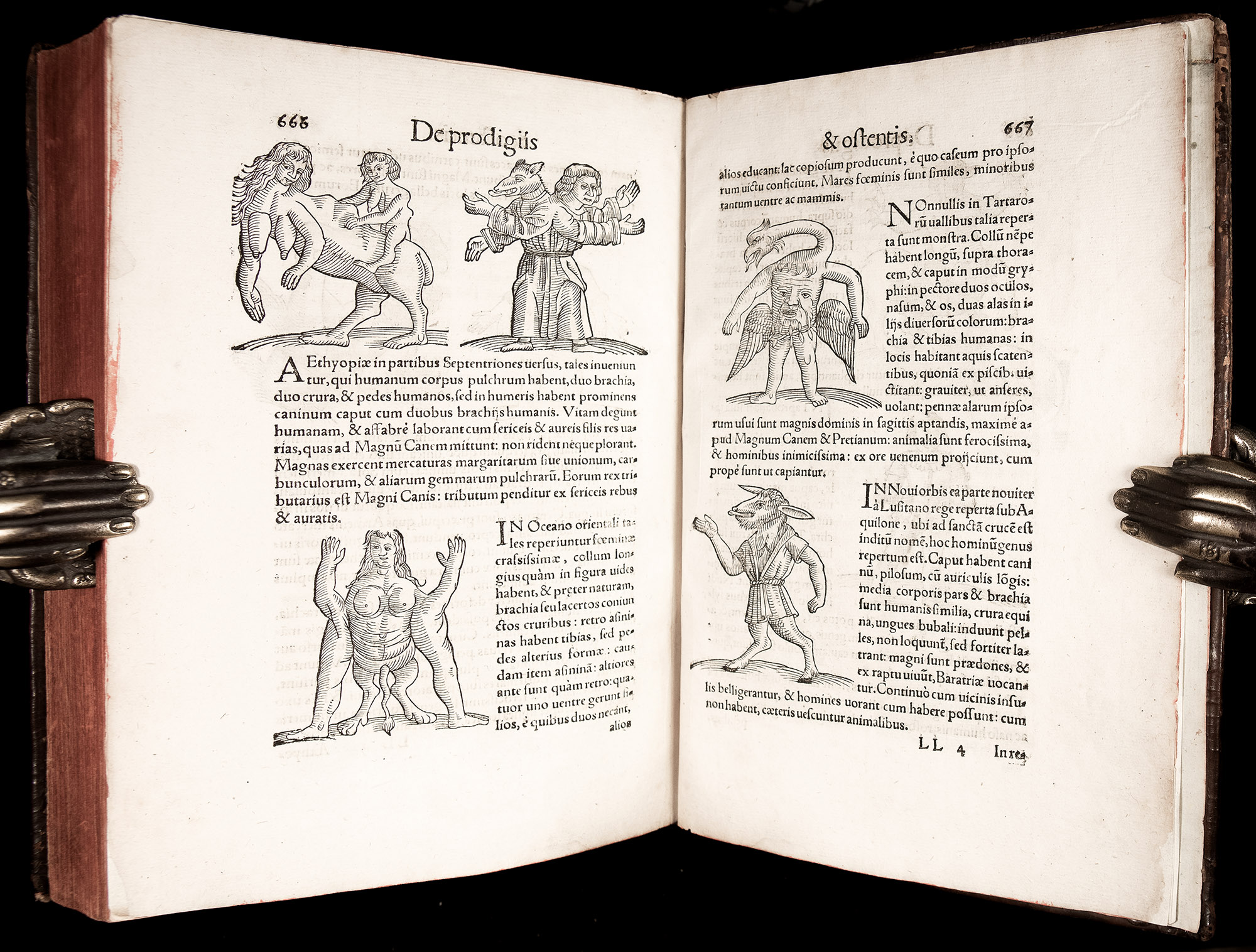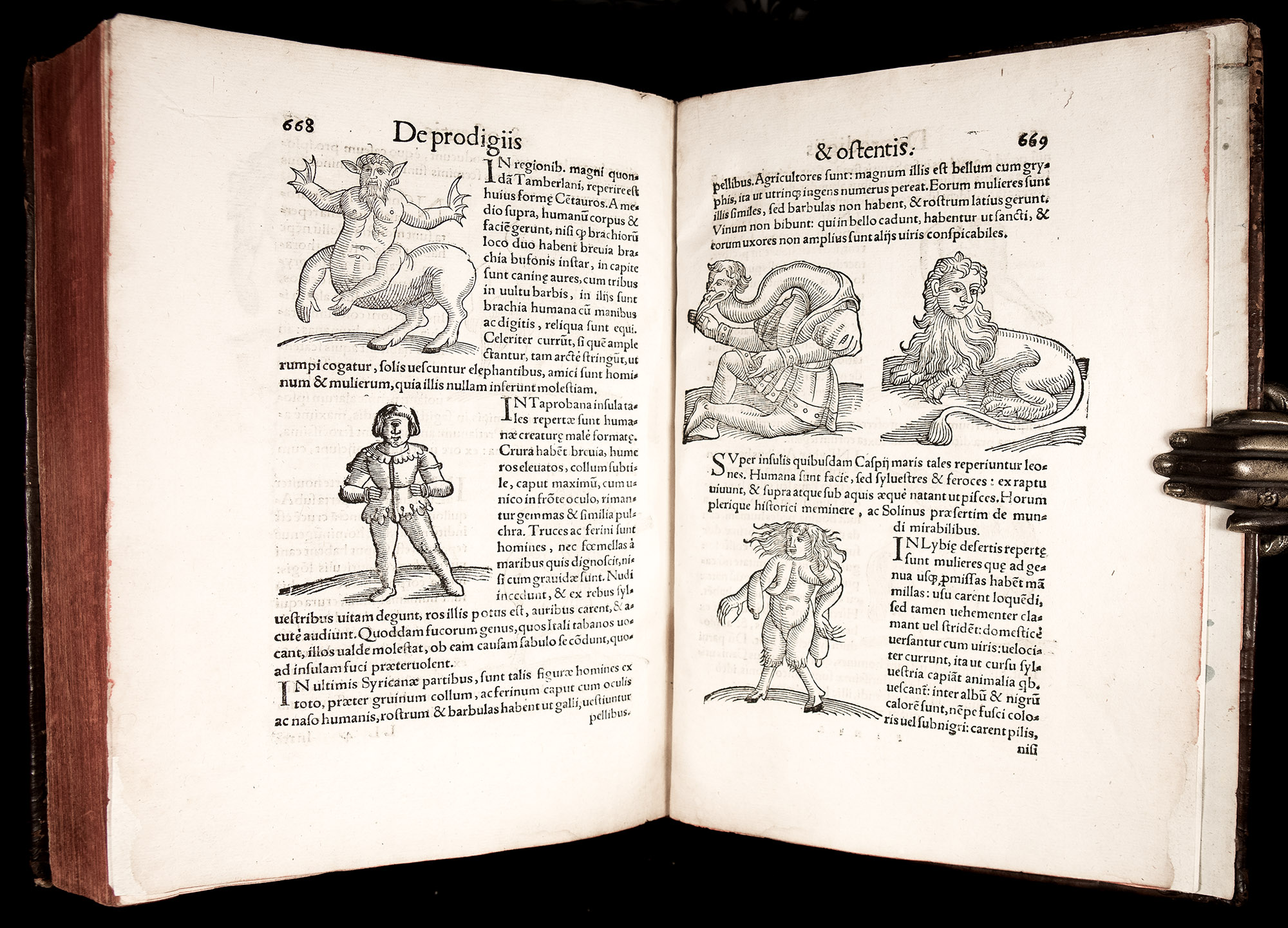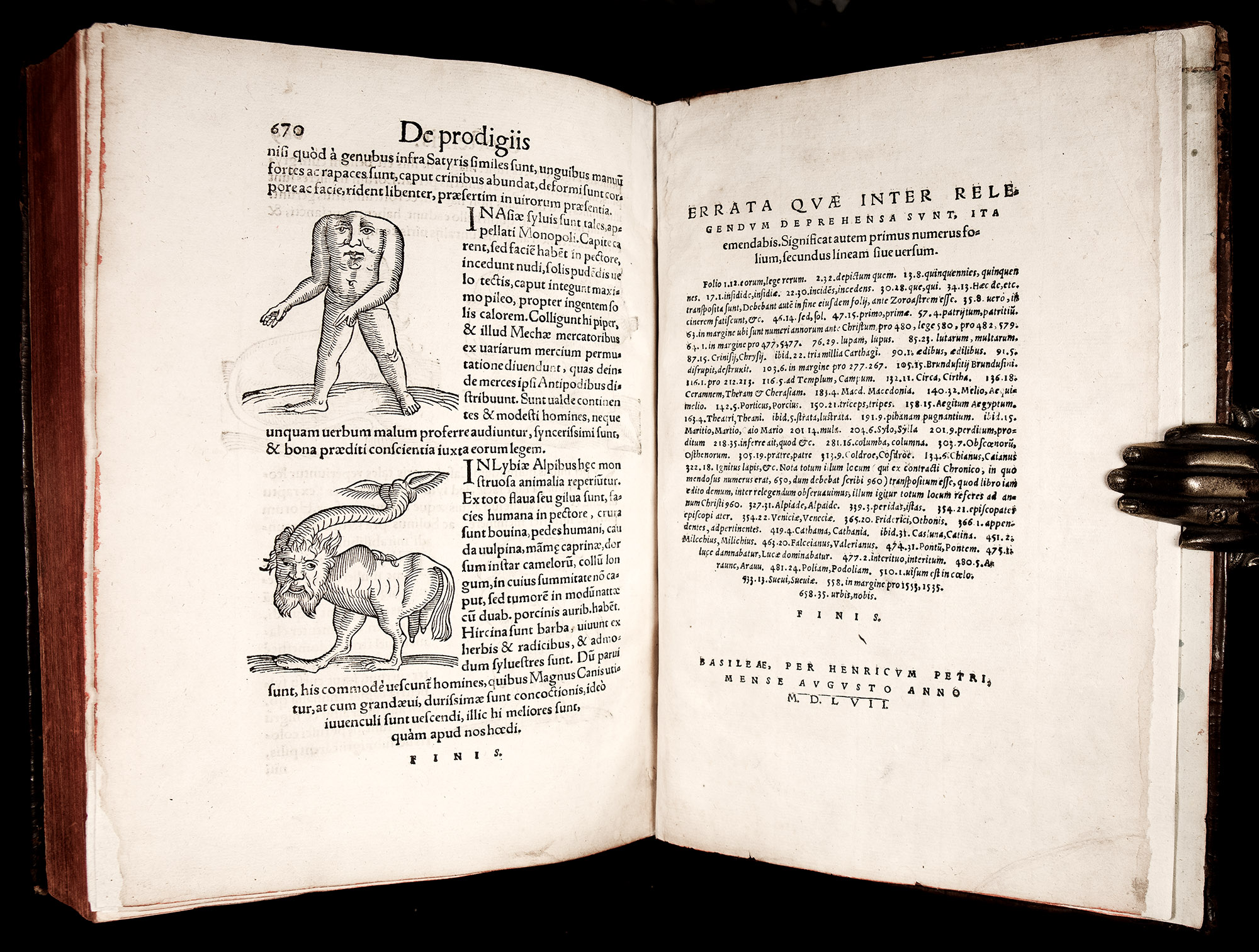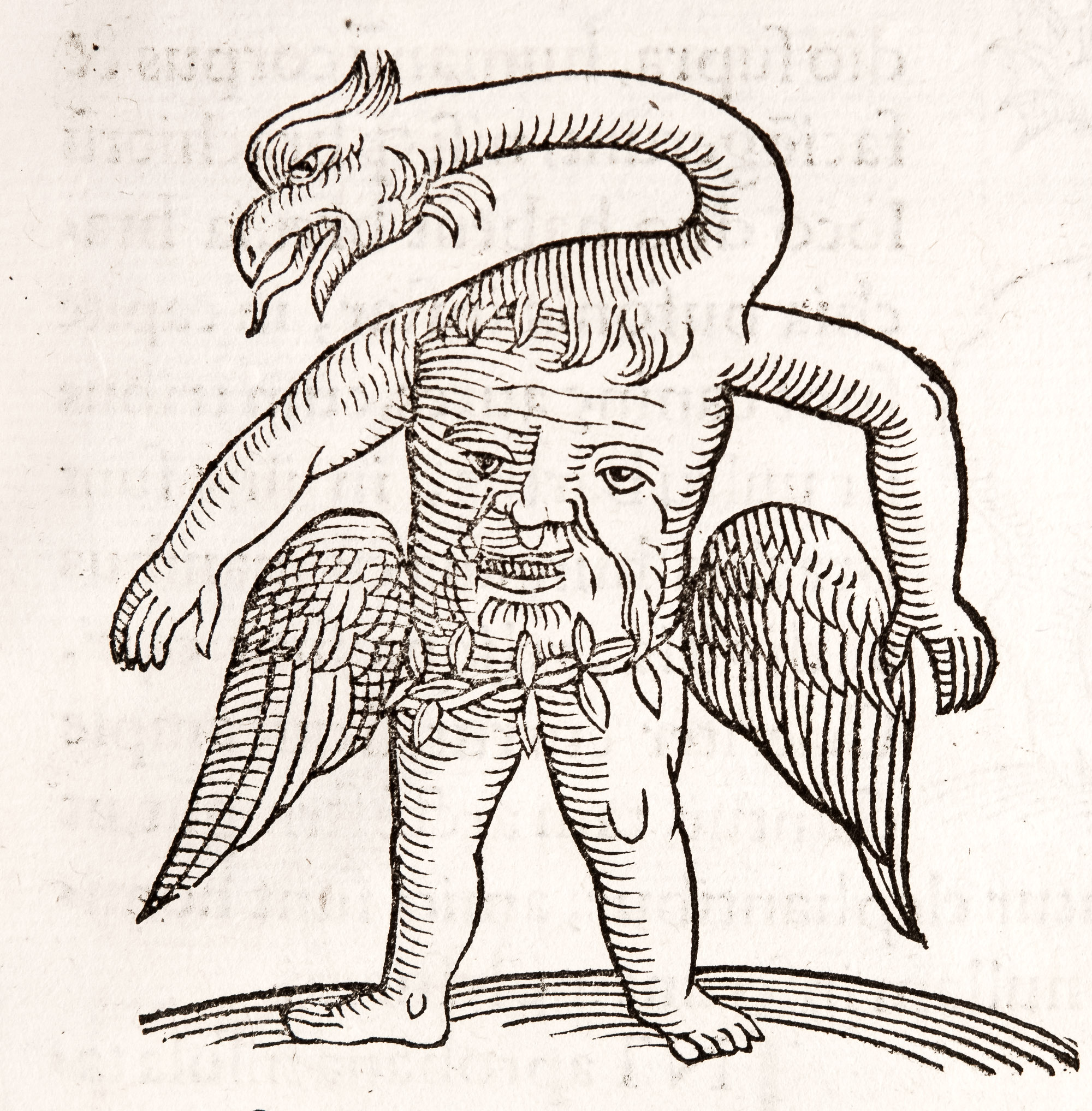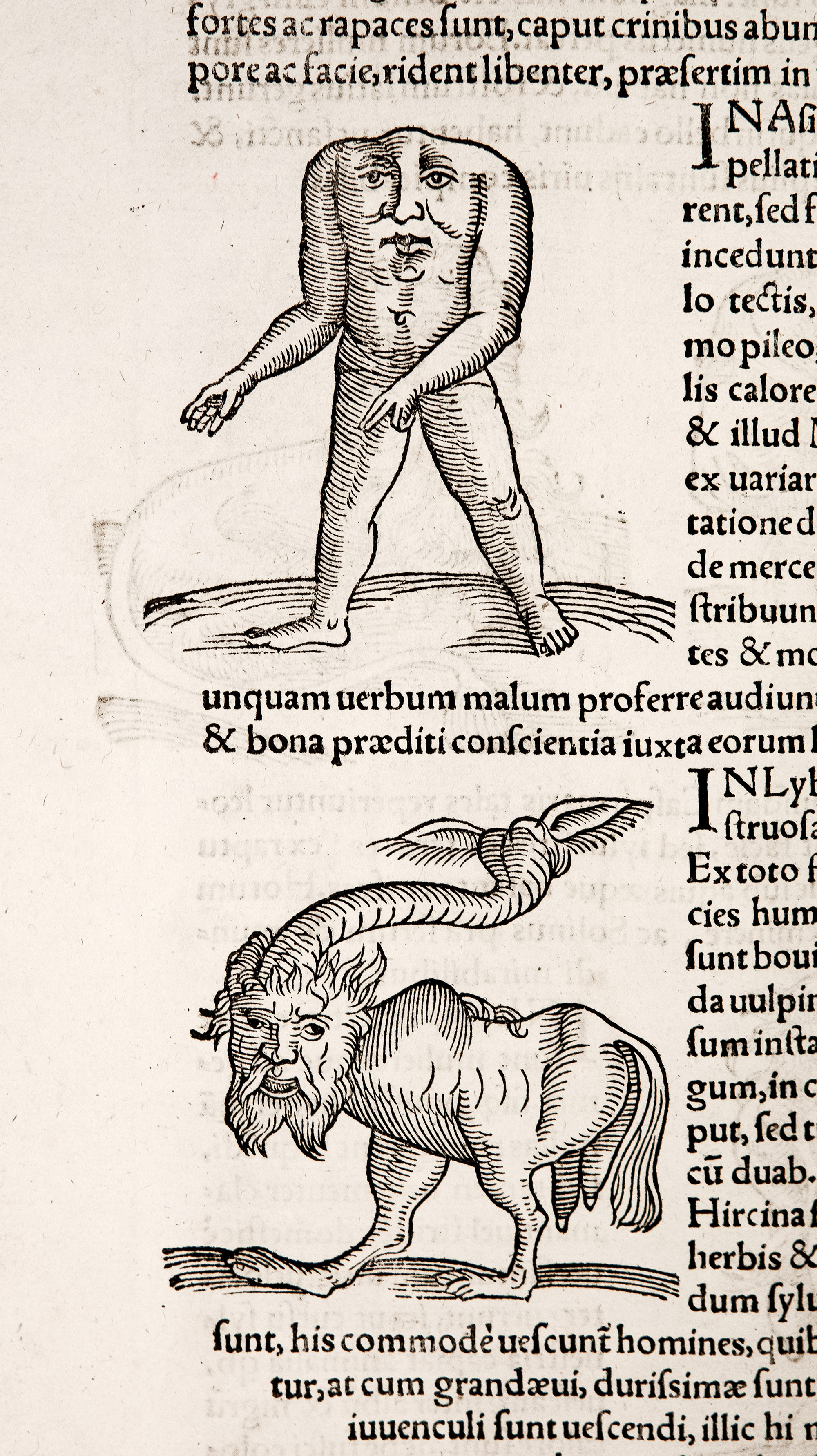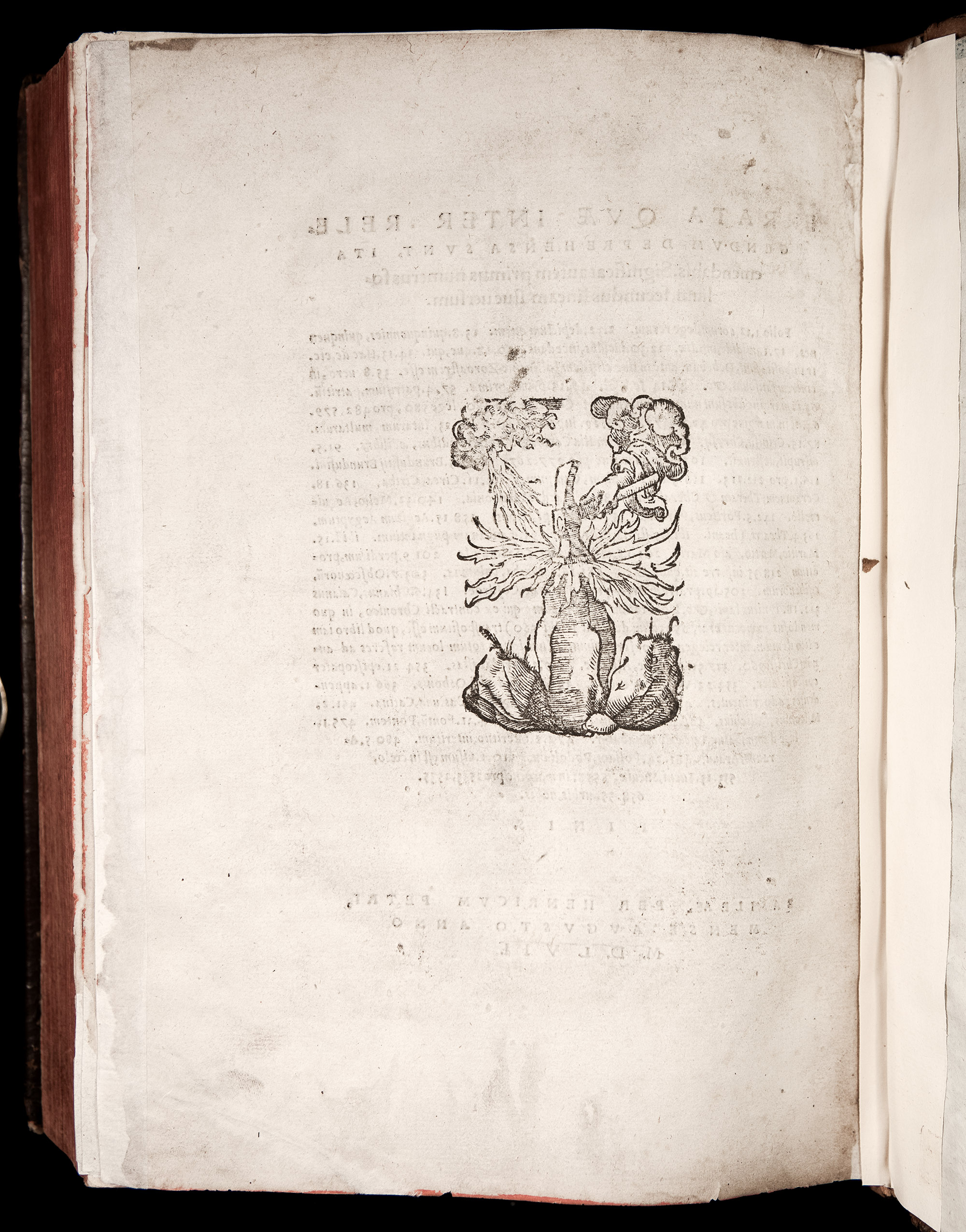
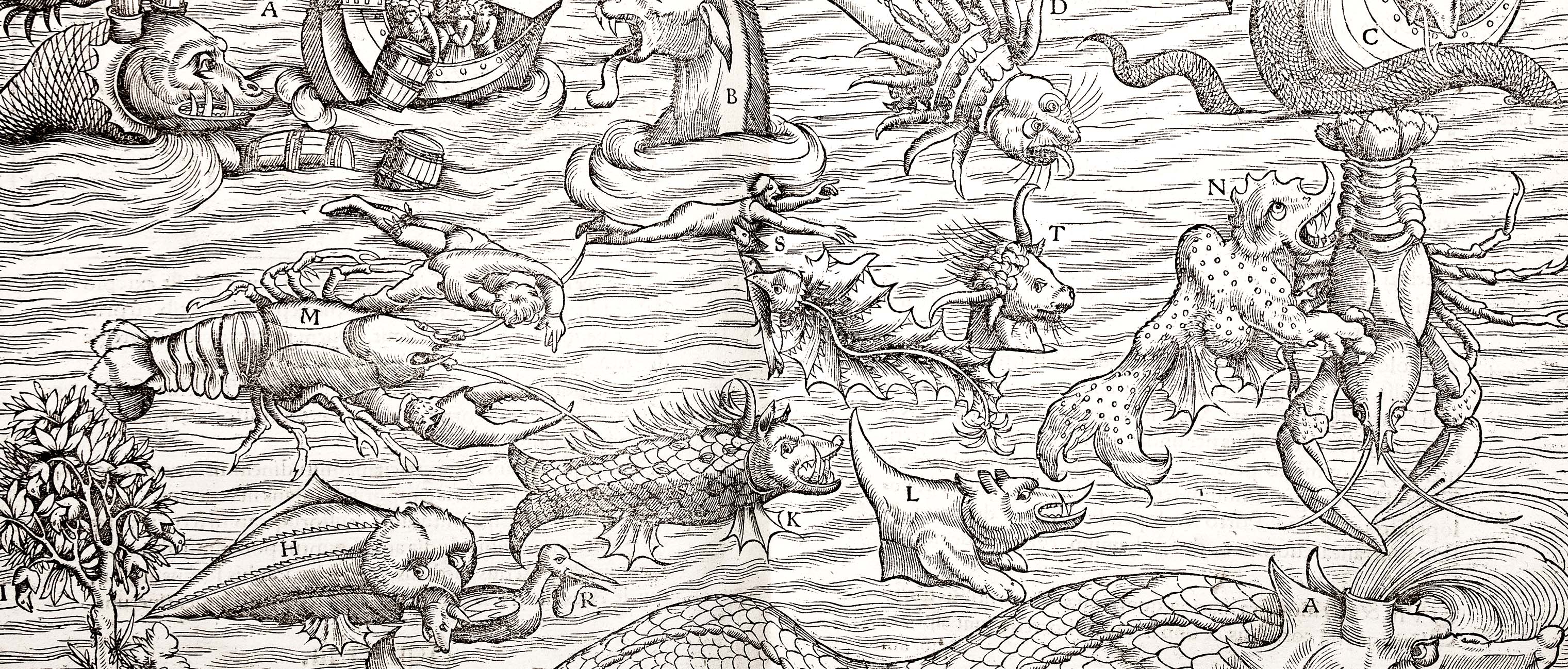
[Early Illustrated Books - 16th century] [Occult & Paranormal] [History of Science] [Monsters]
$8,750
Printed in Basel by Heinrich Petri, August 1557. Text in Latin.
"This encyclopaedic chronology of portentious events in human history includes many monstrous births, both human and animal. Actual cases are uncritically mingled with mythical creatures." (Morton's Medical Bibliography).
RARE and sought after First Edition edition of this fascinating and influential "wonder book", a chronicle of strange events from the beginning of time to the present day, profusely illustrated with about 1600 stunning woodcuts.
The Prodigiorum ac ostentorum chronicon... ab exordio mundi usque ad haec nostra tempora [i.e. "Chronicle of Omens and Portents ... from the beginning of the world up to these our present times"] presenting a massive anthology of omens, portents and prodigies, was compiled by the Swiss philosopher, theologian and professor of grammar Conrad Lycosthenes, aka Konrad Wolfhart (1518-1561).
This magnificent and fascinating Folio is, arguably, the most comprehensive early work on natural and supernatural disasters, all sorts of inexplicable phenomena, abnormalities and monstrosities. It collects hundreds of omen reports spanning the whole of known history (up to the time of publication). Floods and rains of unatural objects, fires and earthquakes, comets and other aerial phenomena, plagues and pestilence, birth deformities and monsters (multiple limbs, double heads, Siamese twins, etc.) exotic animals, supernatural creatures and monstrous animal-people, and even a UFO over Arabia in the 15th century! Most reports are illustrated!
"'Wonder books' were compendia of natural (or more usually unnatural) phenomena of interest for their rarity as well as their meaning. The first to contain new material collected after 1500 was the work of Conrad Lycosthenes [entitled] Prodigiorum ac ostentorum Chronicon. [...] The book is a history of the unusual told vividly and anecdotally, and while it adheres to a relatively strict chronology there is no attempt to identify underlying trends, draw conclusions (the job of the reader), or even to note similar incidents that occur in the course of the work. [...]
"Like most books of the time, which were expensive to produce, Lycosthenes' Chronicon had to appeal to a fairly wide readership in order to sell sufficient copies to make a profit. Wonders were a subject of general interest and [...] It had over 1,500 woodcuts (including repeats), three or more to a page, making it one of the best-illustrated books of its time; the range of sources consulted was also unusually wide [...]. Obviously, Lycosthenes' principal source was Obsequens, but he included a detailed list of additional Greek and Roman classical sources and scores of more recent ones such as Stow's annals and the 'chronicles' of Meissen, Polen, Brabant, Saxony and other parts of Germany. A source of illustrative material was Sebastian Münster's Cosmographia with which, as Wilson pointed out, Chronicon shared a publisher. The results of Lycosthenes' extensive reading were placed in chronological order and vividly recounted." (Alan W. Bates, Emblematic Monsters: Unnatural Conceptions and Deformed Births in Early Modern Europe, p.67)
The book's more than 1500 stunning woodcuts of disasters, horrors, marvels and monsters make the Lycosthenes book far and away the best and most comprehensive collection of its type, and one of the most famous and fascinating illustrated books of the Renaissance!
Several of the book's woodcuts are by the Swiss artist Rudolf Hans Manuel Deutsch (1525 - 1571) and David Kandel (1520 - 1592), among whose contributions is the famous cut of "Rhinoceros" on p.18 (repeated on p.518). The Rhinoceros woodcut (which was later used in the 1559 edition of Sebastian Munster's Cosmographia) is closely based on the Albrecht Dürer's remarkable sketch of a rhinoceros. Dürer had never actually seen a rhino, but based his depiction on accounts of a rhinoceros sent as a gift to King Emmanuel of Portugal by King Muzafar of Cambodia, who then forwarded it as gift to the Medici Pope, Leo X. Unfortunately on the journey to Rome the ship carrying it was wrecked and the animal lost. It did, however, achieve an immortality of sorts through Dürer's work, and was to influence depictions of all species of rhinoceros for at least two centuries. Manuel Deutsch is known to have designed greatly acclaimed topographical views of cities for Sebastian Munster's Cosmographia as well as seven of the woodcuts for the first modern book on mining, George Agricola's De re metallica.
The striking double-page 'centerfold' woodcut on pp.24-25 presents a large variety of aquatic and terrestrial animals including assorted sea-monsters, some shown attacking ships. Many of the woodcuts of various human monsters illustrating this book later appeared in Ambroise Pare's works.
The Lycosthenes' book is also significant as one of the earliest collections of what would now be called 'UFO sightings', including the following account from ancient Rome of 393 A.D.:
"Strange lights were seen in the sky in the days of the Emperor Theodosius. On a sudden, a bright globe appeared at midnight. It shown brilliantly near the day star (planet, Venus), about the circle of the zodiac. This globe shown little less brilliantly than the planet, and little by little, a great number of other glowing orbs drew near the first globe. The spectacle was like a swarm of bees flying round the bee-keeper, and the light of these orbs was as if they were dashing violently against each other. Soon, they blended together into one awful flame, and bodied forth to the eye as a horrible two-edged sword. The strange globe which was first seen now appeared like the pommel to a handle, and all the little orbs, fused with the first, shone as brilliantly as the first globe."
On page 494 there is a remarkable woodcut showing a flying object resembling a spaceship seen over Arabia in 1479, also described are early sightings of Halley's comet.
The book was published in Basel (Switzerland) in 1557, when Michel Nostradamus was in the very midst of writing his Prophecies. Nostradamus was evitently familiar with the Prodigiorum ac ostentorum chronicon and borrowed several omen-reports directly from the Lycosthenes's book.
Much of Lycosthenes' Chronicle was subsequently translated into contemporary English by Dr Stephen Batman in his hugely popular 'The Doome, Warning to All Men' of 1581, which supplemented it with further reports gleaned by Batman mainly from England, especially during the 24 years that followed the publication of Lycosthenes' book.
Conrad Lycosthenes (1518 - 1561) was a noted humanist and an encyclopedist, born Konrad Wolffhart in Rouffach in Alsace on August 8, 1518. He later changed his German name, Wolffhart, to its Greek equivalent Lycosthenes. From 1535 to 1539, Conrad studied philosophy in Heidelberg. In 1542, he left Heidelberg for Basel where he began teaching Grammar and Dialectics. In 1545, at the age of 27, he became Deacon in the Church of Saint-Leonard. On December 21 1554, he suffered from hemiplegia and lost the ability to use his right hand. He learned to write with his left hand and continued his literary works until his death from apoplexia at the age of 43.
In 1552 Conrad Lycosthenes had published the first separate edition of Julius Obsequens, a Latin writer on prodigies (c. 400 AD) who arranged his material chronologically, drawing in large part on Livy. This work had proved popular and, building on this foundation, Lycosthenes undertook the present work. Believing, as he did, that prodigies or portents had a religious significance, he states in his preface that these portents are not purely fortuitous, but show "God's anger and severity towards crimes, and fortell great changes ("vicissitudines") in the world".
Lycosthenes begins with the serpent talking to Eve and carries his narrative up to the year 1557, with the recent evens receiving particularly detailed treatment (some sixty pages being devoted to the years 1550-1557). "Of thirty-four sixteenth-century monsters mentioned in Lycosthenes' Chronicon, twenty-one occurred within the ten years prior to the book's publication; most of these were from Germany, and a few from Switzerland and Italy. [...] Lycosthenes was on the lookout for monsters, and at a time when many people wanted to exhibit their own or their children's deformities for profit, it would not have been too difficult for someone collecting examples for a book to see a few for himself. 'I saw also the like monster in Bavaria,' Lycosthenes said of a two-headed woman. Paré wrote that this was the same monster seen by the Italian philologist Lodovico Ricchieri and described in his Antiquarum Lectionum, which indicates that she lived for at least twenty years, perhaps making a living by begging door-to-door. [...] Lycosthenes relates of her time in Bavaria that she was moved on by authorities fearful of further monsters being engendered in pregnant women who saw her." [...]
"Some of [Lycosthenes'] books were condemned by the Council of Trent, and in his Chronicon, he reiterated his criticisms of the Church and the papacy. In some ways it can be seen as an apocalyptic or even a millenarian work, promoting the belief that the Last Days were approaching. Although Lutherans publicly disowned millenarianism (in the Augsburg confession of faith in 1530), they had other reasons to be interested in wonders. [...] Nature was to Lutherans, and even Calvinists, 'God's great book in folio', and they mined its meaning as they did the holy scriptures." (A. W. Bates, op. cit., p.68-9)
Physical description:
FOLIO. Textblock measures 283 mm x 197 mm. Bound in 17th-century calf (rebacked in modern leather, retaining the original gilt-lettered spine label); gilt dentelles to board edges; marbled endpapers; edges rouged.
Pagination: [12], 670, [2] pp.
Signature collation: a4 b2 A6 B-C4 D-Z6 Az-Zz6 AA-II6 KK4 LL6.
COMPLETE.
Profusely illustrated with about 1600 (with some repeats) woodcuts including a large woodcut on the title-page, a double-page woodcut of sea with various sea-monsters on pp.24-25, and a full-page map of Sicily and part of the Mediterranean (p.178). Some of the woodcuts are by H.R. Manuel Deutsch and David Kandel. Woodcut printer's device on verso of final leaf, woodcut initials.
Preliminaries include author's dedicatory epistle and a list writers both ancient and modern whose work was consulted in this work ('Catalogus omnium autorum ex quorum scriptis...').
Errata and colophon ('Basileae, per Henricum Petri, mense Augusto anno M.D.LVII') on recto of last leaf (LL6r) with printer's woodcut device on verso (LL6v).
Provenance:
With an armorial bookplate (to front pastedown) of John Towneley (1731-1813), a prominent English book collector from an old Catholic Lancashire family. John was the second son of Richard Towneley (1689-1735), who was arrested in 1716 and charged with high treason for allegedly supporting the failed Jacobite rebellion of 1715. John's massive collection included the Towneley Cycle. In 1786, his uncle George left him the Leighton estate, which he had greatly improved. In 1792 he inherited the Widdrington's Stella estates through his mother. He was a trustee of British Museum, and in 1797 was elected as a fellow of the Royal Society of London. Towneley's library was dispersed in a series of sales in the 1810s, and catalogued in Bibliotheca Townleiana. A Catalogue of the Curious and Extensive Library of the late John Towneley, London, 1814-7.
Condition:
Very Good antiquarian condition. Complete. Binding slightly rubbed, some wear to edges; sympathetically rebacked in modern leather, retaining the original gilt-lettered label (laid down over new spine), and preserving old marbled endpapers (and even older front fly-leaf), with an 18th-century owner’s armorial bookplate to front pastedown. Rear hinge reinforced. Title-page slightly soiled and with minor chipping along fore-edge; very neatly backed with old paper at an early date. Occasional light soiling, mostly marginal. Preliminaries with some marginal water-staining to lower fore-corner; somewhat broader (but rather light and harmless) water-stain to bottom portion of some leaves towards the end of the volume (beginning at about p.480). Last four leaves with very minor and harmless marginal repairs (not affecting any text or illustrations). In all, a very clean, solid, wide-margined example of this fascinating, desirable and scarce work!
Bibliographic references:
Adams W-250; Graesse IV 310; Caillet 11470; Garrison-Morton 534.50; Durling, NLM, 2878; Wellcome Cat. I, 3917; Zinner, 2177.
